
Home » Travel Guides » 15 Best Places to Visit in Estonia

15 Best Places to Visit in Estonia
The last truly European nation before the great swathe of Russia takes over in the east, Estonia offers travelers a fascinating mixture of Slavic, Russian, Scandinavian and altogether unique local cultures. It ranges from the beautiful, windswept coastlines of the Baltic Sea and the Finnish Gulf to the rolling forests around Tartu in the south, and offers up some amazing and wondrous destinations along the way.
Lets explore the best places to visit in Estonia :

The mighty rises of Toompea Hill are what define Estonia’s magnificent capital ; soaring in a curious medley of Orthodox onion domes and medieval bulwarks right in the heart of the town. Below this sprawls one chocolate box of a walled city, where stony streets and shadowy alleyways open up onto an enthralling market square and curiously-named keeps like ‘Fat Margaret’ soar above the crenulated fortifications.
Given the UNESCO tag, the glorious array of historical monuments and the buzzing collection of shops, beer halls and Estonian eateries, it’s hardly surprising that this one’s on the up as one of Europe’s most coveted capitals. And that’s not even mentioning the bohemian streets of Kalamaja, or the palaces and parks of the Kadriorg district!

Nestled neatly on the edge of its very own little coastal inlet on the Gulf of Riga, Parnu comes complete with one of the Baltic’s best stretches of pearly-white sand. It’s backed by the all-new and indelibly lively Beach Promenade, where babbling fountains abut al fresco restaurants and the courses of a truly excellent bike track.
And in the centre of the town itself, the remnants of an Art Deco boom in the 20s add a real dash of class to the resort, spas rise unexpectedly on the street corners, Ruutli Street beats to a night time tune, and charming timber villas dot the outskirts. In short: this one’s every inch Estonia’s summertime capital!

In the warmer months of the year, Otepaa draws in modest crowds of hikers and mountain bikers to the winding trails of Valga County, for strolling through the thick fir forests and walking around the banks of Puhajarve Lake. However, it’s when the snows come that this self-proclaimed winter capital of Estonia really hits its stride.
Nordic ski tracks delve deep into the woods, the ski jumps roar with local cheers and the various downhill alpine runs offer a smattering of beginner and intermediate pistes. Aside from the outdoors action, Otepaa also boasts one gorgeous church spire and the crumbling remains of an aged citadel for the history buffs.
4. Soomaa National Park

The flooded forests and mystical bayous of the Soomaa National Park represent unquestionably one of the most beautiful and enchanting destinations in all of Estonia. All-in-all the site encompasses a whopping 359 square kilometers of undulating dunes and low-lying peat bogs, which oscillate between ochre-brown, verdant green and ice-caked white with the changing of the seasons.
Unsurprisingly, ecotourism has boomed here in recent years, and today outdoorsy travelers and intrepid types flock here to hit the water capillaries of the Raudna River and Parnu Basin on canoes and kayaks, or to hike the alluvial meadows in the company of cranes and crooked wooden farmhouses.
5. Saaremaa Island

Much-vaunted Saaremaa Island is right up there with Tallinn; an impossibly wonderful landscape of washed-out timber windmills and breezy meadows, sprawling spruce forests and gorgeous coastal stretches scented with juniper and Baltic salt.
Walkers and outdoorsy types will love getting lost in the orchid-peppered reaches of Loode, wandering between the mysterious Kaali meteorite craters, beautiful Bear Lake and the hot springs of Puhatu, or bracing the sea winds at the sacred Panga clifftops. The local Saaremaa folk add a dash of nuance to the land too, boasting their own folklore and curious traditions, deeply ironic sense of humour and high-quality vodka to boot!

Straddling the border with Russia in the deep eastern recesses of Estonia, Narva has an altogether different character than the other major urban areas in this Baltic land. For one, the locals overwhelmingly speak Russian, and the character tends to lean eastwards to Moscow rather than westwards to Tallinn and the EU. Hermann Castle is the jewel in the Narva crown, standing tall and proud in whitewashed keeps and stony bulwarks above the city, while the brutalist reconstructed centre offers an interesting taste of the indelible Soviet influence.
And then there’s the nearby resort strips of Narva-Joesuu, which come complete with the longest beach in the country and some acclaimed spas to boot.
7. Matsalu National Park

A truly beautiful patchwork of riparian wetlands, reed grass plains and blooming flood meadows on the courses of the Kasari River Delta, the Matsalu National Park is a veritable wonderland for nature lovers and wildlife seekers making their way through Estonia.
The 400-square-kilometer park’s birds are particularly famous, coming complete with endangered species like the white-tailed eagle, colossal flocks of barnacle geese, tufted ducks and the single largest migrating amount of cranes on the continent (which can be seen stopping by here in Autumn). Wild horses can also be spotted grazing amidst the wetlands, roaming between the timber fishing huts and the tracks of the Suitsu hiking trail.
8. Hiiumaa Island

A lesson in all things rural Estonia, Hiiumaa is the second largest island in the country, found rising in a medley of windswept coves and coastal fir forests from the Baltic Sea and connected by Europe’s longest ice road to the mainland by winter. Travelers heading here often make a beeline straight for the coast, which comes virtually completed secluded and peppered with historic lighthouses like the stone-clad Kopu Lighthouse – one of the oldest on the planet.
Meanwhile, in the island’s inland reaches, crooked timber farmhouses and creaking mills meet dense beech forests at the Suuremoisa Park and smoked plaice fillets issue their enticing aromas from the earthy tavernas.

Tartu may officially be Estonia’s second city, but the locals prefer to see themselves more as joint first. Fiercely independent from the much larger capital in the north, this southern stronghold of students and Russian speakers is known for its intellectual accomplishments above all else. It has the most prestigious university in Estonia, which rises in a series of neoclassical columns right in the midst of the town.
Nearby stands the leafy reaches of Toomemagi; the historic citadel of the city where now the ruined nave of Tartu Cathedral exudes a haunting historicity. Tartu also pulses with youthful energy thanks to its many lecture halls, and al fresco beer bars and underground clubs claim the summertime nights.

Traces of human habitation dating back more than three millennia have helped to make Tuhala one of Estonia’s major historic sites; a place offering a glimpse at the centuries before Tallinn’s great medieval bulwarks were even raised. Yes sir, this earthy region is home to mysterious collections of cult stones and ancient religious statues, curious cup-marked carvings and sacred sites oozing pre-Christian traditions.
There are also aged timber roads dating from the fourth century, and – of course – the legendary Witch’s Well – a unique phenomenon that occurs when the subterranean channels of the region’s karst system bubble up and overflow from a rustic well into the surrounding farmlands.
11. Kuressaare

The pretty, castle-topped town of Kuressaare makes its home on the Estonian (as opposed to the Finnish) edge of Saaremaa Island, where it hails in as the westernmost city in the country. Given the unique geography, it’s hardly surprising that this one oozes Germanic and Swedish influences, going from the Teutonic bulwarks of the mighty citadel to the elegant Baroque traces decorating the municipal buildings on Keskvaljak Square.
Kuressaare is also famed for its coastal spas, which extoll the healing virtues of the seaside mud and silt deposits and helped to make the city a favourite with naturalist and ecotourists over the years.
12. Viljandi

A boomtown of the Hanseatic League, Viljandi once boasted one of the largest merchant town fortifications in the entire Baltic region. Its raison d’être? To secure the popular trading routes between the heartlands of Prussia in the west and Russia in the east.
Today, and the citadel that once made Viljandi so strong stands ruined atop the town, surrounded by the blooming green spaces that line Lake Viljandi; groves of birch and oak, parks dotted with pine and the pretty timber houses that hide amidst the tree-lined streets. This is the perfect backdrop for Viljandi’s many summertime festivals, which range from nostalgic medieval fayres to open-air theatre productions and ad hoc public art displays.
13. Lahemaa National Park

A whopping 725 square kilometers make up the wild, pine-studded hinterlands of the Lahemaa National Park, making this one of the largest protected natural areas in all of Europe. Sandwiched between the salty rollers of the Baltic and the highways that run eastwards out of Tallinn, the area is eminently accessible for travelers based in the capital, and offers a fine antithesis to city life.
There are rolling peat bogs to explore, winding boardwalks, dense thickets of spruce and beech trees, the primeval Oandu Forest (the stomping ground of lynxes and wolf packs) and the majestic Hauaneeme Bay, which can be found glowing pink and mirror-like against the Estonian sunset in the evening.
14. Haapsalu

Hailed by some as the Venice of the Baltics and trodden by the mighty Romanovs during Russia’s imperial age, Haapsalu was raised to prominence under the patronage of the tsars, who came to exploit the curative and medicinal powers of its coastal mud spas.
Today and this tradition of bathing is still very much alive, while other visitors will come to stroll down the seaside promenades as the sun sets over the Finnish Gulf, weave between the elegant timber architecture, gawp at the haunted turrets and bulwarks of Haapsalu Castle, enjoy one of Estonia’s most acclaimed blues and jazz festivals in summer, or purchase some of the famous handwoven Haapsalu shawls.
15. Lake Peipus

Straddling the border with Russia in the depths of Southern Estonia, Lake Peipus remains one of the country’s least-trodden and explored areas. It’s famed for the traditional way of life that continues to tick over around its western shores.
Here, strings of pretty, timber-clad villages like Varnja and Kallaste abut empty lakeside coves at Nina and Lahe. These come interspersed with the occasional sprawling estate, and enfolded in great swathes of onion fields, while ad hoc farmer’s markets abound and the mysterious churches and religious traditions of Estonia’s so-called Old Believers still stand firm.
15 Best Places to Visit in Estonia:
- Soomaa National Park
- Saaremaa Island
- Matsalu National Park
- Hiiumaa Island
- Lahemaa National Park
- Lake Peipus

Touropia Travel Experts
Discover the World
10 Best Places to Visit in Estonia

Located in Northern Europe, Estonia is a largely underrated gem. In addition to being affordable for travelers, Estonia boasts medieval cities, scenic coastlines and a fascinating history. Bordered by Russia, Latvia, the Gulf of Finland and the Baltic Sea, Estonia is also more accessible than many travelers expect. Among the best places to visit in Estonia are castles, national parks and cultural hotspots. Tallinn is amazing, but it’s not the only Estonian destination worth exploring!
10. Viljandi [SEE MAP]
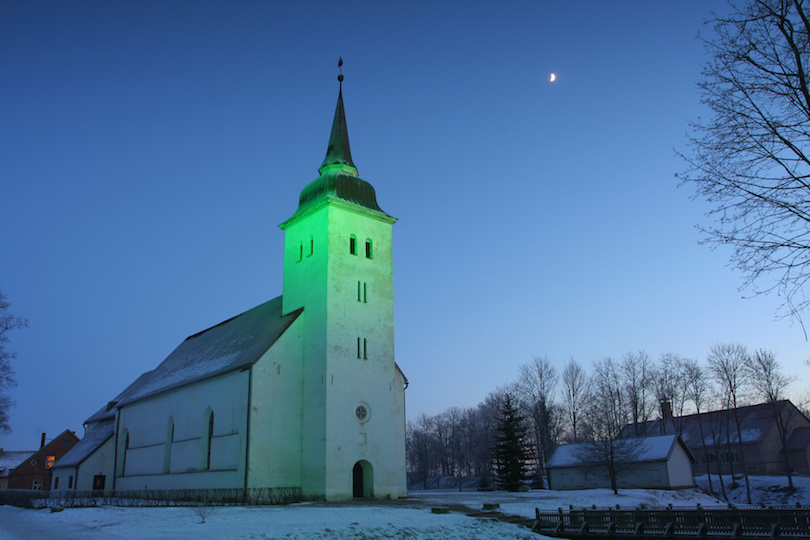
In Southern Estonia is the small city of Viljandi. The city has a rich history that is nearly 2,600 years old, and plenty of historic architecture still remains. The 16th century ruins of the Viljandi Order Castle, for example, are a major attraction. The biggest reason to visit Viljandi, however, is the annual folk music festival. Every July, the city attracts as many as 20,000 visitors who come specifically for the folk music. Dozens of concerts are held in every venue imaginable, and the event is the largest music festival in the entire country.
9. Soomaa National Park [SEE MAP]
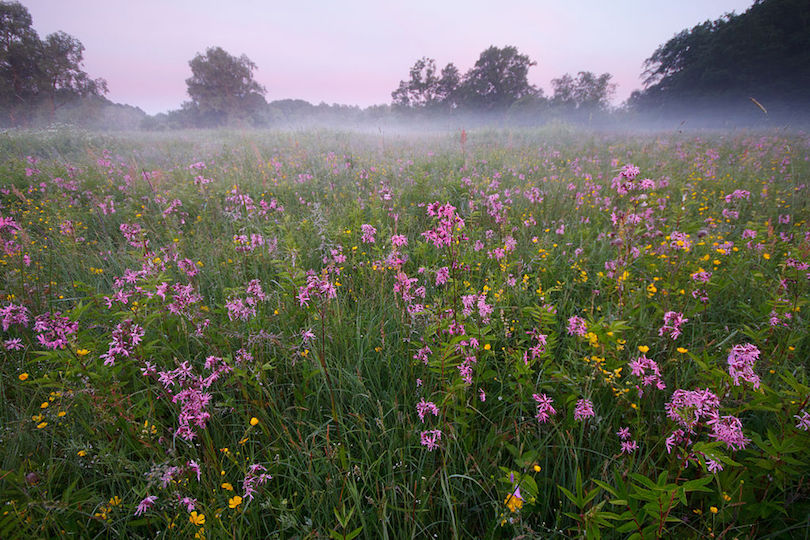
Soomaa National Park is a fascinating destination. Primarily a peat bog formed as a result of glacier melt from more than 10,000 years ago, Soomaa National Park is cut by several beautiful rivers. The best way to explore Soomaa is with a canoe. You rent canoes or join a self-guided tour, and as you paddle you’ll be able to spot deer, elk, boars, beavers, golden eagles and more. Canoeing is especially popular in the spring, or what locals call the fifth season. During this time of year, water levels rise substantially, and boats are sometimes the only way to get around.
8. Rakvere Castle [SEE MAP]
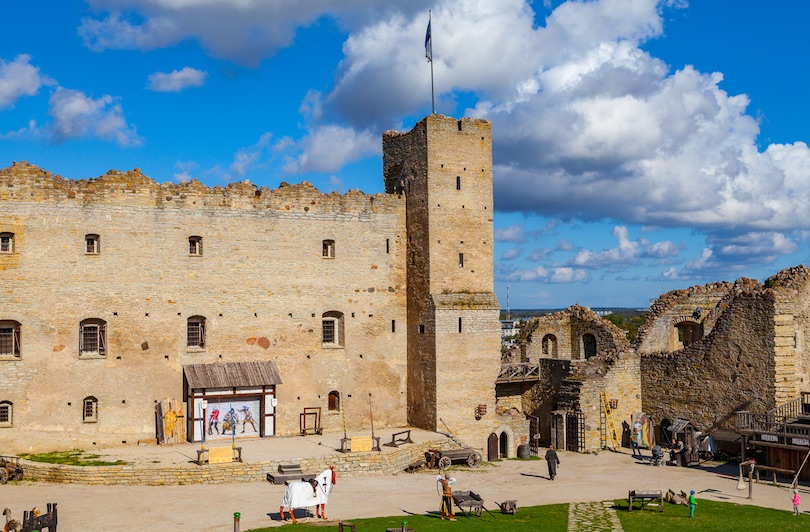
Northern Estonia is home to Rakvere, a city where humans have lived for nearly 1,500 years. The city’s biggest attractions is Rakvere Castle, which was constructed in the 16th century. The castle has become a kind of medieval theme park, and costumed visitors and staff wander the grounds. You can watch knights polishing their armor, see an alchemist’s workshop and tour the ancient wine cellar. In the castle’s Shenkenberg Tavern, you can even dine on classic medieval dishes. Visiting the castle is an unforgettable way to bring history to life.
7. Hiiumaa [SEE MAP]
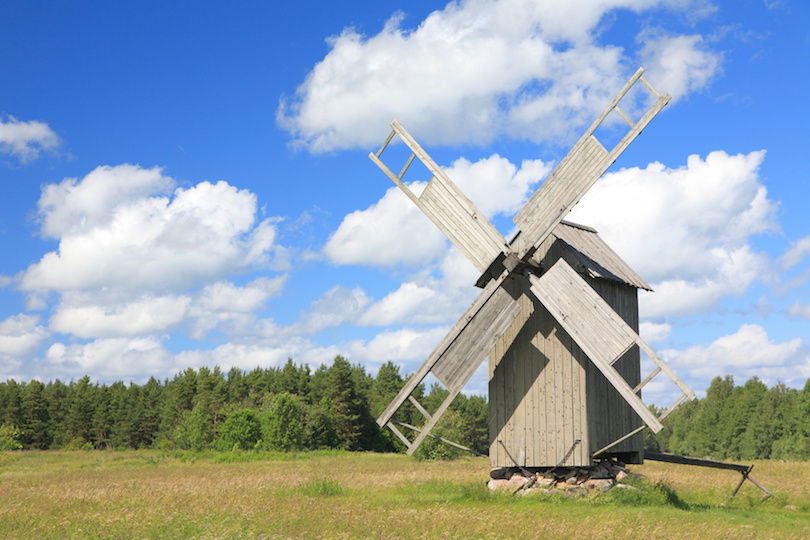
When most people picture Estonia, they don’t picture islands. However, Hiiumaa is just one of several islands off the coast and in the Baltic Sea. To reach Hiiumaa, you can take a plane from Tallinn or a ferry from multiple coastal cities on the mainland. Equally loved by surfers, sailors, and hikers, Hiiumaa is great place to visit for those looking for peace and quiet. The island also boast many interesting lighthouses. The 19th century cast iron Tahkuna Lighthouse is the tallest in the country. The Kõpu Lighthouse, however, is far older. Dating back to the 15th century, Kõpu is one of the oldest lighthouses on the planet.
6. Narva Castle [SEE MAP]
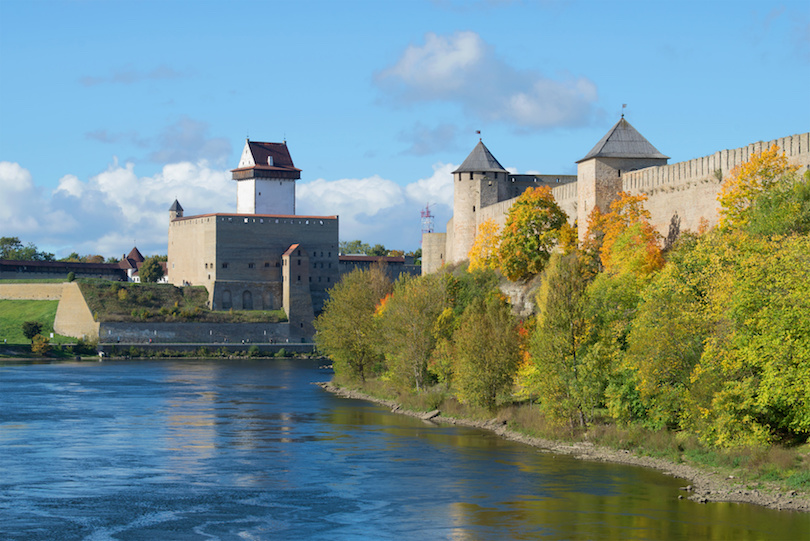
The city of Narva is the easternmost destination in the country, not to mention the entire European Union. The city was heavily bombed during World War II, but thankfully the beautiful and historic Narva Castle still stands. The castle, which is also known as Hermann Castle, was built in the 13th century but the Danes as a residence for the Danish King’s vice-Regent. Inside the castle is the Narva Museum as well as a collection of handicrafts workshops where you can watch and even learn the skills used in medieval times. The castle tower overlooks the Ivangorod castle on the Russian side of the river.
5. Parnu [SEE MAP]
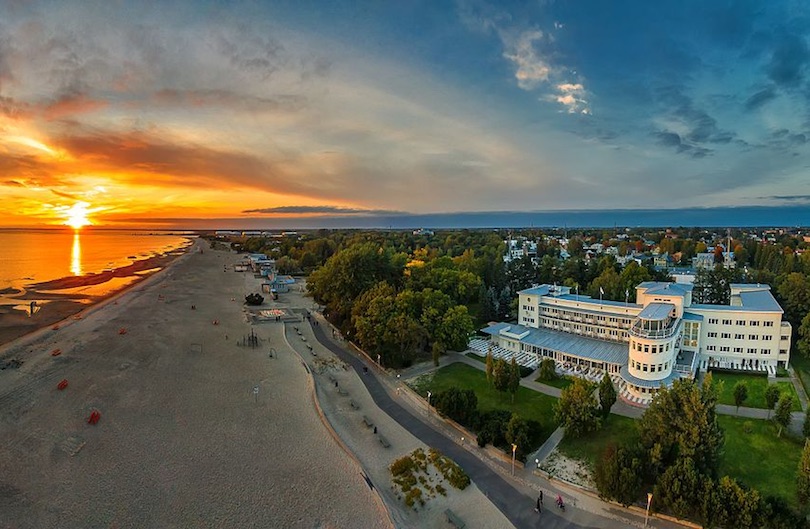
Where the Parnu River meets the Gulf of Riga, you’ll find the coastal resort city of Parnu. Parnu is known as the summer capital, because it is where so many Estonians choose to take their summer vacations. The biggest reason to come to Parnu is the beach, which boasts fine, white sand and gorgeous dunes. The beach promenade runs along the shore and helps to create the traditional coastal resort feel in the city. Even after the sun sets for the day, lighting along the promenade ensures that people are still walking and enjoying the coastal scenery. If a rainy afternoon appears, join the locals at Vee Park, a popular indoor water park in Parnu.
4. Saaremaa [SEE MAP]
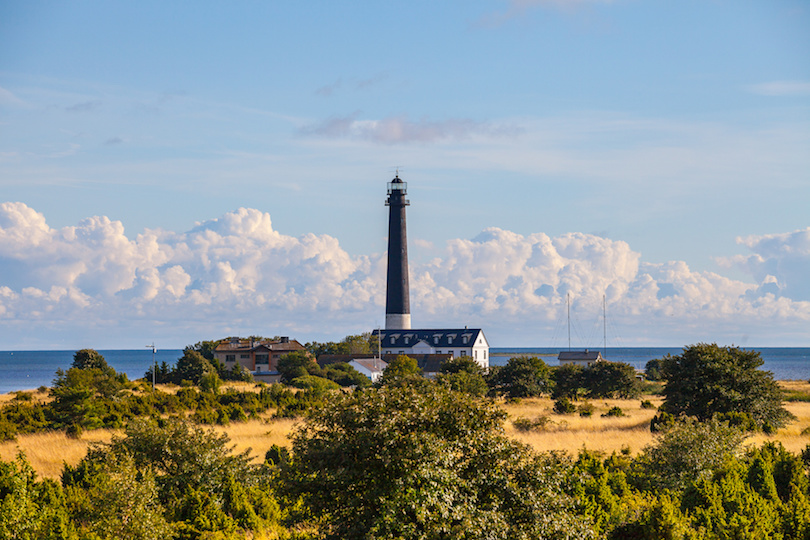
The largest Estonian island is called Saaremaa, and it is located in the Baltic Sea. The island has an 8,000-year-old history, and was ruled by Danes, Swedes, Germans and Russians in that time. Today, most visitors spend their time in the island’s capital city of Kuressaare. In Kuressaare, you can explore the completely intact medieval castle. You can tour the castle and the grounds, which now serve as home to the Regional Museum of Saaremaa. If you’re interested in hiking, sightseeing, birdwatching or photography, then Saaremaa’s Sõrve Peninsula is a spectacularly scenic destination to explore.
3. Lahemaa National Park [SEE MAP]
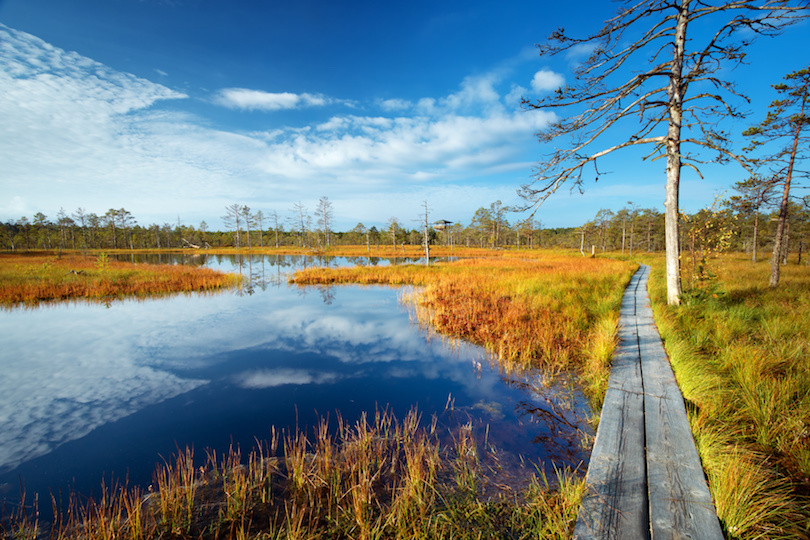
One of the most popular national parks in Estonia is Lahemaa. Since it is just an hour’s drive from the capital, it is the ideal day trip. Viru Raba, or Viru Bog, is a must-see part of the park. Trees poke from the swampy ground, and there is a definite ethereal quality. To make it easy to explore Viru Bog, there is a 5-km (3-mile) boardwalk that is usually dry, keeping you out of the water but close enough to admire the scenery. In the middle of the park is Sagadi Village, a fascinating spot where you can tour Sagadi Manor and learn more about the culture and history of the region.
2. Tartu [SEE MAP]
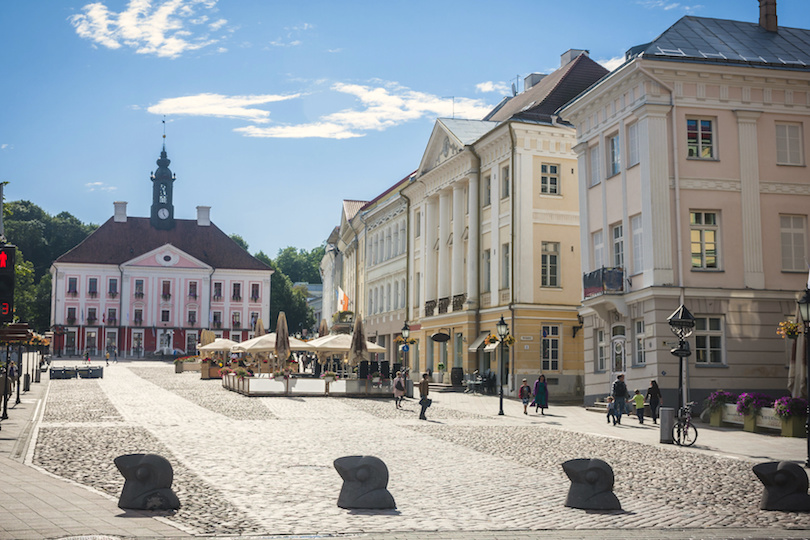
The city of Tartu is considered the intellectual hub of the country, thanks to the impressive and well-known University of Tartu. Between the university and the fact that Tartu is the oldest city in the nation, this city is clearly an interesting destination. Its handsome centre is lined with classically designed 18th-century buildings, many of which have been put to innovative uses. One of the coolest attractions in Tartu is the soup neighborhood. In the soup neighborhood, every street is named after soup ingredients like potatoes, beans and peas. Old wooden houses line these streets, which are just next to the Emajõgi River.
1. Tallinn [SEE MAP]
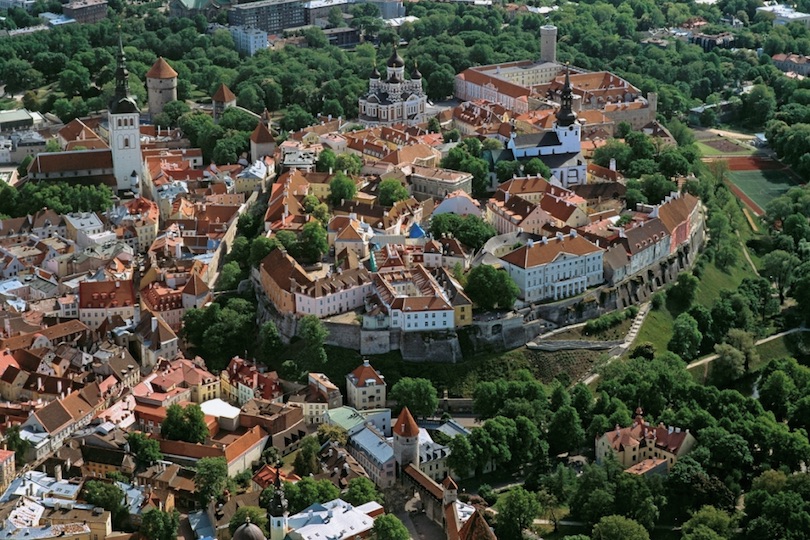
The most popular place to visit in Estonia is Tallinn , the capital and the hub of medieval architecture. The heart of the city is called Toompea, a hill that retains a historic atmosphere thanks to cobblestone streets and 15th century buildings. The area is amazingly preserved and accessible on foot. From the top of Toompea, you can look out over much of the Old City. Some highlights of the Old City include the bustling shops on Viru Street, the 14th century Town Hall and the opulent 19th century Alexander Nevsky Cathedral.
Share this post:
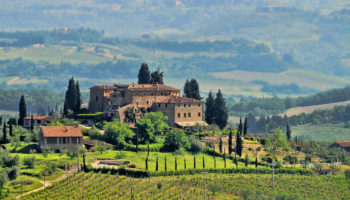
6 Most Beautiful Regions of Europe
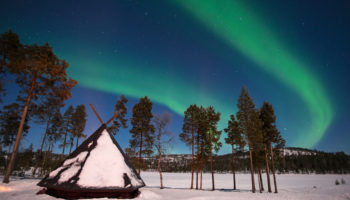
17 Best Places to Visit in Northern Europe
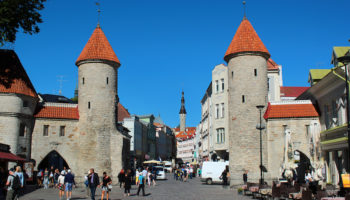
15 Best Things to do in Tallinn, Estonia
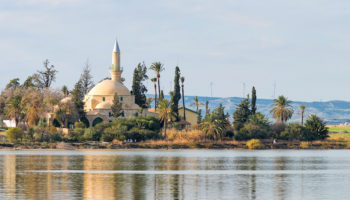
10 Best Places to Visit in Cyprus
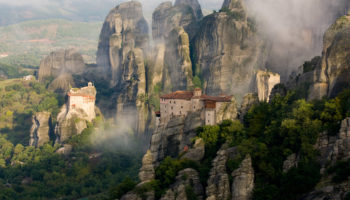
25 Most Beautiful Places in Europe
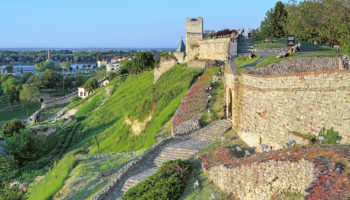
22 Top Things to do in Belgrade, Serbia
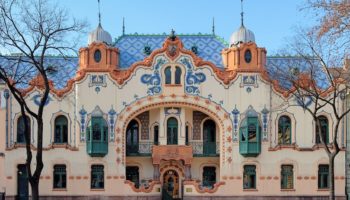
10 Best Places to Visit in Serbia
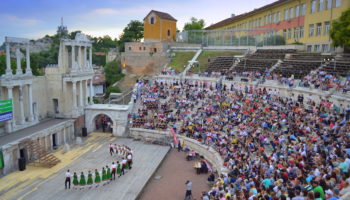
12 Top Tourist Attractions in Bulgaria
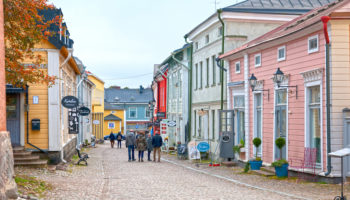
15 Best Cities to Visit in Finland
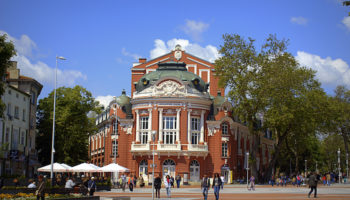
10 Best Places to Visit in Bulgaria
Reader interactions, leave a reply cancel reply.
Your email address will not be published. Required fields are marked *
This site uses Akismet to reduce spam. Learn how your comment data is processed .
You will be redirected to your dashboard shortly. We will also call you back in 24 hrs .
- 12 Best Places To Visit In Estonia In 2024 For Seeking The Ultimate Adventure
23 Mar 2023
Estonia is a largely underrated place, laying peacefully in Northern Europe, a country that has its and bits of all. The country boasts of scenic coastlines, medieval cities, and a massively interesting history to keep people on the hook. The country is bordered by Russia, the Baltic Sea, the Gulf of Finland and Latvia, making it accessible from many places, then what travellers tend to raise questions about. The best thing about travelling to Estonia is, the country is affordable for visitors and does not add to your debts. Among the many places to visit in Estonia , the largest and most visited city is Tallinn. Apart from which, there are many other places that one needs to see when in Estonia.
12 Best Places To Visit In Estonia
The country’s main intriguing sights are sprawled among the various cites all over the country. It is replete with history and scenery which makes it a great place for photography. Although the noteworthy sights are a must visit, one should try and embrace the history from the 15th and 16th Century that the country imbibes on. Therefore, we have made a list of 10 places to visit in Estonia :
- Lahemaa National Park
- Narva Castle
- Rakvere Castle
- Soomaa National Park
- Lake Peipus
- Matsalu National Park
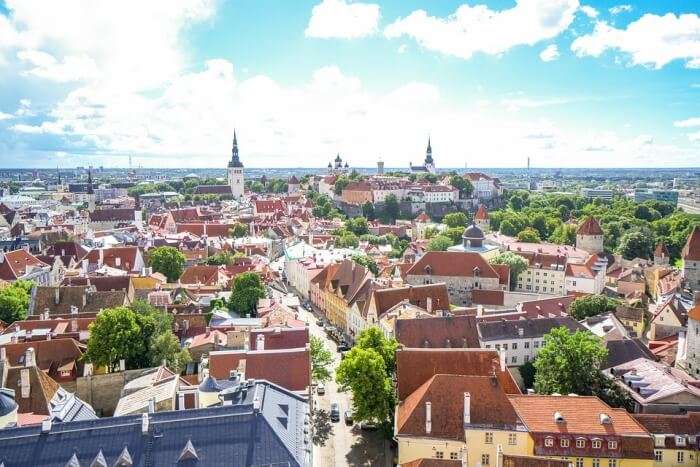
Image Source
It would be immoral of us to not have mentioned Tallinn in the numero uno spot, for it deserves it. Among the many famous places to visit in Estonia , Tallinn is the foremost in the running. The main attraction or heart of the city is Toompea and it still has kept the ancient and historic ambience very much alive with Cobblestones Street and 15th Century establishments. The region is well preserved and is accessible by walking for history lovers. From the topmost region of Toompea, you can get a view of the hustling and bustling, Old City.
Must Read: 35 Best Places To Spend Christmas In Europe
Europe Holiday Packages On TravelTriangle
Explore the most beautiful places to visit in Europe, from Paris to the Venice canals and from the Greek islands to the Swiss alps. Book customized packages by expert agents on TravelTriangle. Inclusive of airport transfers, cab, resort, sightseeing and meals. Best holiday experience Guaranteed. Book Now

Magnificent Switzerland Holiday 6D/5N Package @ Rs 69,999
Plan your trip today!

Magnificent Europe Tour 7D/6N Package @ Rs 70,975
Get quotes from multiple travel experts.
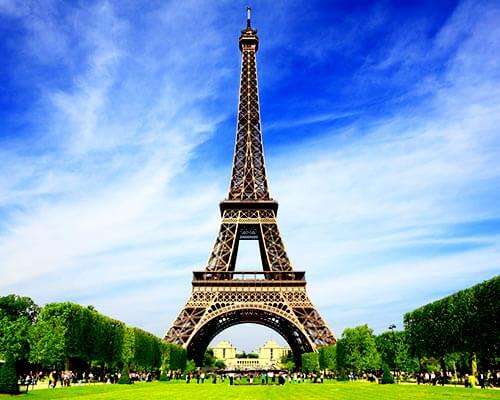
France & Switzerland Tour Package 8D/7N @ Rs 90,000
Compare & customize quotes before booking.
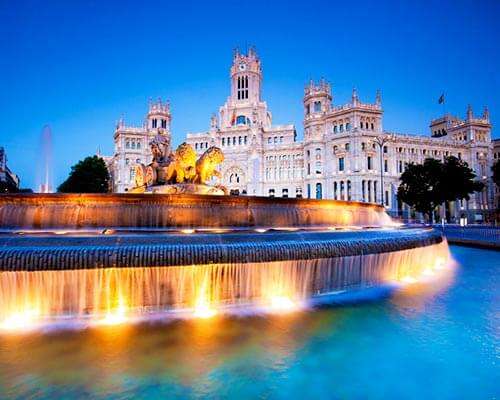
Scintillating Spain & Portugal Tour 11D/10N @ Rs 101,150
Have Questions? Talk to our travel experts today.
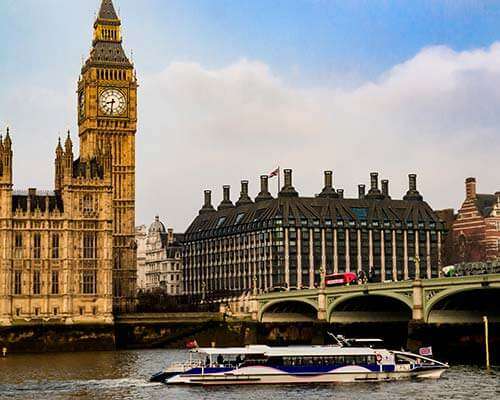
6 Country Europe Tour Package 12D/11N @ Rs 118,650
Best prices guaranteed. EMI option available.

See more at TRAVELTRIANGLE.COM
2. Lahemaa National Park

The Lahemaa National Park is certainly the most famous places to visit in Estonia . This park is just an hour’s drive from the capital and makes for an ideal day trip. When in the park, do not miss out the Viru Bog or Viru Raba. With an ethereal quality that comprises the beauty of this place, a fascinating thing is the trees poking from the swampy ground. To explore the Viru Bog take the 3-mile broad walk, which is a dry path that helps keep you away from the water for you to enjoy the scenery closely? Also, you can visit the Sagadi Manor, a fascinating spot in the Sagadi Village, located in the center of the park.
3. Saaremaa

Saaremaa is the best places to visit in Estonia . The island comprises a history that is 8000 years old. It was ruled by the Swedes, Danes, Russians and the Germans over the years. Visitors who come here spend their time in the capital city of the island, Kuressaare, where you can explore the intact medieval castles. You can even opt for hiking, birdwatching, sightseeing, and photography in and around this area, with the Saaremaa’s Sorve Peninsula’s spectacular scenic destination for visitors to explore.
Suggested Read: 13 Frolicsome Beaches In Europe For All The Excited Beach Bums Across The Globe
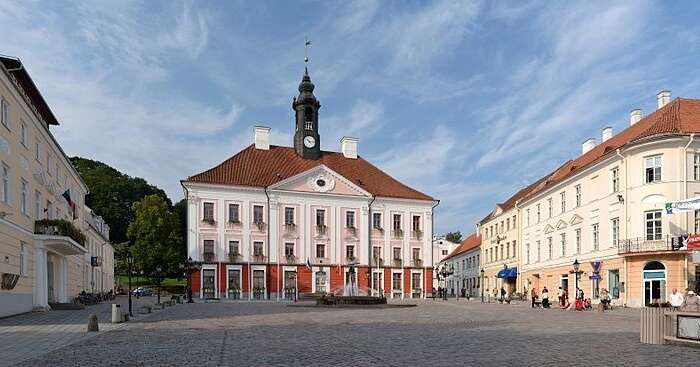
Considered as the intellectual hub of the country, Tartu is well known for the University of Tartu. It is the oldest city in the nation which makes it more interesting to visit. The city centre is classically designed with 18th Century buildings, most being an outlet for innovative requirements. The soup neighbourhood is the quirkiest attraction of the city, with street names being named after soup ingredients like beans! It is touted as the best places to visit in Estonia .
5. Narva Castle
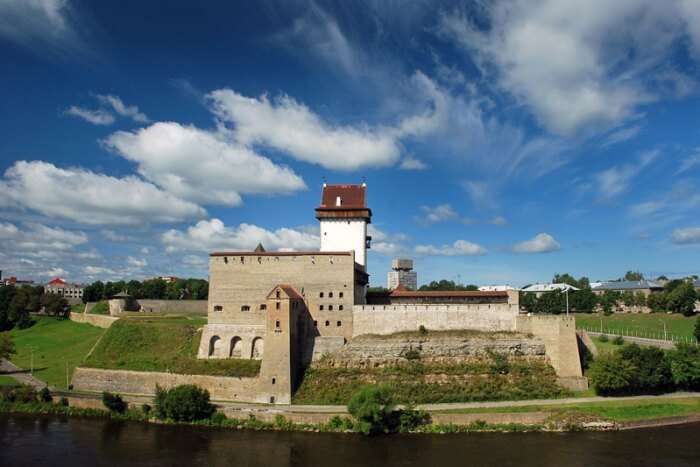
The easternmost destination on the map of Estonia is the city of Narva. This particular city was heavily bombed during the WWII. However, the beautiful and historic castle of Narva still stands today. The castle is also known as the Hermann Castle, wcentrehich was built in the 13th Century. The castle repletes a good collection of handicraft workshops for people to learn which also includes a museum. The most gorgeous view here is the tower of the Narva castle that overlooks the Russian side of the river.
Suggested Read: 17 Spots For Snorkeling In Europe Every Underwater Enthusiast Must Visit

The coastal resort city of Parnu is located where the Parnu River falls into the Gulf of Riga. The major attraction here is the beach of Parnu, boasting off about the gorgeous dunes and powdery white sand. Parnu is also famous as the summer capital because most of the Estonians choose to spend their summer vacations here. You can also visit the indoor water park in the area named as the Vee Park. Well, it is one of the best places to visit in Estonia in winter.
7. Rakvere Castle
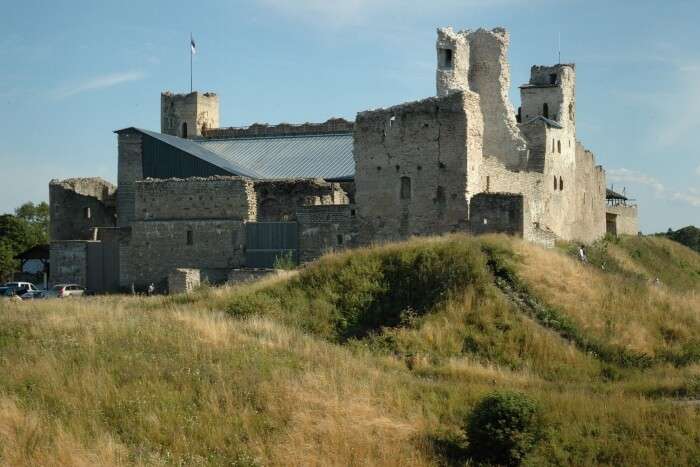
The Rakvere Castle lays in the northern part of Estonia. Rakvere is a city where humans have lived for 1500 years and the biggest attraction of this place is the Rakvere Castle. It is like a cosplay event every day, where people are dressed. You will find knights polishing their armour, alchemist’s workshops and also get a tour of the ancient wine cellar. There is a place in the castle called Shenkenberg Tavern for you to enjoy a history-themed, ancient dining experience. The Rakvere Castle is among the famous places to visit in Estonia .
Suggested Read: Guess Which European City Gets The Title Of World’s Most Liveable City This Year!
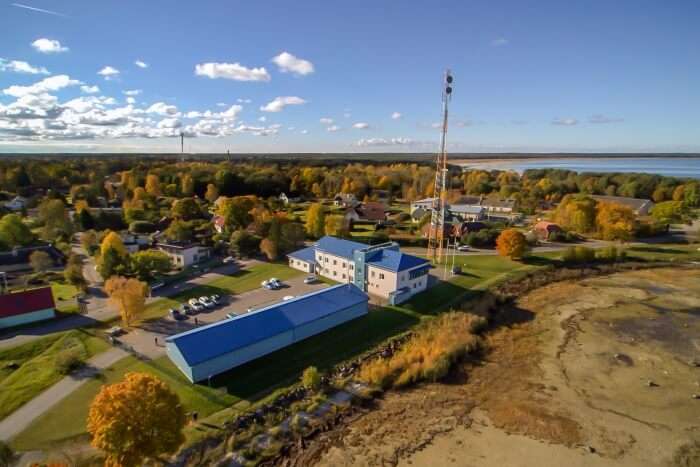
If you were to think of Estonia, the island would probably not make it to your imagination. However, Hiiumaa is one of the many islands in Estonia. You can reach this gorgeous piece of land by taking a plane from Tallinn or avail to ferries from multiple coastal cities. Hiiumaa Is a great place to visit for relaxation and having a stress free quiet day. There is a lighthouse from the 19th century of cast iron known as the Tahkuna Lighthouse. It is the tallest in the country.
9. Soomaa National Park
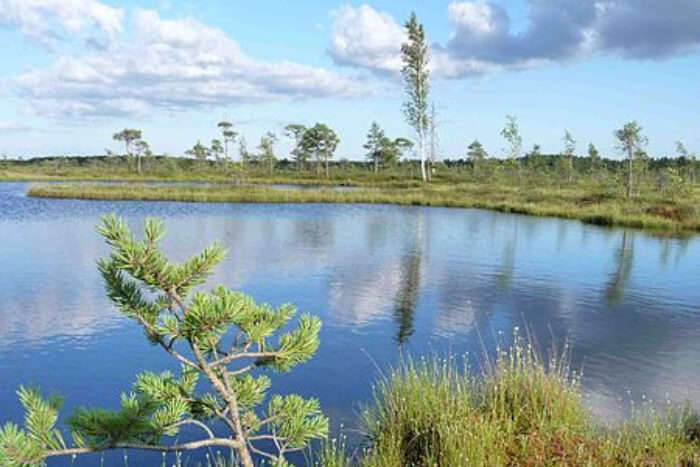
Another one of the fascinating destinations of Estonia is the Soomaa National Park. It was primarily a peat bog, which was formed as a result of glaciers melting more than 10000 years ago. In this area, canoeing is the most popular activity. Also, you can spot deer, elk, beavers, boars, golden eagle and many other animals in this park. The most suggested season to visit this park is the spring season. For its amazing weather and natural feature changes.
Suggested Read: This Winter, Escape To The Best Honeymoon Destinations In Europe!
10. Viljandi

Viljandi is located in southern Estonia. It is a small city but has a rich history, which dates back to 2600 years. The historic architecture though not all, some of which still remains for the world to see. Among which, the Viljandi Order Castle is a major attraction. It is a ruin from the 16th century, which attracts visitors every year. In the month of July, the city attracts around 20000 visitors for the annual folk music festivals and concerts that are held here. It makes for the largest music festival in all of Estonia.
11. Lake Peipus
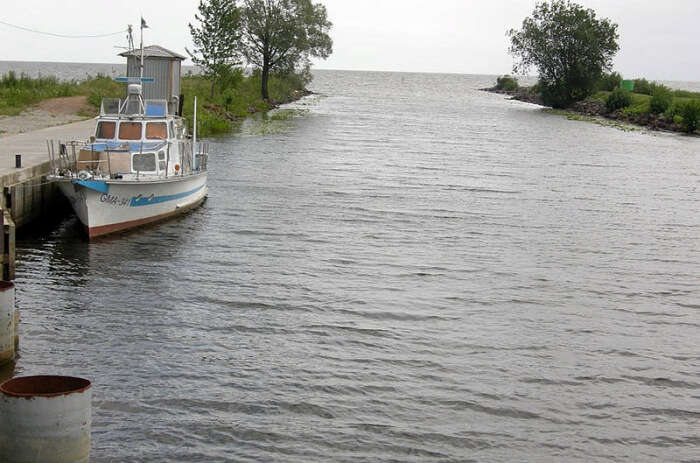
One of the largest lakes in Western Europe, Peipus is located on the border between Russia and Estonia. The abundance of fishes and wide country roads make this lake a popular holiday destination among locals and foreigners alike. You can explore mansions, traditional markets, lighthouses, and traditional cottages here. It is fairly clean. You can stop by here while you’re visiting Estonia with your family and friends to a picnic by the lake.
Suggested Read: 17 Fascinating Things To Do In Estonia For An Extraordinary Trip
12. Matsalu National Park
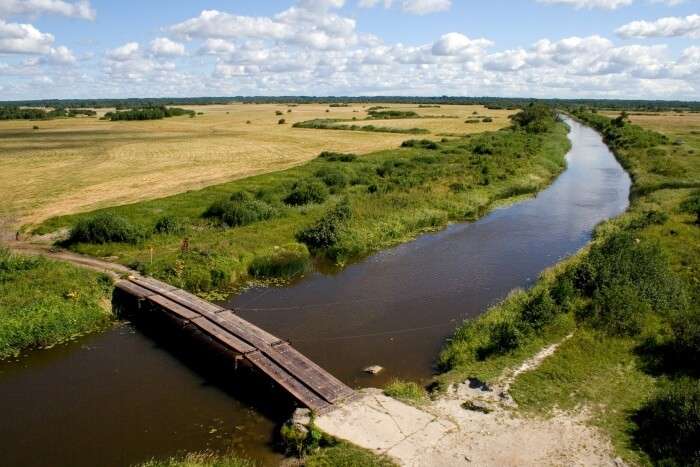
Matsalu National Park is located in the key part of the East Atlantic Flyway. This is a 48,610-hectare nature park created to preserve a plethora of migrating, nesting, and molting birds. It houses a number of highly endangered species, like the white-tailed eagle. Matsalu is famous among bird watchers. All nature lovers must stop by here. This experience will last with you for a lifetime.
Further Read: 31 Festivals In Europe That Will Up The Fun Factor Of Your Euro Tour
Well, to conclude, we should look at Estonia more than just a country that barely exists in the European Union. There is so much history that resides in this place, which compels a die-hard history lover to come here and relive the beauty of it. Also, there are many good places to visit in Estonia. If you are looking for a new place, this is it. So, plan a trip to Europe , visit Estonia and indulge in the fun!
Disclaimer: TravelTriangle claims no credit for images featured on our blog site unless otherwise noted. All visual content is copyrighted to its respectful owners. We try to link back to original sources whenever possible. If you own the rights to any of the images, and do not wish them to appear on TravelTriangle, please contact us and they will be promptly removed. We believe in providing proper attribution to the original author, artist or photographer.
Please Note: Any information published by TravelTriangle in any form of content is not intended to be a substitute for any kind of medical advice, and one must not take any action before consulting a professional medical expert of their own choice.
Frequently Asked Questions About Places To Visit In Estonia
Which is the famous food of Estonia?
Räim is touted as the most famous traditional dish of Estonia. Some other delicacies that one must try include Sült, Rosolje, Mulgikapsad, Lillkapsas Juustukastmes, and Kruubipuder.
What is Estonia famous for?
Estonia is known for its wonderfully preserved Medieval Architectures which has earned itself the title of UNESCO World Heritage Sites. Two such locations are the city of Tallinn and the Struve Geodetic Arc.
Can I visit Estonia during the current Covid situation?
Yes, you can now plan a visit to Estonia. To ensure a safe trip, adhere to the Government protocols, maintain required social distance, keep wearing a mask when in public, and keep sanitizing your hands at certain intervals.
Which are the best places to visit in Estonia?
The top-rated tourist attractions in Estonia are: 1. Tallinn 2. Lahemaa National Park 3. Saaremaa 4. Tartu 5. Narva Castle 6. Parnu 7. Rakvere Castle 8. Hiiumaa 9. Soomaa National Park 10. Viljandi
Which is the best time to visit Estonia?
The summer months of May to late August is the best time to visit Estonia. These dry and warm months are the best time to enjoy the Baltic beaches and inland lakes.
Is Estonia safe for tourists?
Estonia is quite safe for tourists. It has very low crime rates, and though there are areas to avoid, pickpockets, mugging or other types of assault are not common. However, the capital city of Tallinn can get a bit dangerous, like any other major city.
What is there to do in Estonia?
Some of the amazing things to do in Estonia are: 1. Explore the Karula National Park 2. Watch a puppet show at the NUKU Theater 3. Enjoy a relaxing day at the Parnu Beach 4. Enjoy birdwatching at Matsalu National Park 5. Enjoy the scenic landscape around Jägala Waterfall 6. Explore the Alexander Nevsky Cathedral
Which is the best area to stay in Estonia?
The best areas to stay in Tallinn, the capital of Estonia are the old town and the city center. If you are coming to Tallinn by ferry, these two areas are just a short walk from the port.
Are there Beaches in Estonia?
Yes, you can find a number of stunning Estonian Beaches. Some of the best ones include Parnu Beach, Pirita Beach, Mandjala Beach, Paralepa Beach, and Lake Tamula Beach.
Looking To Book An International Holiday?
Book memorable holidays on TravelTriangle with 650+ verified travel agents for 65+ domestic and international destinations.

Trip to Sri Lanka at Rs 13,500/-
Plan Your Vacation Today!

Trip to Singapore at Rs 20,499/-
Get Quotes From Local Experts

Mauritius Holiday Starting at Rs 65,000/-
Talk to Our Experts Today

Maldives Honeymoon Trip at Rs 39,800/-
Pay with easy EMI Option

Europe Trip at Rs 89,999/-
All Inclusive Deals

Vacation in Dubai at Rs 27,499/-

Hong Kong Holiday at Rs 24,999/-
Money Safe Guarantee

Thailand Holiday at Rs 7,999/-
Flights Excluded
People Also Read
Places To Visit In Latvia Places To Visit In Poland Places To Visit In Cyprus
Recent Posts
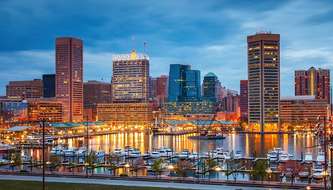
12 Hidden Gems In Maryland: Seek Offbeat Experience
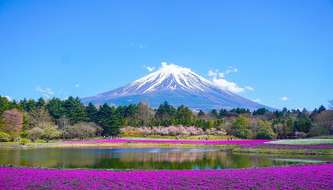
10 Captivating Reasons To Visit Japan: Unveiling The Land Of Endless Wonders
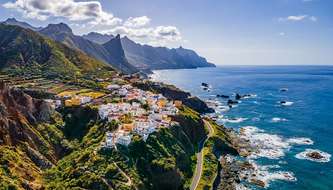
Hidden Gems In Spain You Won’t Find On Any Other List
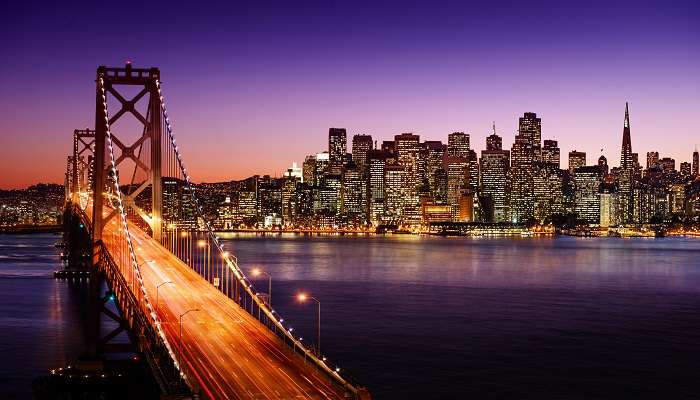
Discover 14 Hidden Gems In San Francisco For An Offbeat Experience
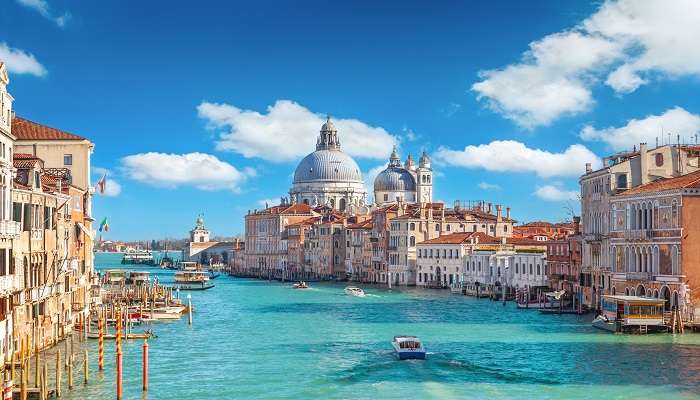
8 Hidden Gems In Venice That Are Filled With Utter Magic
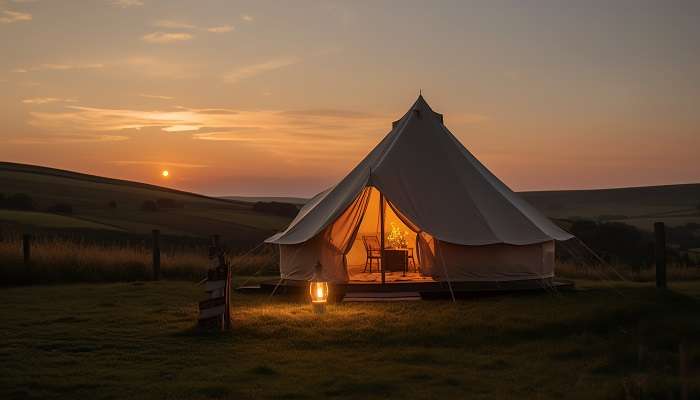
7 Wonderful Sites For Camping Near Barcelona For Adventure Seekers
Trending Blogs

20 Mysterious Places In India To Visit In 2023 More Bizarre Than The Bermuda Triangle

10 Scariest Roads In India That Are A Driver’s Nightmare

101 Places To Visit In India Before You Turn 30 in 2024

35 Exotic Places To Visit In December In India 2024 To Enjoy A Surreal Vacation

60 Best Honeymoon Destinations In India In 2024

95 Best Honeymoon Destinations In The World In 2023 For A Romantic Escape!
Best Places To Visit In India By Month
Best places to visit outside india by month.
- TravelTriangle
- International
- Places To Visit »
- Tour Packages
- Honeymoon Packages
- Family Packages
- Budget Tour Packages
- Luxury Tour Packages
- Adventure Tour Packages
- Group Tour Packages
- Maldives Tour Packages
- Bali Tour Packages
- Dubai Tour Packages
- Singapore Tour Packages
- Thailand Tour Packages
- Europe Tour Packages
- Sri Lanka Tour Packages
- Tour Packages From Delhi
- Tour Packages From Mumbai
- Tour Packages From Bangalore
- Tour Packages From Chennai
- Tour Packages From Kolkata
- Tour Packages From Hyderabad
- Tour Packages From Ahmedabad
- Thailand Tourism
- Bali Tourism
- Singapore Tourism
- Maldives Tourism
- Mauritius Tourism
- Dubai Tourism
- Europe Tourism
- Hotels in Thailand
- Hotels in Maldives
- Hotels in Mauritius
- Hotels in Bali
- Hotels in Dubai
- Hotels in Singapore
- Hotels in Sri Lanka
Nomadic Matt's Travel Site
Travel Better, Cheaper, Longer
Estonia Travel Guide
Last Updated: August 25, 2023
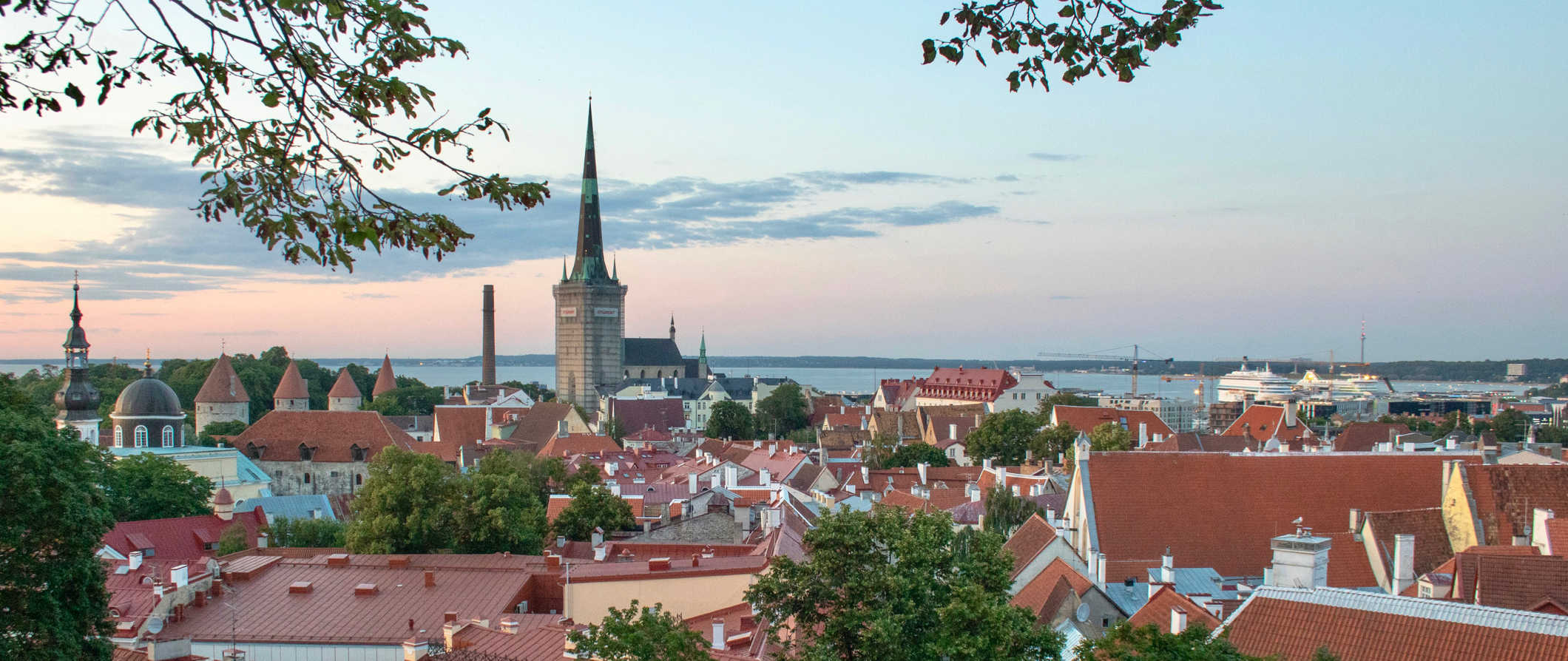
Tucked away in the Baltics, Estonia has become a popular destination thanks to cheap flights, beautiful cities, a wild nightlife, and the country’s stalwart support for digital nomads and remote workers (it’s also a popular spot for cruisers since many ships stop there as well).
I loved my time here. Unlike the stereotypes many people have about Eastern Europe, Estonia is a modern, organized, and tech-forward country. It has more start-ups than Silicon Valley and everything is done online here.
With more than 1,500 islands, swaths of untouched old-growth forests, and historic castles and churches, Estonia seamlessly blends old and new. Be sure to get out of Tallinn, too. There’s more to the country than just its capital.
This travel guide to Estonia can help you plan your trip, save money, and make the most of your time in this underrated European destination!
Table of Contents
- Things to See and Do
- Typical Costs
- Suggested Budget
- Money-Saving Tips
- Where to Stay
- How to Get Around
- How to Stay Safe
- Best Places to Book Your Trip
- Related Blogs on Estonia
Top 5 Things to See and Do in Estonia
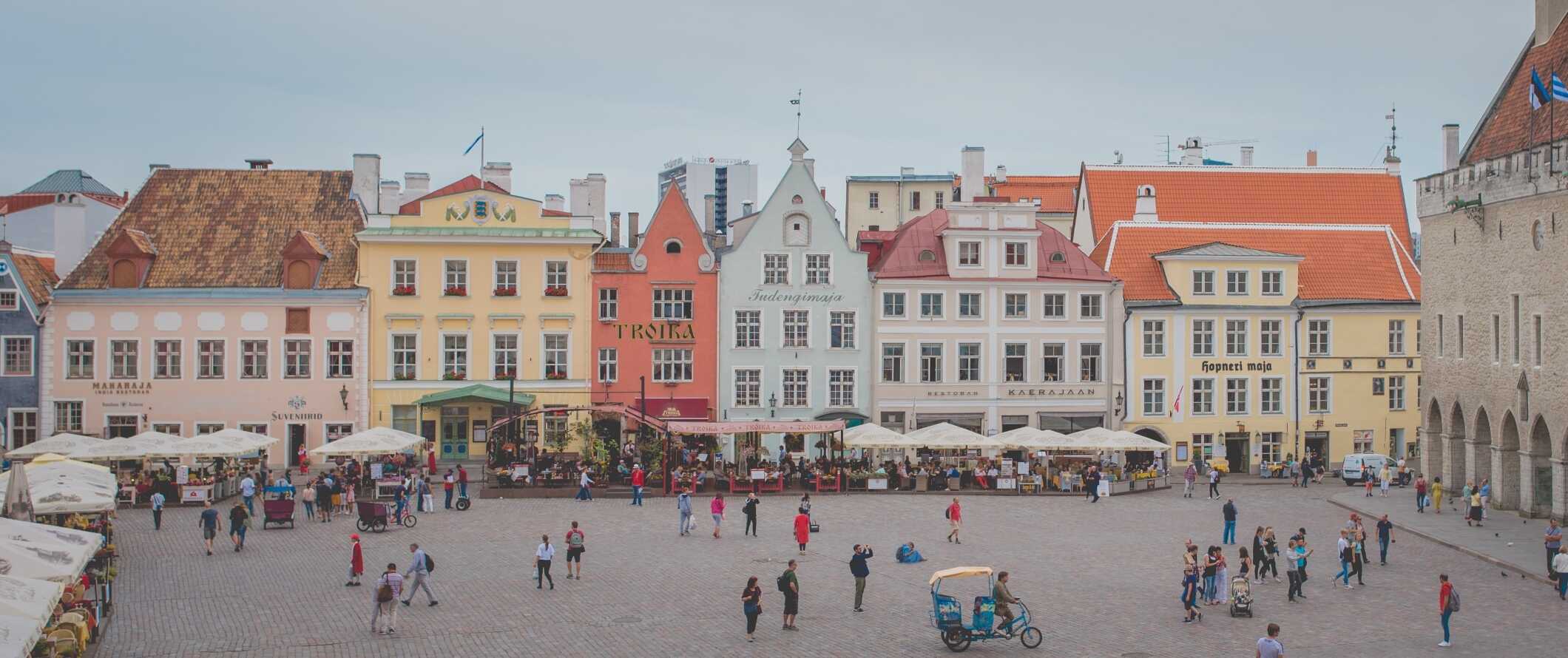
1. Party in Tallinn
Estonia’s historic capital city Tallinn is a cultural melting pot on the shores of the Baltic Sea. Here you can explore one of the best-preserved medieval cities in Northern Europe. Wander along the cobblestone streets while taking in historic architecture of the Old Town. While it has a lot of history to offer, it’s also ripe with bars, pubs, nightclubs, and cheap drinks. If you love live music, you’ll be impressed with Tallinn. There’s a vibrant party scene here that’s both fun and affordable.
2. Visit Pärnu
Overlooking Pärnu Bay is the resort city of Pärnu. Perched over the Baltic Sea, it’s a lovely place to relax for a few days. In the warmer months you can walk 20 minutes from the town center to the expansive Blue Flag beach with soft sand and calm water that is perfect for swimming and sunbathing. It makes for a perfect jumping-off point for anyone wanting to do any sailing while in Estonia. When you’ve had your fill of sand and saltwater, pamper yourself with a mud bath at the seaside 1920’s era spa. Like everywhere in Estonia, there’s some incredible historic architecture, like the old Russian style Transformation of Our Lord Church. Divided by the Pärnu River, the city is known for its 19th-century timber villas as well as the relaxing beaches of Pärnu Bay.
3. Get lost in Vanalinn
For the perfect mix of medieval and modern, venture into Tallinn’s Old Town, Vanalinn. This part of the city was built between the 13th and 16th centuries and was granted UNESCO World Heritage status in 1997. The original architecture is unbelievably well preserved — even after aggressive World War II bombings. Within the historic town square, you’ll find the 13th century Gothic Town Hall complete with a 64-meter-tall (209 feet) tower. It’s full of cobblestone streets and gothic architecture and makes for stunning photos and fun people watching.
4. Relax in Saaremaa
Home to the medieval castle Kuressaare (which dates to the 16th century), the island of Saaremaa is a beautiful place for hikers and bird watchers to escape into nature. Saaremaa is known for its beaches and traditional villages. Archeologists believe the island has been inhabited since 5000 BCE. The island is home to Vilsandi National Park, which spans 238 square kilometers (91 square miles) and is home to almost 250 species of birds. The climate makes it a hotspot for all types of flora and fauna. You can also visit the site of the Kaali meteorite strike (which happened over 3,000 years ago) with its huge craters and a unique museum full of chunks of the meteor.
5. Visit Lahemaa National Park
Located one hour east of Tallinn, this park showcases Estonia’s incredible natural beauty. The park was established in 1971 to protect the region, and it remains one of the main tourist attractions in the country. Spanning 750 square kilometers (289 square miles), it’s a wonderful hiking spot perfect for nature lovers thanks to the many large mammals living in the forests, including deer, wolves, bears, and lynx. About 70% of the park is covered in forest and there are a few incredible hiking trails to explore. Raised bogs are another interesting feature, especially Laukasoo Reserve which is believed to be 7000 years old. Those interested in architecture will love exploring the historic manors within the park, including the famous Baroque masterpiece Sagadi Manor. Admission is free.
Other Things to See and Do in Estonia
1. spot wildlife in soomaa national park.
Soomaa National Park is one of the most magical natural landscapes in Estonia. Spread out over 359 square kilometers (138 square miles), the park is home to elk, deer, boar, lynx, wolves, beavers, bears, and more. Located 140 kilometers (87 miles) south of Tallinn, the park is a popular getaway for hikers. The nearby Raudna River and Parnu Basin also offer the opportunity to kayak and canoe. Much of the park floods in the spring, giving you the chance to explore the forests via canoe/kayak. Admission to the park is free. Canoe and kayak rentals cost 27 EUR. Guided tours cost around 50 EUR.
2. Go skiing in Otepaa
A much-loved hiking and mountain biking destination during the summer, in the winter Otepaa transforms into the winter capital of Estonia. There are a couple of kilometers of mountains here and 8 different lifts that offer access. It’s one of the most budget-friendly places to ski in Europe . Lift passes cost around 38 EUR. Expect to pay another 35 EUR for a one-hour ski lesson and 15 EUR per day for ski rentals.
3. Explore Kuressaare Castle
Located on Saaremaa Island in western Estonia, Kuressaare Castle is the best-preserved castle in the Baltics. Built in the 14th century, the castle and its moat were constructed on the grounds of the original castle that dated to the 13th century. The current castle was constructed in the late Gothic style and consists of a large square building surrounding a spacious courtyard. A 36-meter (121-foot) defensive tower and traditional medieval portcullis make up the castle’s defenses. There’s a museum inside that sheds light on the castle’s history, including when the Nazis used the castle to execute dissidents. Admission to the castle is free while the museum costs 10 EUR. Bike rentals cost 4 EUR an hour and rowboats cost 10 EUR per hour.
4. Hang out in Tartu
Tartu holds the title of the intellectual (and hipster) capital of Estonia. Located two hours south of Tallinn, here you’ll find the country’s most prestigious university (University of Tartu), a historic citadel, and the ruins of the city’s cathedral (which dates to the 13th century). Be sure to explore Soup Town (a neighborhood composed of old wooden houses), see the 18th-century town hall (which stands out because it’s pink and red), and spend some time people-watching at a café in Raekoja Square, the city’s historic main square.
5. Visit the Estonian National Museum
Founded in 1909, this museum is located in Tartu. It was expanded in 2016 and moved into a massive new building. There are tons of exhibitions on Estonian history, with a detailed gallery on the Russian occupation of the country (which lasted from 1940-1991). The museum provides a solid historical and cultural foundation to help you better understand Estonia’s past and present. Admission is 14 EUR.
6. Visit Kaali Meteorite Crater Field
Located on Saaremaa Island, this site is where a giant meteorite hit over 7,500 years ago. There are 9 craters in total, with the largest crater spanning 110 meters in diameter (360 feet) and reaching depths of 22 meters (72 feet). All kinds of animal bones have been found here and there is a stone wall built around the area (dating to the Bronze Age), leaving archaeologists to surmise that the area was used for some kind of cult or religious ceremonies after the craters were made. Admission is free, though the small museum nearby costs 1.60 EUR to enter.
7. Enjoy an open-air festival in Viljandi
For summer festivals and live music, head to Viljandi. Located in the middle of the country, the town’s medieval castle is used for concerts and music festivals (especially traditional folk music). While you’re here, be sure to spend some time relaxing at Lake Viljandi where you can swim and enjoy the beach. Lake Võrtsjärv, the largest inland lake in the country, is also nearby.
8. Visit the Alexander Nevsky Cathedral
The Alexander Nevsky Cathedral is in the heart of Tallinn’s Old Town. Standing 45 meters tall (150 feet), it was built between 1894-1900 in the Russian Revival style. It was left to decline under Soviet rule, however, once Estonia gained independence it was restored to its former glory. As well as the elaborately decorated bells (the largest weighing almost 16 tons) there are some beautiful religious mosaics inside and incredibly detailed stained glass windows. Admission is free but it’s a place of worship so dress respectfully.
9. Try windsurfing
With so much of the country surrounded by water, Estonia is a perfect destination for windsurfing. There are windsurfing shops on the west coast and in the north that offer rentals for 25-40 EUR and lessons from 66 EUR per hour. If windsurfing isn’t your thing, you can also enjoy stand-up paddleboarding, wakeboarding, or water skiing. Expect to pay around 20 EUR for those activities.
10. Visit the KGB Museum
Located on the top floor of Tallinn’s luxurious Hotel Viru are the KGB’s former spy rooms (the KGB was the Soviet Union’s secret police). The rooms were discovered after the KGB fled Estonia in the early 1990s. The hotel owners decided to keep the rooms exactly the way they were. Inside are listening and surveillance equipment that looks like something straight out of a vintage spy movie. The museum is only accessible as part of a guided tour that can be booked from the hotel lobby. The tour costs 12 EUR.
11. Go birding in Matsalu National Park
This is one of the best places to spot endangered species like the white-tailed eagle or watch the migrating cranes. Established in 1957, the park was created to protect the nesting and migrating birds. It’s located on the west coast of the country, spanning almost 500 square kilometers (192 square miles). Every year, between 10,000-20,000 cranes and upwards of 40,000 ducks visit the park as they migrate. Admission is free.
12. Wander Linnahall
Commissioned by the Soviet Union to accommodate the 1980 Moscow Summer Olympics, Tallinn’s Linnahall sports complex is now a giant, imposing, concrete ghost town. An amphitheater that seats 5,000 was unable to be utilized once the Olympic-sized crowds had departed so it now lies crumbling (construction was rushed and was done poorly so the buildings are falling apart). Over 66 countries boycotted the games due to the U.S.’s disapproval of the Soviet-Afghan war. Today, the venue is not in use so you’re free to wander and explore. Its location above the city makes it a great lookout spot. It’s an interesting place to wander around if you have a spare few hours.
13. Visit the Estonian Open-Air Museum
Hidden amongst the trees and forests just outside of Tallinn, this open-air museum is a reconstruction of an 18th-century rural village. It’s home to all kinds of traditional Estonian buildings. There are actors dressed up in historical garb as well as traditional professions on display, such as basket weaving and blacksmithing. There are over 80 wooden buildings you can visit, including a church, school, tavern, and farmhouse. Admission is 10 EUR.
Estonia Travel Costs
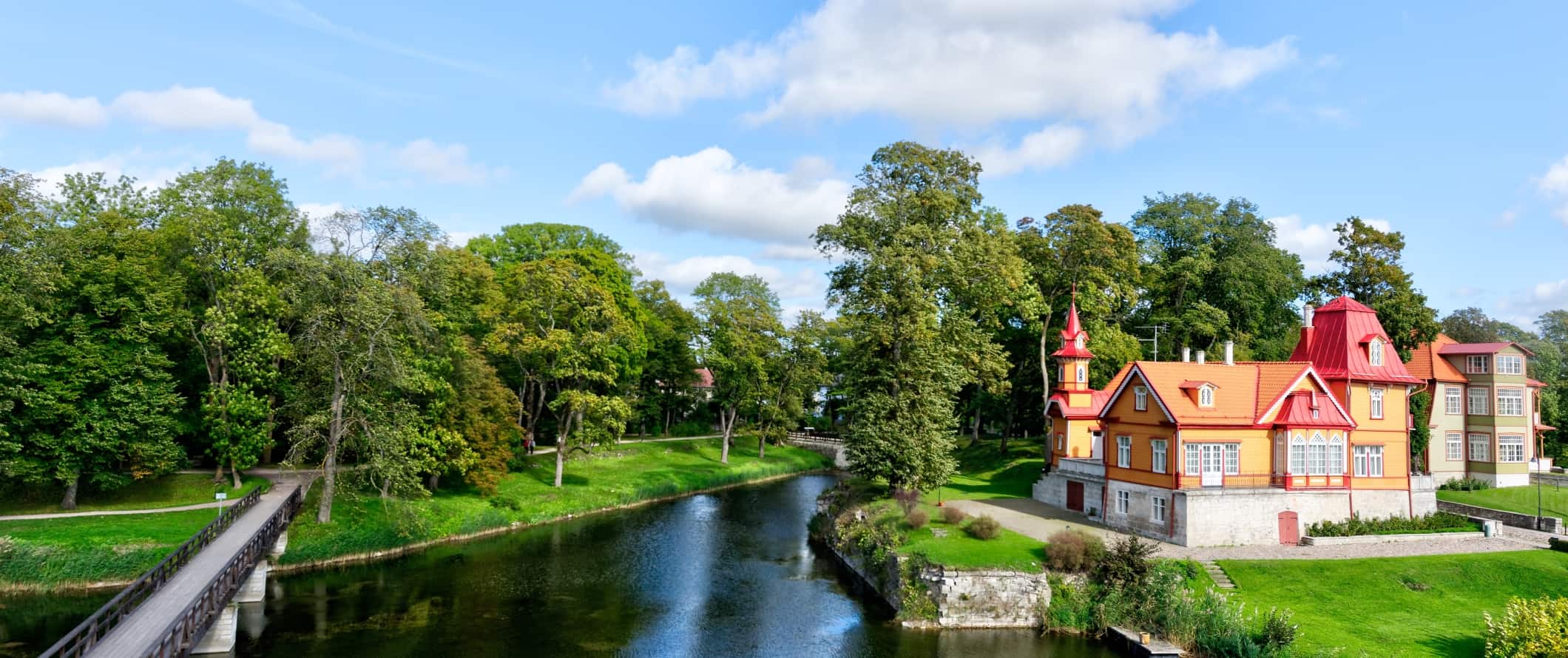
Accommodation – Hostel dorms start at 10 EUR per night for a bed in a 10-20 bed dorm. A smaller dorm with 6-8 beds costs 15 EUR per night. For a private room in a hostel, expect to pay at least 30 EUR per night. Free Wi-Fi is standard and most hostels have self-catering facilities. A few include free breakfast.
Budget hotels start at 40 EUR per night for a double or twin room that includes free breakfast and free Wi-Fi.
Airbnb is available around the country with private rooms starting at 20 EUR per night. For an entire home or apartment, expect to pay at least 35 EUR per night (though prices average double that).
For anyone traveling with a tent, Estonia is one of the best places in Europe for wild camping. Wild camping is permitted on government land (though some of the national parks do have restrictions). Here’s a list of the places you can wild camp in Estonia .
Food – Estonian food has a mix of influences from Russia, Germany, and Scandinavia. Dishes are commonly based around meat and potatoes as well as seasonal vegetables. Soups are a common main course as well. Pickled foods like beets, cucumbers, and fish, as well as rye bread and herring, make up the basis of much of the local cuisine. As in Scandinavia, open-faced sandwiches are a quick to-go snack. Verivorst and mulgikapsad (blood sausage and sauerkraut) are two of the most popular national dishes.
For an inexpensive meal at a café or restaurant, expect to pay between 6-13 EUR. A traditional sausage or stuffed pancake costs just under 3 EUR while fast food meals (think McDonald’s) cost around 7 EUR.
A multi-course meal at a restaurant with table service costs around 40 EUR, including a drink. Expect dishes like grilled salmon, lamb ribs, and roasted pork or duck. For something like Thai or Indian food (which is only really available in Tallinn and Tartu), expect to pay around 12-15 EUR for a meal.
Beer costs around 5 EUR. A latte/cappuccino is 3 EUR while bottled water is 1.50 EUR.
If you are planning to cook your own food, you can expect to spend around 30-40 EUR for a week’s worth of groceries. This includes basic staples like pasta, rice, seasonal produce, and some meat or fish.
Backpacking Estonia Suggested Budgets
On a backpacking budget of 35 EUR per day, you can stay in a hostel dorm, cook your meals, limit your drinking, take public transportation to get around, and do mostly free or cheap activities like free walking tours and visiting national parks. If you plan on drinking, add 5-10 EUR per day to your budget.
On a mid-range budget of 110 EUR per day, you can stay in a private hostel room or Airbnb, eat out at cheap restaurants serving traditional cuisine, drink more, take the occasional taxi to get around, and do more paid activities like museum visits or ski trips.
On a “luxury” budget of 225 EUR or more per day, you can stay in a hotel, eat out anywhere you want, drink as much as you want, rent a car to get around, and do more paid activities and guided tours. This is just the ground floor for luxury though. The sky is the limit!
You can use the chart below to get some idea of how much you need to budget daily, depending on your travel style. Keep in mind these are daily averages – some days you’ll spend more, some days you’ll spend less (you might spend less every day). We just want to give you a general idea of how to make your budget. Prices are in EUR.
Estonia Travel Guide: Money-Saving Tips
Estonia is a perfect destination for anyone on a budget. It’s not as cheap as it was years ago but there’s still a lot of value here — and still plenty of ways to reduce your costs! Here is how to save money during your visit:
- Take a free walking tour – Tallinn offers a handful of free walking tours which are great ways to get familiar with the city and the culture. Most hostels offer them and there are even some that have a special focus (such as the city’s Communist past). Just be sure to tip your guide at the end!
- Wild camp – If you really want to save money in Estonia, bring a tent. Wild camping is legal here so you can pitch your tent on public land throughout Estonia. Just make sure to pick up your trash when you’re done.
- Cook your own meals – Many hostels have kitchen facilities so you can cook your own meals. Buying your own groceries may not be as glamorous as going out to eat but it does save you money.
- Stay with a local – Staying with a local via Couchsurfing will get you a free place to stay while connecting you with a local who can share their insider tips and advice.
- Walk everywhere – All the major cities in Estonia are walkable so skip the public transportation if you want to save a few extra euros.
- Enjoy the free spaces – There are plenty of free parks as well as many free hiking trails around the country. If you’re on a tight budget, enjoy the outdoors.
- Bring a water bottle – The tap water in Estonia is safe to drink. Bring a reusable water bottle to avoid having to buy single-use plastic. LifeStraw is my go-to bottle as it has a built-in filter to ensure your water is always clean and safe.
Where to Stay in Estonia
Budget accommodation in Estonia is plentiful. Here are some of my favorite hostels in Estonia:
- Old Town Mukenof (Tallinn)
- Looming Hostel (Tartu)
- Hostel Louna (Parnu)
- Kalda Talu Puhkekeskus (Valga)
How to Get Around Estonia
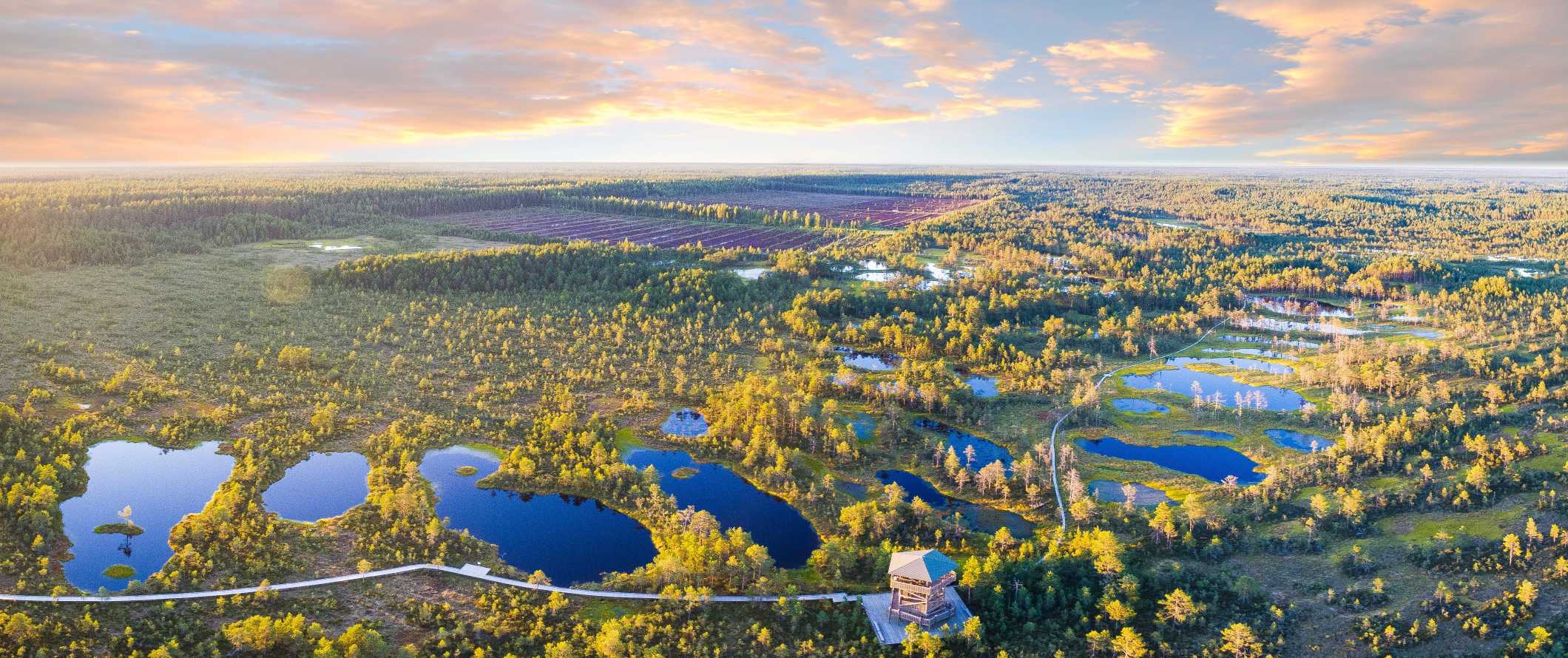
Public transportation – In most smaller towns and cities in Estonia, it’s possible to walk everywhere. However, in larger cities like Tallinn, you may want to use public transport to get around. In Tallinn, you can purchase QR-code tickets or load money onto a Smartcard (a pre-paid bus card). There is an extensive network of trams, trolleys, and buses that service the city and surrounding suburbs.
Public transportation prices vary by city but expect to pay around 1.50 EUR for a standard 1-hour adult ticket.
Train – The trains in Estonia are reliable, cheap, and fast. Many even have free Wi-Fi. You can take an express train to Tartu from Tallinn in just two hours for 8-12 EUR each way. The two-hour journey from Tallinn to Viljandi is 10-12 EUR while the seven-hour train ride from Tallinn to Riga, Latvia starts at just 15 EUR.
Bus – Many people favor train travel over bus travel in Estonia because the prices are similar and, in many cases, the trains are faster. However, there are more scheduled buses per day than trains so the bus might better fit your schedule.
Buses start at just 5 EUR. To get from Tallinn to Tartu takes 2.5 hours (just 30 minutes longer than the train) and costs around 10 EUR. The bus from Tallinn to Saaremaa Island takes around 4 hours and costs 11 EUR while the journey from Tallinn to Viljandi takes just over 2 hours and costs 9 EUR. Expect to pay around 16 EUR for the 5.5-hour bus to Riga, Latvia.
Flying – Although there are domestic flights within Estonia, they’re prohibitively expensive and won’t save you any time as a high-speed train is almost as fast when you include check-in time. Skip flying.
Car rental – Car rentals cost as little as 28 EUR per day. You need an International Driving Permit (IDP) in order to rent a car here. For the best car rental prices, use Discover Cars .
When to Go to Estonia
The summer months of June-August are the busiest of the year (though busy in Estonia is far less busy than cities in Western Europe). During this time, the days are longer and the temperatures hover around 20°C (68°F). Almost all of Estonia’s festivals are held during these months.
To beat the crowds, visit between April-May or September-October. During these months, the temperatures are cooler, making it the perfect time to get outdoors and camp or hike. Plus, the peak tourist season is over so the crowds are thinner and things are a little cheaper.
During the winter, temperatures plummet and the country is blanketed in snow. Visiting Estonia during the winter can be a magical experience if you are interested in skiing or Christmas markets. Be warned though — temperatures can drop to -10°C (15°F).
How to Stay Safe in Estonia
Estonia is a safe country with a low crime rate. Within Tallinn, petty theft (including pickpocketing) is possible in the heavily-touristed areas, as well as on crowded public transportation and in busy bars/clubs. Keep your valuables out of sight and watch out for people (especially younger children) trying to distract you.
Solo female travelers should generally feel safe here, however, the standard precautions apply (never leave your drink unattended at the bar, never walk home alone intoxicated, etc.).
If you’re heading out to enjoy Tallinn’s famous nightlife, leave your valuables at home. Avoid walking alone at night and stick to the main roads. Muggings are rare, but they can occur. Travel in pairs or groups if possible and avoid walking alone at night if intoxicated, just to be safe.
One thing to be aware of is that reflectors are required by law to be worn by pedestrians at night. You can pick them up in most supermarkets cheaply and you just need to attach one to your jacket or bag when out after dark.
Scams here are rare but you can read about common travel scams to avoid here.
If you do experience an emergency, dial 112 for assistance.
The most important piece of advice I can offer is to purchase good travel insurance. Travel insurance protects you against illness, injury, theft, and cancellations. It’s comprehensive protection in case anything goes wrong. I never go on a trip without it as I’ve had to use it many times in the past. You can use the widget below to find the policy right for you:
Estonia Travel Guide: The Best Booking Resources
These are my favorite companies to use when I travel. They consistently have the best deals, offer world-class customer service and great value, and overall, are better than their competitors. They are the companies I use the most and are always the starting point in my search for travel deals.
- Skyscanner – Skyscanner is my favorite flight search engine. They search small websites and budget airlines that larger search sites tend to miss. They are hands down the number one place to start.
- Hostelworld – This is the best hostel accommodation site out there with the largest inventory, best search interface, and widest availability.
- Booking.com – The best all around booking site that constantly provides the cheapest and lowest rates. They have the widest selection of budget accommodation. In all my tests, they’ve always had the cheapest rates out of all the booking websites.
- HostelPass – This new card gives you up to 20% off hostels throughout Europe. It’s a great way to save money. They’re constantly adding new hostels too. I’ve always wanted something like this and glad it finallt exists.
- Get Your Guide – Get Your Guide is a huge online marketplace for tours and excursions. They have tons of tour options available in cities all around the world, including everything from cooking classes, walking tours, street art lessons, and more!
- The Man in Seat 61 – This website is the ultimate guide to train travel anywhere in the world. They have the most comprehensive information on routes, times, prices, and train conditions. If you are planning a long train journey or some epic train trip, consult this site.
- Rome2Rio – This website allows you to see how to get from point A to point B the best and cheapest way possible. It will give you all the bus, train, plane, or boat routes that can get you there as well as how much they cost.
- FlixBus – Flixbus has routes between 20 European countries with prices starting as low 5 EUR! Their buses include WiFi, electrical outlets, a free checked bag.
- SafetyWing – Safety Wing offers convenient and affordable plans tailored to digital nomads and long-term travelers. They have cheap monthly plans, great customer service, and an easy-to-use claims process that makes it perfect for those on the road.
- LifeStraw – My go-to company for reusable water bottles with built-in filters so you can ensure your drinking water is always clean and safe.
- Unbound Merino – They make lightweight, durable, easy-to-clean travel clothing.
- Top Travel Credit Cards – Points are the best way to cut down travel expenses. Here’s my favorite point earning credit cards so you can get free travel!
Estonia Travel Guide: Related Articles
Want more info? Check out all the articles I’ve written on Europe travel and continue planning your trip:

The 6 Best Hotels in Copenhagen

The 6 Best Hotels in Florence

The 7 Best Hotels in Madrid

The 6 Best Hotels in Vienna

The Best Walking Tours in Barcelona

How to Be a Digital Nomad in Europe
Get my best stuff sent straight to you, pin it on pinterest.
- Where To Stay
- Transportation
- Booking Resources
- Related Blogs

14 Top-Rated Attractions & Things to Do in Estonia
Written by Joni Sweet Updated Jul 26, 2022 We may earn a commission from affiliate links ( )
If you're looking for a change of pace from the typical European vacation, you should put Estonia on your short list of places to visit. One of the least crowded countries in Europe, this former Soviet state brims with preserved medieval cities, enchanting forests, misty bogs, and ancient traditions. It's like a fairy-tale setting in real life.
Your adventures will likely start in Estonia's capital, Tallinn , where you'll find plenty of things to do. Here, you'll walk on old city walls , eat countless slices of Estonian black bread, wander around the Russian orthodox cathedral, and get a bird's-eye view of the entire city from the Tallinn TV Tower.
Then , branch out and explore the rest of what this small-but-mighty country has to offer. Get pampered in the luxurious spas in Estonia's summer capital, Pärnu . Break out your binoculars at one of the world's best bird-watching destinations, Matsalu National Park. Bike along the beautiful Narva River Promenade. And once you've had your fill of the mainland, head out to one of Estonia's 2,000-plus islands.
There's no possibility of getting bored in this fantastic destination. Plan your sightseeing with our list of the top things to do in Estonia.
1. Tallinn's Old Town
2. kuressaare episcopal castle, 3. lennusadam seaplane harbour, 5. estonian national museum, 6. matsalu national park, 8. alpakafarm, 9. narva river promenade, 10. ahhaa science centre, 11. oru park, 12. toompea hill, 13. haapsalu old town, 14. rummu prison, map of attractions & things to do in estonia.
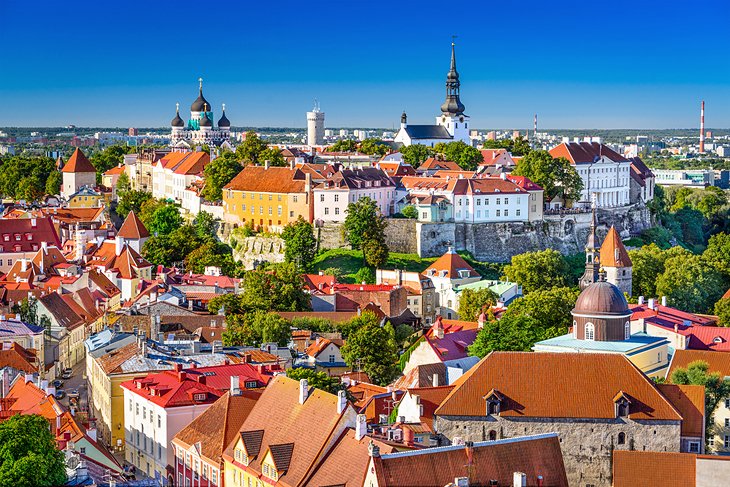
Whether your visit to Estonia is a full-fledged vacation or just a one-day stop on a Baltic cruise , you should spend as much time as your schedule allows touring Tallinn's Old Town. It's one of the world's most pristinely preserved Hanseatic town centers and was home to wealthy merchants from Denmark and Germany in the 13th century.
The Old Town, with its cobblestone streets and medieval churches , became a UNESCO World Heritage Site in 1997.
Start your journey at Raeapteek, one of Europe's oldest continually-running pharmacies . It has fascinating museum-like exhibits on antique medical tools and techniques. Head outside to the center of the Town Hall Square and look for the distinctive circular stone. From that point, you can try to spot the steeples of Tallinn's five historic churches .
See the art and Gothic arches in the Tallinn Town Hall , then make your way around the rest of the Old Town, checking out the churches , Russian orthodox cathedral, and the postcard-worthy view from the Patkuli platform. Sightseeing here feels like traveling back in time.
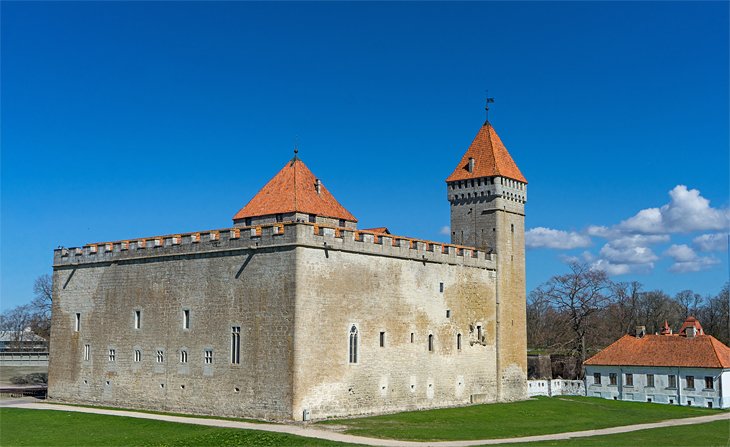
One of the best-preserved fortifications in the Baltic region, the moat-ringed Kuressaare Episcopal Castle has been standing tall since the 1380s.
You can spend the entire day soaking up the castle's Gothic atmosphere and wandering around its many unique spaces, including the convent building; steep staircases; central courtyard; cloister; refectory; and the bishop's living quarters, where 11 Baroque wood carvings are on display. Take in glorious views over a tasty lunch at the Tower Cafe.
The on-site history museum sheds light on what life was like during the time when this castle was in use many centuries ago through displays of one-of-a-kind artifacts (like more than 2,000 antique coins from as far back as the 1620s). Tourists can also watch and participate in traditional activities, like archery, pottery making, musical performance s, and firing Estonia's oldest working cannon , mostly during the busy summer months.
If you're traveling with a group, book the castle's Bishops Dinner . The two-hour culinary event includes dishes made from historic recipes and drinks served in goblets, along with a demonstration on proper table manners from centuries ago.
Address: Lossihoov 1, Kuressaare linn, Saaremaa vald, Saare maakond
Official site: http://www.saaremaamuuseum.ee/
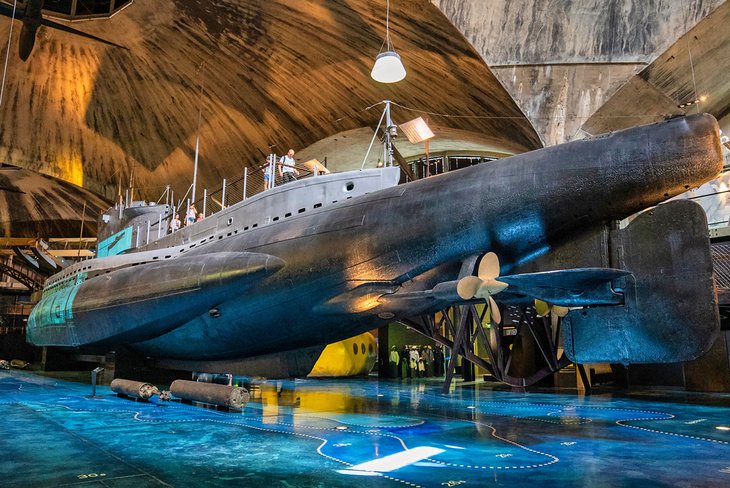
Appealing to both maritime enthusiasts and everyday tourists, the Lennusadam Seaplane Harbour is one of the best places to visit in Estonia. This award-winning museum in Tallinn houses around 200 authentic maritime artifacts and vessels in a historic seaplane hangar, which features the world's first high-volume, columnless, thin-shell concrete dome.
This attraction includes a 1930s-era submarine, 100-year-old steam-powered icebreaker, and the remains of the oldest ship in Estonia in the museum's permanent collection. You can also try on a navy uniform for a souvenir photo and learn the art of throwing paper airplanes.
A variety of interactive simulators offer guests an even more immersive experience, showing you what it's like to actually fly a plane.
Address: Vesilennuki tänav 6, Põhja-Tallinna linnaosa, Tallinn
Official site: http://meremuuseum.ee/lennusadam/en/
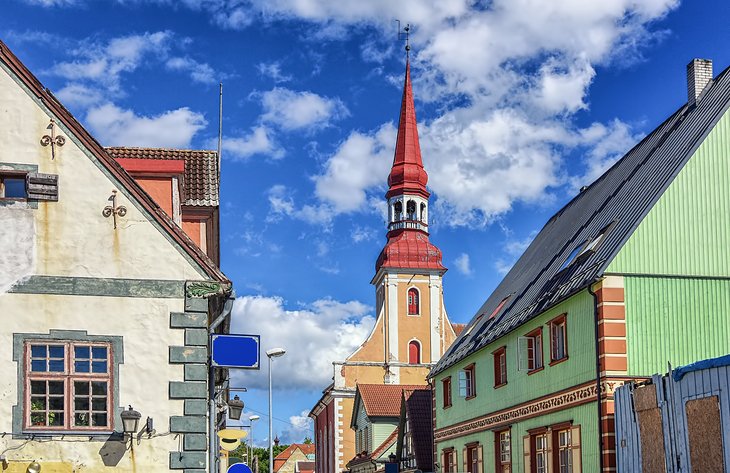
Just a two-hour drive from Tallinn, Pärnu beckons tourists with its gorgeous beach and small-town feel. This is the place to go in Estonia when you're ready to kick back, relax, and enjoy the sunshine.
Any of the town's distinctive spas will pamper you from head to toe, but for an extra-special experience, check out the Hedon SPA & Hotel . Approaching 200 years old, the spa is the oldest of its kind in Estonia and offers healing mud wraps that cleanse pores and leave skin silky smooth. After your treatment, relax in the saunas, salt pool, and summer terrace.
Don't miss the opportunity to tour the beautifully preserved historic town, which dates back to 1265. The tourist information center can connect you with a knowledgeable guide who will take you sightseeing around Pärnu.
You'll see a centuries-old house that once belonged to the town blacksmith; a statue of Estonian architect Olev Siinmaa; historic maps; secret passageways; and monuments dedicated to Johann Voldemar Jannsen, the "father of Estonian journalism" and founder of one of the oldest newspapers in the country, still published today.
Pärnu is also a great base for tourists who want to visit Kihnu island. Inhabited by a close-knit group of 700 people, the majority of whom are women, the island is known for its rich singing and musical traditions that date back 1,000 years. Look out for the older women wearing traditional clothes while zipping around the island on vintage motorcycles–it's a charming sight.
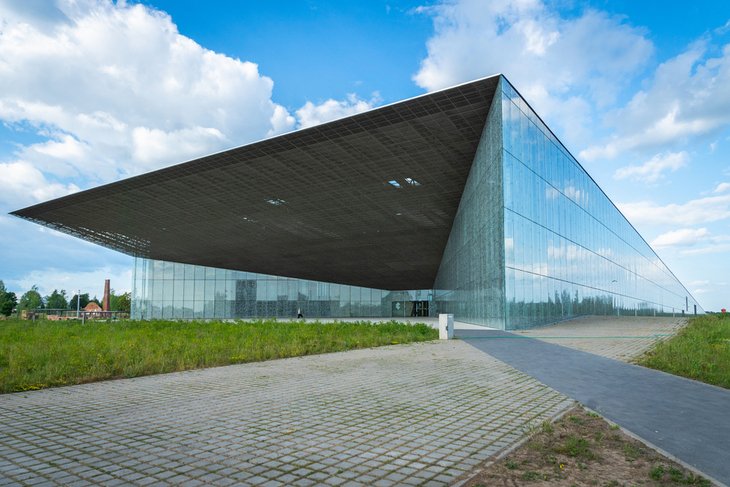
The Estonian National Museum is equally renowned for its fascinating permanent exhibits on Estonian history and culture, as well as its arresting architecture.
The building, a conceptual art piece opened on a former Soviet military base in 2016, was designed to resemble an airfield taking off into space. At night, the lighting makes it an especially impressive sight.
Give yourself at least half a day to explore the treasures inside the museum. The main permanent exhibition, "Encounters," allows tourists to peek into the lives of ordinary Estonians and their culture from the Ice Age to the modern day. "Echo of the Urals," the other permanent exhibit at this museum, focuses on the Finno-Ugric peoples. It includes a stunning display of cultural clothing and daily tools, like cooking utensils. High-tech installations throughout the museum make the experience even more interactive.
Address: Muuseumi tee 2, Tartu linn, Tartu
Official site: https://www.erm.ee/en
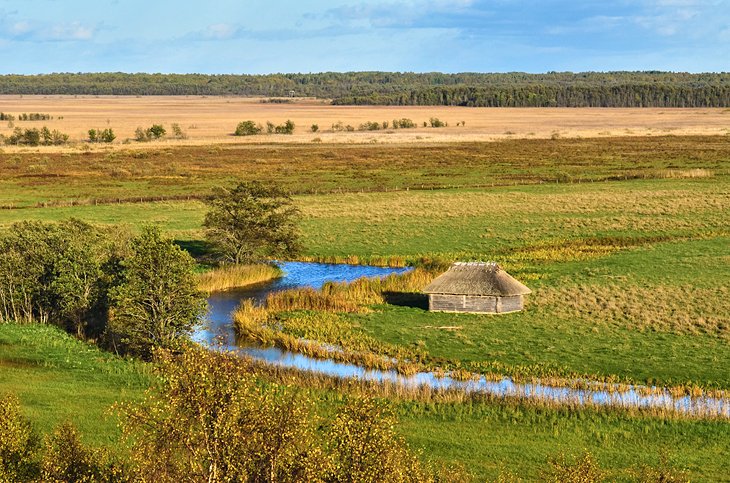
Tourists planning a trip to Estonia should be sure to pack their binoculars. The country's Matsalu National Park is reputed to be one of Europe's best bird-watching destinations .
Its 48,610 hectares are designated as a protected natural area for nesting, molting, and migrating birds, including the magnificent white-tailed eagle. The park is home to more than 22 protected plant species and 10 mammals undergoing conservation efforts.
Tourists can get a panoramic view of this beautiful landscape from several bird-watching towers in Haeska, Keemu, Kloostri , and other areas in the park. You can also enjoy a few hiking trails that will take you through the wetlands, coastal pastures, and meadows . Staying at one of the park's guesthouses will give you the chance to see the area at one of its most spectacular times of day: sunrise.
Official site: https://loodusegakoos.ee/where-to-go/national-parks/matsalu-national-park

Think the art of print and typography is lost in the digital age? Think again. Estonia keeps this cherished tradition alive at Typa, a private museum-studio in Tartu.
Formerly known as the Estonian Print & Paper Museum, Typa displays a range of historical printing machinery and paper-making equipment that will make you fall in love with the printed word once again. Tourists will see a mesmerizing array of letterpress alphabets in every style imaginable, sure to blow design lovers away.
Typa also offers a range of workshops that will allow you to try your hand at creating a notebook using a 150-year-old hand press, making paper from pulp, printing a manhole cover design on a T-shirt, or creating a linocut print. Or, commission a custom diary, print, or album from the pros on staff.
Address: Kastani tänav 48f, Tartu linn, Tartu
Official site: https://typa.ee/en/
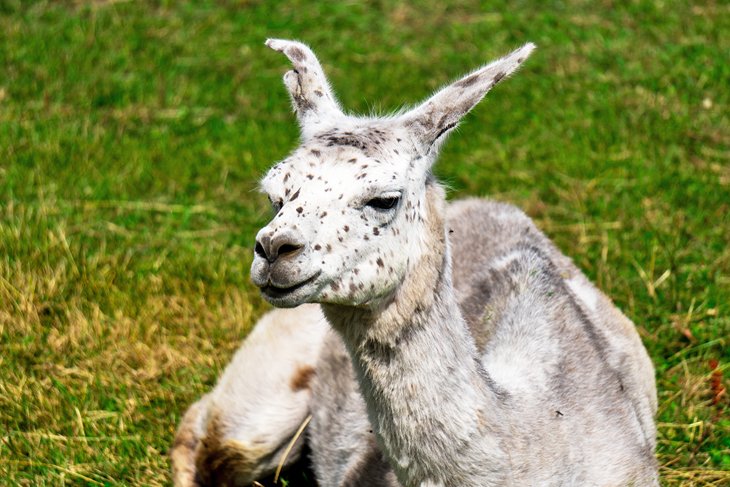
Who would guess that hanging out with Peruvian animals is one of the top-rated things to do in Estonia? Alpakafarm in Pärnu has won over tourists with its petting zoo of alpacas . The farm invites guests to learn about these popular animals and touch their pillowy soft coats.
Alpacas aren't the only creatures on the scenic farm, though. You can also interact with adorable Cameroon goats (a type of pigmy goat) , well-trained llamas, and guanacos (a relative of llamas know for their calm demeanor and thick eyelashes) . After meeting the animals, take home some authentic alpaca souvenirs, fluffy toys, sweaters, and toasty slippers from the farm shop.
Address: Laane, Niidu küla, Tori vald, Pärnu maakond
Official site: https://alpakafarm.ee/en/
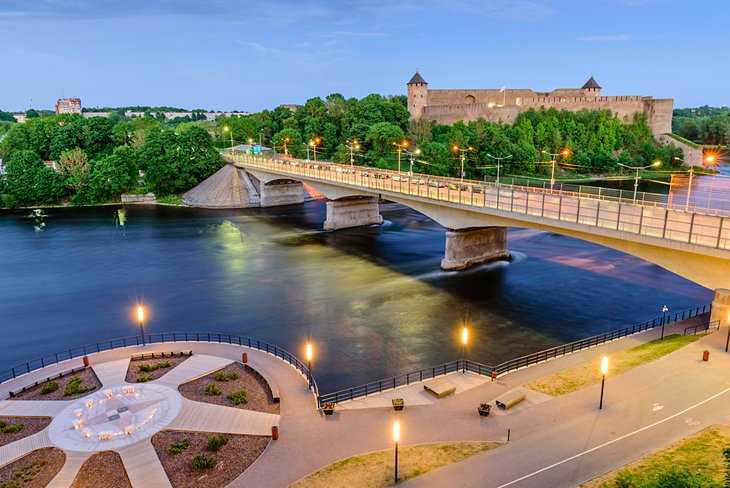
Few other areas in Estonia rival the incredible sightseeing opportunities at the Narva River Promenade. The nearly one-kilometer-long waterfront walkway runs along the western banks of the Narva River , the natural border between the European Union and Russia.
No matter where you are on the serene promenade, you'll find something interesting and beautiful to see. Toward the west, you can check out the bastion walls and the Hermann Castle , a 14th-century stone structure. The Narva harbor stands prominently north of the promenade. And in the south, tourists can visit the Joaorg recreation area , which has a beach house. From here, you can rent bikes, sun beds, volleyballs, and badminton sets.
Spend an afternoon walking or biking the promenade, observing the fly fisherman, and watching the sunset.
Address: Jõe tänav, Narva
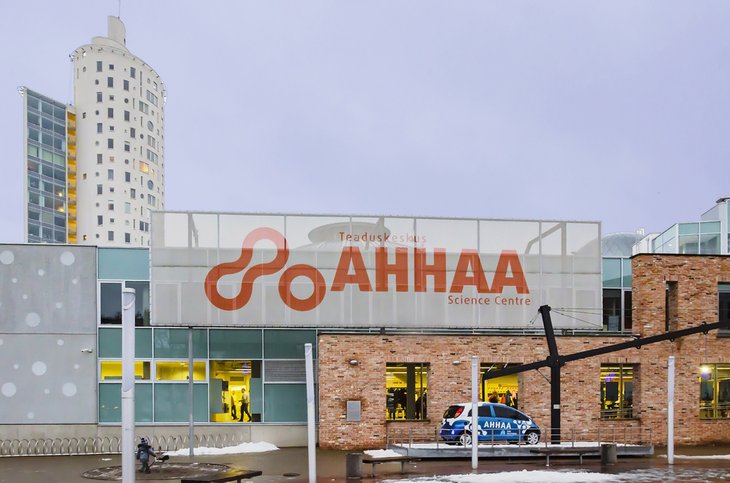
The AHHAA Science Centre in Tartu isn't your typical science museum. Rather than putting displays behind glass, the 3,000-square-meter space offers hands-on exhibits visitors can interact with, making science fun and magical.
Tourists can make their way through a labyrinth of mirrors, ride a bike across an elevated rope, and snap selfies while popping a balloon in the Hall of Technology.
The Hall of Nature focuses on the many creatures of the world. That permanent exhibit contains a colony of 20,000 wood ants and schools of tropical fish in a 6,000-liter tank, among other fun displays. The museum also invites tourists to watch fluffy chicks hatch from eggs.
Time your visit around one of the amazing Planetarium Shows, which take visitors on an intergalactic journey.
Address: Sadama tänav 1, Tartu linn, Tartu
Official site: https://www.ahhaa.ee/
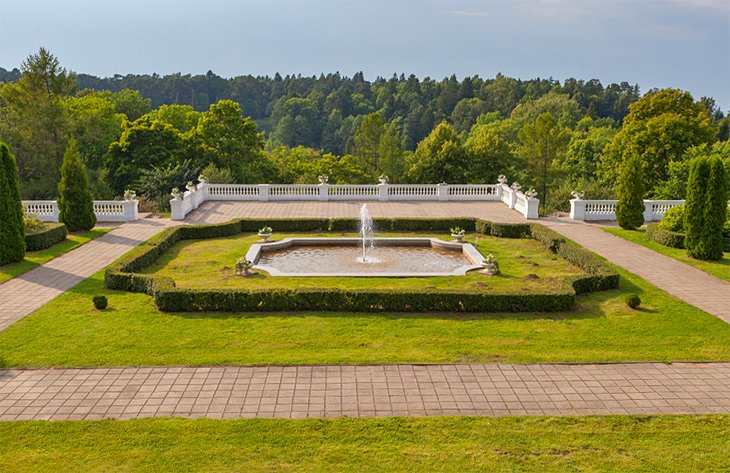
Tucked in the picturesque Pühajõgi River valley , Oru Park makes for a relaxing getaway in the northeastern Estonian town of Toila. The park has the regal design sensibilities of the rich Russian man who built it in the 19th century. Think Topiary gardens in hypnotic shapes, pretty fountains, viewing platforms on balconies, and flowers galore.
Pack a swimsuit if you're visiting Oru Park during the summer. There's a path that takes you to a pristine pebble beach –perfect for sunbathing or wading in the water.
After your visit, continue unwinding at the famous Toila Baths. The day spa features a variety of saunas , including infrared, aromatherapy, and salty air, along with Jacuzzi tubs. The entire space feels like it was plucked from ancient Rome.
Address: Oru tänav-21, Toila alevik, Toila vald, Ida-Viru maakond
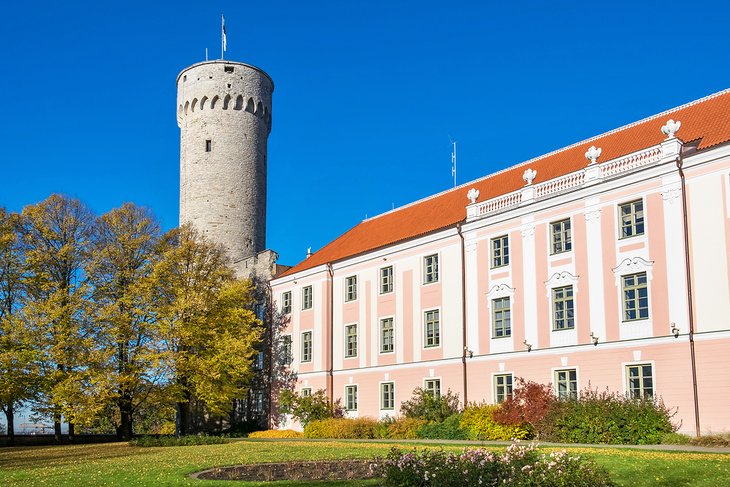
While exploring Tallinn's Old Town, you'll want to make a point to climb Toompea Hill. According to Estonian folklore, the hill covers the grave of a mythical king named Kalev, whose 12 sons are responsible for unexplained phenomena in nature. A 157-step staircase connects the town to the top of the hill, where you can catch incredible views of the entire city from a few viewing platforms around the area.
While here, you can also see the Toompea Castle , a striking pink building that serves as the headquarters for the Estonian parliament. You can watch sessions of parliament from the public gallery or take an excursion through the castle on weekdays (advanced booking required). Be sure to take a look at the flag waving atop the castle's Tall Hermann tower –it's considered an important symbol of Estonian independence.
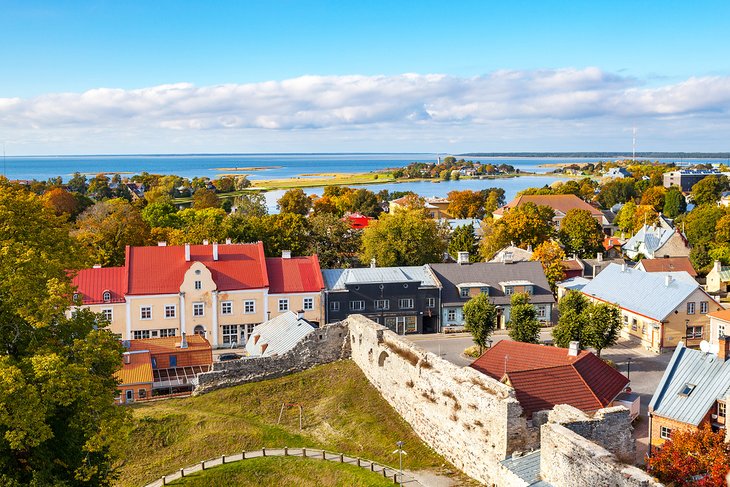
Tallinn's not the only place in Estonia with a popular Old Town . Drive 90 minutes southwest of the capital, and you'll reach Haapsalu, a picturesque seaside town whose historic center still stands on a peninsula. It features well-preserved medieval streets and the stunning Haapsalu Castle .
Built in the 13th century, the castle is now a museum with exhibits on its construction, the history of Haapsalu, and the lives of local rulers. There's also an interesting Lace Center Museum and Gallery . It's dedicated to preserving and showcasing the renowned shawls created in the town. They're knitted so finely that they can be slid through a ring.
In addition to its antique attractions, Haapsalu's Old Town is also known for its history as an early 20th-century resort district. You can celebrate this heritage by taking a therapeutic mud bath at a local spa–just the thing to restore your body after a long day of sightseeing.
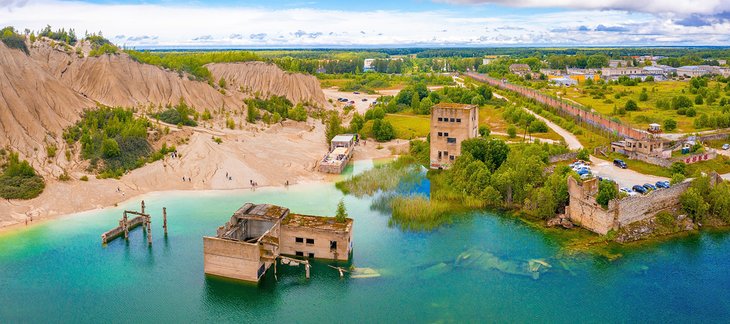
Just outside the small town of Rummu is one of the world's most unique diving sites : Rummu Prison. It was once a Soviet prison, where inmates would toil in a limestone quarry, but the site was abandoned when Estonia regained its independence. Since then, natural groundwater has rapidly submerged the former prison, preserving its mining machines, buildings, barbed wire, and lampposts. There's also a flooded forest covered with algae.
Keep in mind that this dive site is an overhead environment. Only experienced divers with ample training should attempt to visit this site.

20 Best Places to Visit in Estonia

Interested to see the Baltic countries? Why not start at the very north! We compiled the best places to visit in Estonia you must not miss!
Estonia, located in Northern Europe, is a beautiful and historic country with a rich cultural heritage. It offers many tourist attractions, making it an ideal place to visit. One of the must-visit places in Estonia is Toompea Hill, which holds historical and cultural significance.
Situated in Tallinn’s Old Town, this hill offers breathtaking views of the city and the Baltic Sea. Toompea Hill has been a focal point for centuries, witnessing numerous historical events and preserving its architectural wonders.
The hill is home to the Estonian Parliament and several other important government buildings. As you explore this area, you’ll notice the blend of different architectural styles from various periods.
This adds a distinct cultural flavor to the area and further enriches Estonia’s diverse heritage. Southern Estonia also boasts some beautiful places that are worth visiting.
Tartu, the second-largest city in Estonia, stands tall as a cultural hub with its vibrant university life and renowned Estonian National Museum. This museum showcases fascinating exhibits that delve into Estonia’s history and traditions.
For maritime enthusiasts, Seaplane Harbour should be among their top choices. Located in Tallinn on the northern coast, it’s an impressive seaplane hangar turned museum that showcases Estonia’s maritime history through interactive exhibits and displays.
Apart from these prominent attractions mentioned above, rural Estonia hides many other places waiting to be discovered by intrepid travelers. The countryside landscapes are picturesque, with vast open fields dotted with charming wooden farmhouses and barns painted in traditional shades of red.
Whether you’re exploring Toompea Hill with its captivating views or immersing yourself in Tartu’s cultural scene at the Estonian National Museum – there is something for everyone when it comes to exploring beautiful places in Estonia. From the maritime allure of Seaplane Harbour to the rustic charm of rural Estonia, this country has many attractions that will leave a lasting impression on any visitor.
Follow me on Instagram , where you’ll see more personal tips about living in Finland from a local resident chef and content creator 🍃🍃🍃
📚 Do you want to learn the Finnish language for FREE ? Check out Spark Your Finnish course! 🇫🇮 How about diving into Finland’s culture? Here’s another FREE culture class to learn how to connect with Finns ❗️ Be insured before your trip to Finland and get a SafetyWing FREE insurance quote 📚 Read our post about why you should always have insurance ✈️ Find out how to find cheap flights to Finland using Skyscanner or find deals now
Table of Contents

Tartu, the second-largest city in Estonia, is a vibrant and culturally rich destination that should be noticed on your visit to Estonia. Along the Emajõgi River’s banks, Tartu offers a unique blend of historical charm, academic excellence, and natural beauty.
As you explore Tartu, visit its most famous landmark – the University of Tartu. This prestigious institution was founded in 1632 and has significantly shaped the city’s identity.
Take a leisurely stroll through its picturesque campus with beautiful buildings and tranquil gardens. Enjoy visiting the university museum showcasing fascinating Estonian history and culture exhibits.
In addition to its academic prominence, Tartu boasts an enchanting old town that transports visitors back in time. Walk along narrow cobblestone streets with charming medieval buildings adorned with colorful facades.
The Town Hall Square is a focal point of activity with its bustling cafes and restaurants where you can sample traditional Estonian cuisine while soaking up the lively atmosphere. For art enthusiasts, visiting the Tartu Art Museum is an absolute must.
This museum houses an impressive collection of Estonian art from different periods, offering insight into the country’s artistic heritage. From classical paintings to contemporary installations, there is something for every taste.
Nature lovers will find respite in Toomemägi Park, atop a hill overlooking the city. This peaceful oasis features lush greenery, winding paths, and several historical monuments, such as ruined cathedral walls and observation towers.
It’s an ideal spot for picnics or simply taking in panoramic views of Tartu. If you’re interested in maritime history or simply want to experience something extraordinary during your trip to Estonia, consider visiting the Estonian Maritime Museum’s branch located at Patarei Sea Fortress-Prison in Tallinn or Suur Tõll submarine at Seaplane Harbour (Lennusadam).
These unique attractions provide a glimpse into Estonia’s seafaring past, where you can explore old prison cells, climb aboard a submarine, or learn about maritime traditions. Tartu offers an array of experiences for travelers seeking a combination of history, culture, and natural beauty.
Whether captivated by its medieval architecture or intrigued by its academic legacy, this charming city has something for everyone. So make sure to include Tartu in your itinerary when planning your visit to Estonia, and allow yourself to be enchanted by its allure.

Pärnu, often referred to as the “ summer capital” of Estonia, is a charming coastal city in the heart of the country. Known for its beautiful sandy beaches and vibrant atmosphere, it is one of the best places to visit when exploring the cities in Estonia. The main attraction in Pärnu is its stunning beach, stretching along the Baltic coast for about 4 kilometers.
With soft golden sand and crystal clear waters, it has earned a reputation as one of Estonia’s most beloved summer destinations. Whether you’re looking to soak up the sun, take a refreshing swim, or indulge in beachside activities like volleyball or frisbee, Pärnu’s beach offers something for everyone.
Aside from its picturesque coastline, Pärnu also boasts a rich historical heritage. The city has been an important trading hub since ancient times. It bears witness to various architectural styles throughout its streets.
Strolling through Old Town will transport you back in time with its well-preserved wooden houses and cobblestone streets. Don’t miss out on visiting St. Elizabeth’s Church with its impressive spires or exploring Tallinn Gate—the only remaining gate from the medieval city walls.
If you’re interested in immersing yourself in nature during your visit to Pärnu, Soomaa National Park is just a short trip away. This vast wilderness covers nearly 400 square kilometers. It is famous for its large floods during springtime when rivers overflow their banks.
Visitors can explore this unique landscape by canoeing or hiking through pristine forests and wetlands while encountering various wildlife species. For those seeking cultural experiences, Pärnu offers several museums and galleries worth exploring.
The Estonian Museum of New Art showcases contemporary works by local artists alongside international exhibitions—an absolute treat for art enthusiasts. Additionally, The Museum of Pärnu introduces visitors to the city’s history through interactive displays that provide insight into life during different periods.
Don’t forget to indulge in the delectable cuisine that Pärnu has to offer. The city is known for its vibrant dining scene, with numerous restaurants serving traditional Estonian dishes and international flavors.
Be sure to try the local specialties such as smoked fish, black bread, and kama—a traditional Estonian dessert made of roasted grains. Pärnu is undoubtedly one of Estonia’s amazing places that should be on every traveler’s list.
Its stunning beaches , rich history, natural wonders like Soomaa National Park, cultural attractions such as museums and galleries, and delicious cuisine offer diverse experiences. Whether you’re seeking relaxation by the sea or eager to delve into Estonia’s past and present, Pärnu has something for everyone.

Located off the western coast of Estonia, Saaremaa is a captivating island you want to visit when exploring this beautiful country. Known for its picturesque landscapes, rich history, and unique culture, Saaremaa offers a truly enchanting experience for travelers. With plenty of attractions and activities, let’s dive into what makes Saaremaa a must-visit destination.
One of the highlights of Saaremaa is its remarkable nature. The island boasts an abundance of lush forests, pristine beaches, and tranquil lakes that are perfect for leisurely strolls or picnics with loved ones.
Hiiumaa, another nearby island often referred to as Saaremaa’s sister island, is easily accessible from here and well worth visiting. Saaremaa also houses the UNESCO-listed Kuressaare Castle.
Built-in the 13th century, this medieval fortress is one of Estonia’s oldest and best-preserved castles . It offers visitors a glimpse into Estonia’s rich history while exploring its ancient walls and towers.
The castle also hosts various cultural events throughout the year. Aside from historical landmarks, Saaremaa is known for its charming coastal villages, such as Kuressaare Old Town and Panga Village.
Kuressaare Old Town exudes a quaint atmosphere with its narrow cobblestone streets lined with colorful houses and delightful cafes. Panga Village is renowned for its stunning cliffs that offer breathtaking views over the Baltic Sea.
If you’re seeking some adrenaline-pumping activities on your trip to Saaremaa, head over to Angla Windmill Hill, where you can witness traditional windmills dating back to the 19th century. You can even try windmill climbing or learn about traditional Estonian handicrafts at the on-site museum.
A journey to Saaremaa would only be complete with visiting one of its iconic lighthouses. The Sõrve Lighthouse, located on the island’s southern tip, is among Estonia’s best places to see.
Standing tall and proud at 52 meters, this maritime beacon offers panoramic views of the surrounding area. It serves as a reminder of Saaremaa’s rich seafaring heritage. Saaremaa is a hidden gem that should definitely be on your list of places to visit in Estonia.
With its natural beauty, historic landmarks, and unique cultural experiences, this island offers something for everyone. From exploring ancient castles and charming villages to immersing yourself in breathtaking landscapes and traditional activities, Saaremaa will leave you with lasting memories and a deep appreciation for this remarkable corner of Estonia.

Hiiumaa is a hidden gem in Estonia that is definitely worth a visit. Located in the Baltic Sea, this island offers a unique blend of stunning landscapes, rich history, and a laid-back island vibe.
It’s a great place to visit if you want to escape the hustle and bustle of city life and immerse yourself in nature. One of the main attractions in Hiiumaa is the Kõpu Lighthouse.
Standing tall at 36 meters, it is one of Estonia’s oldest lighthouses and offers breathtaking views from its observation deck. The lighthouse has an interesting history dating back to 1531 when it was first mentioned in historical records.
If you’re interested in history, visit the Tahkuna Peninsula, where you’ll find remnants of old military structures. These bunkers were used during World War II to defend against potential enemy attacks.
Exploring these bunkers gives you a glimpse into life during those turbulent times. For nature enthusiasts, Hiiumaa offers several stunning beaches, such as Kärdla Beach and Ristna Beach, where you can relax on golden sands and dip in the refreshing waters of the Baltic Sea.
The island also boasts beautiful forests and walking trails, perfect for hiking or biking. When visiting Hiiumaa, explore its charming villages, such as Käina and Kassari.
These villages are known for their traditional wooden houses that showcase authentic Estonian architecture. You can also visit local artisans who create handmade crafts using traditional techniques.
Try local delicacies such as smoked fish from Hiiumaa’s coastal waters or fresh honey produced by local beekeepers to satisfy your taste buds. Cozy cafes and restaurants allow you to enjoy traditional Estonian cuisine with locally sourced ingredients.
Hiiumaa is one of Estonia’s hidden treasures waiting to be discovered. Its stunning landscapes, rich history, and charming villages offer a unique experience for travelers seeking an off-the-beaten-path adventure.
Whether you are interested in nature, history, or simply unwinding on beautiful beaches, Hiiumaa has something for everyone. So pack your bags and embark on a memorable trip to this enchanting island in southern Estonia.

Nestled on the eastern border of Estonia, Narva is a hidden gem often overlooked by travelers visiting the country. Despite being overshadowed by its more popular counterparts like Tallinn and Tartu, Narva has unique charm and historical significance that makes it worth visiting. Narva Castle is one of the main attractions in Narva, which stands proudly on the banks of the Narva River.
Built-in the 13th century, this medieval fortress has witnessed countless battles and sieges. As you explore its ancient walls and towers, you can’t help but feel transported back in time.
The castle also offers stunning panoramic views of the Russian side of the river and Estonia, allowing visitors to appreciate the city’s cross-cultural influences. Another must-visit spot in Narva is Hermann Castle, located just across from Narva Castle on the Russian side.
This grand fortress is one of Estonia’s oldest lighthouses. It serves as a symbol of both strength and cooperation between two neighboring nations. Standing atop Hermann Castle’s tower provides a breathtaking view of the Baltic Sea coastline in all its natural beauty.
For those seeking to immerse themselves in rural Estonia, I recommend a trip to Kreenholm Island. This picturesque little island is home to the Kreenholm Factory Complex, once one of Europe’s largest textile mills in operation during the 19th century.
It has been transformed into a cultural hub that houses art studios, galleries, workshops, and even a museum showcasing the island’s industrial heritage. History enthusiasts will also find plenty to explore in Narva’s Old Town district.
Strolling through its narrow cobblestone streets feels like stepping into a time capsule filled with beautiful, historic buildings that have managed to withstand centuries of change. The Alexander Church is particularly striking with its eye-catching blue façade and intricate architectural details.
Last, nature lovers can escape the buzz of the city by visiting the Narva River Promenade. This scenic walkway stretches along the riverbank, offering mesmerizing views of the flowing water and lush greenery.
Take a leisurely stroll or rent a bike to fully appreciate this delightful spot, especially during sunset when the sky paints a breathtaking canvas of colors. While Narva may not feature prominently on everyone’s list of places to visit in Estonia, it is undoubtedly a place worth exploring.
From its medieval castles and historic landmarks to its natural beauty and cross-cultural influence, Narva has something to offer every type of traveler. So, if you find yourself in Northern Europe craving an off-the-beaten-path experience, include this charming city in your itinerary.
Are you planning your travels? Here’re my top travel resources!
I’m a serial planner both in life and in travel – I have bucket lists, things to do, see, and everything. So, I always love when my life is sorted easily using tools and resources that would make my general planning a little smoother and easier. Therefore, in my many years of traveling the world, I’ve seen myself returning to these travel resources repeatedly. And here I am, sharing my tips to make your life easy and breezy so you can stress less, travel heaps, and focus on the fun part of travel!
- Booking.com – I book all my hotels through this website and don’t honestly use anything else. They always have the best prices, in my opinion.
- Airbnb – If I’m traveling long-term to one destination, I book my flats through Airbnb.
- Skyscanner – The best place to find cheap flights on flexible dates. I use this a lot to score cheap flights within Europe!
- SafetyWing – Always travel insured! Never leave your home country without one. It is worth the extra money, I promise you!
- GetYourGuide – Hands-down, the best place to find cool and unique tours if you don’t feel like winging it, and go straight to a local expert. I use this a lot in new destinations to get acquainted with the area!
- My Pretty Wild World Travel Diary (coming soon) – A book you can write down your travel plans, create itineraries, track down your budget, and dot down memories along the way! A handy book you can keep and read later to revisit memory lane.
- Pretty Wild World Travel Planning Printables (coming soon) – Are you a nut like me when it comes to planning? Yes? Good. My travel planning resource in one zip file is an easy-to-use printable planner that comes with tips that helps you plan your travels during the planning stage, a pre-flight checklist, an itinerary planner, and so on.

Nestled on Estonia’s western coast lies the picturesque and charming town of Haapsalu. This hidden gem is a must-visit destination in Estonia, offering a unique blend of natural beauty, rich history, and captivating architecture.
Known for its stunning seaside location and historic charm, Haapsalu is an idyllic getaway that will leave you enchanted. As you make your way to Haapsalu, you’ll be greeted by the sight of the famous Haapsalu Castle.
This medieval fortress stands proudly overlooking the town and its surrounding lush greenery. Stepping into the castle grounds feels like stepping back as you explore its ancient walls and towers that once served as a stronghold against invaders.
A visit to Haapsalu would only be complete with experiencing one of its most iconic landmarks – the hauntingly beautiful Railway Station. This ornate wooden station transports you to a bygone era with its intricate detailing and old-world charm.
As you stroll along the platform or sit on one of the benches, you can almost imagine yourself awaiting a train bound for distant lands. Haapsalu is also home to numerous historic spas that have long been renowned for their healing powers.
Embrace relaxation at one of these rejuvenating havens as you indulge in soothing treatments or dip in mineral-rich waters. These spas offer an oasis of tranquility where visitors can unwind amidst elegant surroundings while enjoying stunning views of the Baltic Sea.
For those with an appetite for cultural exploration, Haapsalu boasts several museums showcasing its fascinating history and artistry. The Museum of Coastal Swedes provides insight into the region’s Swedish heritage. At the same time, the Ilon’s Wonderland Museum offers delightful exhibits dedicated to children’s book author Astrid Lindgren.
Take some time to wander through these captivating venues; they will spark your curiosity and deepen your appreciation for Estonian culture. As evening descends upon Haapsalu, be sure to catch a glimpse of its breathtaking sunsets.
Head down to the waterfront and watch the sky ablaze with orange, pink, and purple hues as the sun dips below the horizon. The tranquil atmosphere and awe-inspiring views make for an unforgettable experience, creating lasting memories of your visit to Haapsalu.
Haapsalu is just one of the many amazing places to visit in Estonia. This charming coastal town offers a captivating blend of historic landmarks, natural beauty, and cultural experiences that enchant you.
Whether exploring its medieval castle, indulging in spa treatments, or immersing yourself in its rich history through museums, Haapsalu has something for every traveler seeking an authentic Estonian experience. So pack your bags and embark on an unforgettable journey to this hidden gem in northern Europe – you won’t be disappointed!

Rakvere is a charming northern Estonia town known for its rich history and captivating attractions. Situated about 100 kilometers east of Tallinn, the city’s heart is a delightful mix of old-world charm and modern conveniences.
Many places to visit in Rakvere will leave you with lasting memories. One of the must-see attractions in Rakvere is the imposing Hermann Castle.
This medieval fortress stands proudly on a hill overlooking the city and offers panoramic views of the surrounding landscape. Inside, you can explore fascinating exhibitions that showcase the castle’s history and learn about its role as a stronghold throughout different periods.
The castle also hosts various events, such as medieval festivals, bringing its colorful past to life. Head to Rakvere’s beautiful parks to embrace nature’s tranquility.
The central park is located near the castle and is ideal for leisurely strolls or picnics. As you wander through its lush greenery, you’ll encounter charming pathways, serene ponds, and well-maintained gardens.
It’s truly a peaceful oasis amidst the bustling city. For those interested in exploring Estonian history further, visit Rakvere’s Tarvas Statue – an iconic symbol of the town’s heritage.
This bronze sculpture represents an aurochs (an extinct type of wild cattle). It serves as a tribute to ancient Estonian mythology. Take time to admire this striking monument while learning about its significance from nearby information boards.
Additionally, Rakvere offers abundant opportunities for cultural immersion through its museums and galleries. Visit Eesti Tuletornide Muuseum (Estonian Lighthouse Museum) to delve into Estonia’s maritime heritage or explore Võhmuta Manor Museum, which displays artifacts showcasing rural life in bygone eras.
To relax after exploring all these captivating sights, treat yourself to some local cuisine at one of Rakvere’s cozy restaurants or cafes. Indulge in traditional Estonian dishes like sült (jellied meat), verivorst (blood sausage), or kama (a mixture of crushed grains).
Remember to savor a glass of locally brewed beer or sip on some Vana Tallinn liqueur, a staple in Estonian culture. Rakvere is a hidden gem among the many amazing places to see in Estonia.
From its medieval castle to its picturesque parks and cultural landmarks, this town offers an immersive experience of Estonia’s rich history and vibrant culture. So, if you’re planning a trip to this Baltic Sea country, make sure Rakvere is on your itinerary for an unforgettable adventure.
Lahemaa National Park

Lahemaa National Park is a gem nestled in the beautiful country of Estonia. This park covers around 725 km² and is a nature lover’s paradise with diverse landscapes and rich cultural heritage.
It is no wonder that Lahemaa National Park is often referred to as the “jewel of the Baltic.” One of the highlights of visiting Lahemaa National Park is its picturesque coastline along the Gulf of Riga .
The park boasts an impressive stretch of sandy beaches, rocky cliffs, and charming fishing villages that glimpse traditional Estonian coastal life. Strolling along the shoreline, you can take in the fresh sea breeze and soak up breathtaking views that are truly unrivaled.
For history buffs and culture enthusiasts, Lahemaa National Park also has much to offer. The park is home to several manor houses that date back to the 13th century when Estonia was part of the Teutonic Knights’ Livonian Order.
These majestic estates, such as Palmse Manor and Sagadi Manor, provide a fascinating insight into what life was like for Estonia’s noble families throughout history. Exploring deeper into the park’s lush forests and meandering trails will lead you to hidden lakes and pristine wetlands teeming with wildlife.
Keep an eye out for native species like moose, lynx, bears, and various birds while immersing yourself in Estonian nature at its finest. One must-visit attraction within Lahemaa National Park is Viru Bog — an enchanting natural wonderland filled with wooden boardwalks winding through marshy terrain blanketed by vibrant green mosses and colorful wildflowers.
The ethereal atmosphere created by the mist rising from bog pools makes Viru Bog an otherworldly experience you won’t forget. To fully appreciate all that Lahemaa National Park offers, consider embarking on one of its many hiking trails or cycling routes.
These paths will take you through dense forests, past scenic lakes, and charming villages where you can stop and interact with friendly locals, discovering firsthand the warm Estonian hospitality. Lahemaa National Park is undeniably one of Estonia’s greatest treasures.
With its stunning coastal landscapes, historic manor houses, diverse wildlife, and captivating natural wonders like Viru Bog, this park is an absolute must-visit for anyone planning a trip to Estonia. So next time you find yourself in this Baltic beauty of a country, be sure to carve out some time to explore Lahemaa National Park and experience the magic it has in store.

Kuressaare, located on Saaremaa Island, is a charming town that offers visitors a unique blend of history, natural beauty, and relaxation. As you explore the streets of Kuressaare, you’ll feel transported back in time with its well-preserved medieval castle and picturesque surroundings. One of the main highlights of Kuressaare is its magnificent castle.
The Kuressaare Castle stands proudly in the heart of the town and is one of Estonia’s best-preserved medieval fortifications. Take a leisurely stroll around the castle walls and imagine life centuries ago.
You can visit the Saaremaa Museum inside the castle to learn more about the island’s fascinating history. If you want to unwind and enjoy natural beauty, head to Spa Hotel Meri.
This spa resort offers treatments and therapies to rejuvenate your body and mind. After a relaxing massage or a soak in one of their mineral water pools, take a peaceful walk along Kuressaare’s coastal promenade and enjoy breathtaking sea views.
For those who appreciate nature, visit Kaali Meteorite Crater Field. This unique natural wonder consists of several meteorite craters formed thousands of years ago.
Explore the walking trails surrounding it and marvel at this geological phenomenon. Another attraction worth visiting is Panga Cliff.
Located just outside Kuressaare, Panga Cliff offers stunning panoramic views over the Baltic Sea. As you stand atop this steep cliffside, let yourself be mesmerized by nature’s grandeur as waves crash against the rocks below.
After exploring all that Kuressaare offers, indulge in some delicious local cuisine. Try traditional Estonian dishes such as mulgipuder (potato porridge) or sült (head cheese).
Be sure to pair your meal with a local craft beer or a shot of Vana Tallinn, a popular Estonian liqueur. Kuressaare is a great place to visit for its historical and natural attractions and its peaceful and laid-back atmosphere.
Whether you’re seeking relaxation or adventure, this charming town on Saaremaa Island has something to offer everyone. So, add Kuressaare to your list of must-visit places in Estonia and discover the hidden gems this coastal town has in store for you.
Otepää
Otepää, a small town in southern Estonia, is often referred to as the “ winter capital” of the country. Its picturesque landscape and abundance of outdoor activities attract locals and tourists throughout the year.
If you’re a nature lover or an adventure seeker, Otepää has plenty to offer. One of the highlights of Otepää is its stunning natural surroundings.
The town is surrounded by forests and picturesque hills, making it an ideal destination for hiking and biking enthusiasts. The Pühajärve Lake, located just outside the town center, offers a tranquil setting for leisurely walks and picnics.
During winter, the region transforms into a winter wonderland with opportunities for skiing and snowboarding. Otepää has its own share of attractions for those interested in history and culture.
One must-visit site is Tehvandi Sports Center, which hosted several events during the 2010 Winter Olympics. Here, you can try your hand at various winter sports or simply enjoy watching professionals in action.
Additionally, Otepää boasts one of Estonia’s oldest churches – St Mary’s Church – which dates back to the 13th century. This historical gem showcases stunning medieval architecture and provides insights into Estonia’s rich heritage.
Food lovers will also find delight in Otepää’s culinary scene. The town offers several cozy cafes and restaurants where you can sample traditional Estonian dishes made from locally sourced ingredients.
Don’t miss out on hearty Estonian soups like rosolje (beetroot salad) or verivorst (blood sausage) – they will satisfy your taste buds! When planning a trip to Estonia, visiting Otepää is highly recommended for those seeking an authentic experience beyond Tallinn’s old town or coastal destinations along the Baltic Sea.
With its captivating natural beauty, historical sites, and delicious cuisine, Otepää stands out as one of Estonia’s best places to explore. So whether you’re an adrenaline junkie looking for adventure or a history buff craving a glimpse of Estonia’s past, Otepää should definitely be on your list of must-visit destinations.

Viljandi is a charming town located in the southern part of Estonia. Often overshadowed by bustling cities like Tallinn and Tartu, Viljandi is a hidden gem that deserves more recognition.
With its rich history, picturesque landscapes, and vibrant cultural scene, this town offers travelers a unique and memorable experience. One of the highlights of visiting Viljandi is exploring its historical sites.
The ruins of Viljandi Castle provide a stunning view of the city and offer insights into what life was like during medieval times. As you wander around the castle grounds, you can imagine knights in shining armor patrolling the walls and hear echoes of ancient tales whispered through the centuries.
In addition to its historical charm, Viljandi also boasts numerous cultural events throughout the year. The Viljandi Folk Music Festival, held annually in July , attracts musicians from all over Estonia and beyond.
This event brings the town to life with lively performances on street corners and in cozy cafes, creating an unforgettable atmosphere. Nature enthusiasts will find plenty to explore in Viljandi as well.
The nearby Soomaa National Park offers breathtaking landscapes with pristine forests, winding rivers, and bog areas that transform into magical wonderlands during different seasons. Hike along nature trails or hop on a canoe to immerse yourself in this natural paradise.
If you’re looking for relaxation or family fun, visit Viljandi’s indoor water park – Aqua Spa. With multiple pools, slides, saunas, and jacuzzis, it’s a perfect place to unwind after exploring all Viljandi offers.
You can also take advantage of spa treatments available at Aqua Spa for an extra dose of pampering. But certainly not least on your list should be enjoying local cuisine at one of Viljandi’s cozy restaurants or cafes.
Indulge in traditional Estonian dishes such as herring salad or blood sausage, or try international flavors that have found their way into the town’s culinary scene. Viljandi offers a range of dining options to suit various tastes and budgets.
Viljandi is a place to visit in Estonia that should be noticed. While it may not be as well-known as the capital or the summer capital, this charming town has unique charm and attractions.
From exploring historical sites like Viljandi Castle to immersing yourself in nature at Soomaa National Park, there is something for everyone in Viljandi. So, if you plan a trip to Estonia, include this underrated gem on your itinerary.
Hold up! Have you thought about the importance of travel insurance?
Remember this: anything can happen. Travel is fun, but your health is more important; thus, I always, always, always recommend getting insured during the duration of your trip. I have benefitted from having one multiple times, and it has been covered for thousands of euros!
The latest one is not necessarily “health” related – it was during the peak of the unspeakable terrible C that consumed the world. I was living in Vietnam when I received an email from SafetyWing (my travel insurance) that if I want they’ll fly be back home to Finland as the world goes through a global emergency alert. I flew back fully covered, and dealing with SafetyWing was a breeze despite the roar of people in contact with them trying to get back home.
I can’t highly recommend them enough. Otherwise, I rarely get sick; hence I don’t always need to head to a hospital, but knowing that I have travel insurance makes me feel safe at the very least.
Read my post about why you should get travel insurance for more information. Otherwise, you can get a free quote from SafetyWing – they’re the best, in my opinion.
Alatskivi Castle

When exploring the charming countryside of Estonia, a visit to Alatskivi Castle is an absolute must. Nestled amidst serene surroundings in southern Estonia, this majestic castle returns you to a bygone era of grandeur and opulence.
Built in the 19th century, Alatskivi Castle is a striking example of neo-Gothic architecture. It offers a fascinating glimpse into the country’s rich history. As you approach the castle, you are immediately greeted by its imposing presence.
The intricate detailing on its exterior walls, with turrets and impressive towers, will leave you awestruck. Once inside, you’ll be transported to a world where nobility reigned supreme.
The castle boasts beautifully furnished rooms that reflect the elegance and sophistication of its former occupants. One of the highlights of Alatskivi Castle is the stunning park surrounding it.
Spread across vast acres of land, this park offers breathtaking views of the castle and the picturesque Estonian countryside beyond. Whether strolling through manicured lawns or wandering along meandering pathways shaded by ancient trees, there’s no denying this park’s tranquility and beauty.
Within Alatskivi Castle grounds lies an enchanting lake where visitors can enjoy leisurely boat rides or simply relax on its shores while enjoying the peaceful ambiance. This serene setting provides an ideal backdrop for capturing memorable photographs or immersing yourself in nature’s embrace.
For history enthusiasts, a visit to Alatskivi Castle is particularly rewarding as it houses an impressive museum dedicated to showcasing Estonia’s rich heritage. Here, you can learn about life during different periods and understand how people lived centuries ago.
This museum offers a comprehensive understanding of Estonia’s past, from ancient artifacts to historical documents and interactive displays. Alatskivi Castle is one of Estonia’s hidden gems that should be noticed during your trip to this Baltic nation.
Its stunning architecture, picturesque park, and captivating history make it a worthy addition to any itinerary. So, if you find yourself in southern Estonia, take the time to visit this remarkable castle and indulge in its timeless beauty.
Kadriorg Palace and Park

Kadriorg Palace and Park is undoubtedly one of Estonia’s most beautiful and historic places to visit. Located in the capital city of Tallinn, this stunning complex is a must-see for anyone exploring the country. The palace was built by Peter the Great in the early 18th century, and its grand architecture is truly awe-inspiring.
As you step into Kadriorg Palace, you’ll be transported back to an era of opulence and grandeur. The interior is adorned with exquisite artwork, intricate sculptures, and luxurious furnishings, all meticulously preserved to showcase its former glory.
Walking through its halls feels like stepping into Estonia’s rich history. But it’s not just the palace that makes this place special; it’s also the surrounding park.
Spread over 70 hectares, Kadriorg Park is a tranquil oasis filled with picturesque gardens, meandering paths, and charming fountains. It offers a perfect escape from the bustling city life. It is an excellent spot for a relaxing stroll or a romantic picnic amidst nature’s beauty.
One of the highlights of Kadriorg Park is definitely its stunning Swan Pond. This idyllic water body is home to graceful swans gliding across its surface, creating a serene atmosphere that soothes your soul.
Sitting by the pond and feeding these elegant creatures while enjoying the peaceful surroundings can be an incredibly calming experience. Another gem within this park is the Russalka Monument.
Standing tall at the edge of Tallinn Bay, this majestic sculpture represents souls lost at sea during shipwrecks. Not only does it carry immense historical significance, but it also offers breathtaking views of the Baltic Sea and Gulf of Riga.
If you love art or history, visit Kumu Art Museum, located within Kadriorg Park grounds. This contemporary art museum houses an impressive collection spanning several centuries. It showcases both local Estonian talent as well as international artists.
Exploring its galleries will undoubtedly leave you inspired and enriched by the artistic expression. Kadriorg Palace and Park is one of Estonia’s hidden gems that should be discovered and appreciated.
Whether you’re interested in history, art or simply seeking a peaceful escape amidst nature, this place offers it all. So make sure to include a visit to this remarkable destination when exploring the captivating beauty of Estonia.
Tuhala Witch’s Well (Tuhala Nõiakaev)

If you find yourself wandering through the enchanting landscapes of Estonia, a stop at Tuhala Witch’s Well should be on your list. This fascinating natural wonder is nestled in the heart of Tuhala, a small village located just 40 kilometers from Tallinn, the capital of Estonia. Tuhala Witch’s Well is one of those hidden gems that charms visitors with its mystical allure.
Legend has it that the well is connected to an underground river, which awakens during heavy rainstorms and causes water to gush out dramatically. This phenomenon creates a spectacle known as “witches’ whirlpools,” where water swirls around in mesmerizing patterns.
It’s truly a sight to behold! Visitors flock here to witness this unique display and marvel at nature’s power.
To get to Tuhala Witch’s Well, rent a car, drive from Tallinn, or take public transportation. The journey is an adventure as you go through Estonia’s picturesque countryside.
Imagine driving past rolling hills, dense forests, and quaint villages. It’s like stepping into a fairytale !
Upon arrival in Tuhala, an unassuming path will lead you to the well. As you approach it, you’ll notice its distinctive wooden cover adorned with intricate carvings that depict scenes from Estonian folklore.
It adds an extra touch of magic to this already mystical place. The best time to visit Tuhala Witch’s Well is during heavy rainfall when the underground river springs to life.
However, even if luck isn’t on your side weather-wise, don’t worry! The charm of this place transcends seasons and still captivates visitors with its tranquil surroundings.
Aside from witnessing the witches’ whirlpools at Tuhala Witch’s Well itself, many other places are worth exploring nearby. For instance, Lahemaa National Park—a true haven for nature lovers—is far away.
You can embark on scenic hikes, discover hidden waterfalls , and immerse yourself in the beauty of Estonia’s wilderness. Tuhala Witch’s Well is a must-visit attraction in Estonia that showcases the country’s captivating folklore and natural wonders.
Whether you’re a fan of mystical legends or simply appreciate the beauty of the natural world, this place will leave you spellbound. So make sure to include it in your itinerary when planning your journey through Estonia, and get ready to experience something truly magical!
Estonian Open Air Museum

Suppose you’re planning a trip to Estonia and looking for a unique experience. In that case, the Estonian Open Air Museum is a must-visit destination. Located in Tallinn, the capital of Estonia, this museum offers visitors a fascinating glimpse into the country’s rich cultural heritage. Situated on 72 hectares of beautiful coastal land by the Gulf of Riga, it is one of Northern Europe’s oldest and largest open-air museums.
As you enter the museum, you’ll be transported back to rural Estonia from centuries ago. The museum features over 80 buildings brought here from various regions across the country.
These traditional wooden houses, farms, mills, and other structures authentically represent Estonian village life. Walking through these historical structures gives visitors a truly immersive experience as they explore different eras and architectural styles.
The museum offers various activities and exhibits that showcase traditional Estonian crafts and customs. You can witness artisans demonstrating age-old techniques such as blacksmithing, weaving, pottery making, and woodworking.
It’s fascinating to watch these skilled craftsmen create beautiful handmade items right before your eyes. Additionally, there are numerous workshops where visitors can try their hand at these crafts under expert guidance.
One highlight of the Estonian Open Air Museum is its collection of traditional farm animals such as sheep, cows, horses, and chickens. These animals roam freely around their farmsteads just like they did in old times.
It’s delightful to see children interacting with these friendly creatures or even taking pony rides along designated paths within the museum grounds. Exploring the museum’s vast expanse can work up an appetite, but worry not – there’s also a cozy café serving traditional Estonian cuisine where you can take a break and indulge in local delicacies.
And if you’re visiting during summer months or on weekends throughout the year, make sure not to miss out on performances by folk dance groups that bring the vibrant Estonian culture to life. In addition to its cultural and historical significance, the Estonian Open Air Museum also offers breathtaking natural beauty.
The museum is surrounded by lush forests and has a stunning view of the city’s skyline in the distance. The coastal location provides a refreshing breeze from the Baltic Sea, making it ideal for a leisurely stroll or a picnic with family and friends.
Overall, the Estonian Open Air Museum is one of the top attractions in Estonia that shouldn’t be missed. It provides visitors with an immersive journey back in time, allowing them to experience the country’s cultural heritage firsthand.
Whether you’re interested in history, architecture, traditional crafts, or simply looking for beautiful places to visit in Estonia, this museum offers something for everyone. So add it to your itinerary and enjoy this unique blend of past and present that awaits you within its enchanting premises.
Setomaa is a captivating region with a rich cultural heritage located in southeastern Estonia. Nestled between the Russian border and the vastness of Lake Peipus, Setomaa offers a unique blend of traditions, folklore, and picturesque landscapes.
The area is home to the Seto people, an ethnic minority known for their distinct language and customs. Exploring Setomaa is like stepping into a world where time seems to have stood still.
The heart of Seto culture can be found in the charming village of Värska. Here, you can immerse yourself in the traditions and way of life preserved for centuries.
Strolling through the village, you’ll encounter traditional wooden houses adorned with vibrant colors and intricate patterns. The Seto Museum provides fascinating historical insights, showcasing traditional costumes, handicrafts, and musical instruments.
One of the highlights of visiting Setomaa is experiencing its vibrant folk music and dance traditions. The annual Seto Folk Festival held in Värska attracts performers from all over Estonia who come to celebrate this unique cultural heritage.
The rhythmic melodies played on traditional instruments like kannel (zither) and troupial (bagpipe) will transport you to another time. Nature enthusiasts will be delighted by the pristine beauty that surrounds Setomaa.
The vast expanse of Lake Peipus offers breathtaking views as its waters merge with the horizon. Nearby wetlands provide a haven for birdwatchers, with Matsalu National Park being particularly renowned for its diverse avian population.
Taking a boat ride along the serene coastline or exploring one of the many hiking trails will allow you to fully appreciate this natural wonderland. A visit to Petseri (Pechory in Russian) is highly recommended for those interested in history.
This town boasts one of Estonia’s oldest monasteries – Pskovo-Pechersky Monastery – dating back to the 15th century. Its stunning frescoes and serene atmosphere make it a must-visit for spiritual seekers and admirers of Byzantine architecture.
As you journey through Setomaa, you’ll encounter quaint villages adorned with ornate wooden Orthodox churches. These magnificent structures display unique architectural styles that blend elements from both Estonia and Russia.
The village of Obinitsa is renowned for its beautiful church, a testament to this region’s cultural fusion. Visiting Setomaa is like stepping into a different world within Estonia.
The warm hospitality of the locals, their dedication to preserving centuries-old customs, and the awe-inspiring natural beauty make this region one of the most enchanting destinations in Estonia. Whether you’re exploring historic villages, indulging in traditional cuisine, or simply immersing yourself in the tranquility of nature, Setomaa promises an unforgettable experience that will leave you longing to return again and again.
Aegna Island
Aegna Island, located in the Gulf of Riga, is a hidden gem in Estonia that offers a tranquil escape from the bustling city life. Accessible by boat from the Pirita district in Tallinn, this small island is just a short ride away.
Once you step onto its shores, you’ll be greeted by pristine white sandy beaches and an untouched natural landscape. As you explore Aegna Island, visit its quaint village center.
Here, you can find charming wooden houses that give you a glimpse into rural Estonia’s traditional architecture. Take a leisurely stroll through the village, soak in the peaceful atmosphere, and interact with friendly locals happy to share stories about their island life.
For nature enthusiasts, Aegna Island boasts some breathtaking landscapes worth exploring. Hike along the island’s nature trails that wind through lush forests filled with diverse flora and fauna.
Remember to bring your camera because you might spot some rare bird species or encounter small wildlife. One of the island’s main attractions is its stunning coastline.
Aegna Island offers several pristine beaches where you can relax and soak up the sun in tranquility. Whether swimming in crystal-clear waters or enjoying a peaceful picnic on the sandy shores, these beaches provide an ideal spot for unwinding and reconnecting with nature.
History buffs will also find intrigue on Aegna Island. You can visit one of Estonia’s oldest lighthouses perched atop a rocky hill overlooking the Baltic Sea.
The lighthouse has guided sailors since 1756 and is still a testament to Estonia’s maritime heritage. Aegna Island is one of those hidden treasures that make Estonia truly special.
From its serene beaches to picturesque forests and captivating history, this little paradise has something for everyone seeking solace amidst nature’s beauty. So, when planning your trip to Estonia, take advantage of the chance to explore Aegna Island and experience its unique charm.
Valaste Waterfall
Valaste Waterfall is one of Estonia’s natural wonders that should definitely be on your list of places to visit in this beautiful country. Located on the northern coast of Estonia, it is a breathtaking sight that will leave you in awe. With a height of 30 meters, Valaste Waterfall is the highest waterfall in the country, offering a mesmerizing display of cascading water and stunning scenery.
As you approach Valaste Waterfall, you’ll find yourself surrounded by the picturesque landscape of rural Estonia. The journey to this natural wonder is just as enchanting as the destination.
As you go through winding paths and lush greenery, you can truly immerse yourself in the tranquility and serenity that nature offers. Once you arrive at Valaste Waterfall, prepare to be captivated by its sheer beauty.
The powerful rush of water creates a mesmerizing spectacle as it crashes into the depths below. The mist rises from the waterfall’s base, creating an ethereal atmosphere that adds to its allure.
To fully appreciate Valaste Waterfall, take your time to explore its surroundings. Several viewing platforms are strategically placed along the cliffs, allowing you to admire this natural wonder from different angles.
As you stand there, gazing at the cascading water against the backdrop of lush forests and rocky cliffs, it’s impossible not to feel a profound sense of peace and connection with nature. While visiting Valaste Waterfall, bring your camera along because you’ll want to capture this awe-inspiring beauty forever.
Whether a close-up shot capturing every detail or a panoramic view showcasing its grandeur against the horizon, each photograph will be a cherished memory of your trip to Estonia. Valaste Waterfall is more than just a tourist attraction ; it’s where nature unfolds its magnificence right before your eyes.
So, if you plan a trip to Estonia, include Valaste Waterfall on your itinerary. It is undoubtedly one of the best places to visit in Estonia. It will leave you with memories that will last a lifetime.
Koguva Village
Koguva Village is a hidden gem nestled in the heart of rural Estonia. This quaint village is like stepping back in time, with its well-preserved traditional Estonian architecture and charming cobblestone streets.
As you stroll through the village, you’ll feel transported to another era, away from the hustle and bustle of modern life. One of the highlights of Koguva Village is its fascinating open-air museum.
Here, you can explore historic buildings that have been carefully restored to showcase traditional Estonian life. Each structure tells a story of Estonia’s rich cultural heritage, from traditional farmhouses to old fishing huts.
Visiting the Koguva Maritime Museum is a must for those interested in history. This small museum provides insights into Estonia’s seafaring past and offers a glimpse into the lives of local fishermen.
The exhibits are thoughtfully curated and provide an engaging experience for visitors of all ages. If you’re looking for outdoor activities, Koguva offers plenty of opportunities to enjoy nature’s beauty.
Take a leisurely hike along one of the scenic trails surrounding the village, or rent a bike and explore the picturesque countryside at your own pace. After exploring Koguva Village, visit nearby attractions such as Tartu or Narva.
Tartu is known for its vibrant university-town atmosphere. It boasts numerous historical sites like Toompea Hill, which offers stunning panoramic cityscape views. Conversely, Narva lies on the banks of the beautiful Baltic Sea. It is home to several medieval cities recognized as UNESCO World Heritage Sites.
Whether you’re a history enthusiast or simply want to immerse yourself in rural Estonia’s beauty, Koguva Village should definitely be on your list when planning your trip to Estonia. From its charming streetscapes to its fascinating museums, this hidden treasure promises an unforgettable experience that will leave you wanting to return for more.
What are my favorite travel must-haves?
As a frequent traveler, I’ve learned a lot throughout my years of travel, and there are five items that I always carry with me regardless of where I go and how long the trip is. Here are my five travel must-haves!
- Warm packable jacket – I always carry a light jacket, even when heading to warm countries. There hasn’t been a time I never used it, especially in airports and planes.
- Transparent toiletry bag – I often bring a carry-on if I’m only traveling within Europe for a few days. Life is so much easier to go through security checks with a transparent toiletry bag.
- Kindle Paperwhite – I love a good read and always take my Kindle everywhere. It keeps me entertained during long flights and waiting times.
- Powerbank – I don’t know how I could travel without one! Having a power bank saved me a ton since I carry a lot of electronic devices with me.
- Travel Adapter – I never leave my luggage without a travel adapter! I carry one with me all the time. It is just one of that travel-must haves that doesn’t hurt to have in your bag at all times.
So, ar eyou planning to visit Estonia soon?
As we come to the end of our journey exploring Estonia’s beautiful places and hidden gems, it is clear that this Baltic gem has so much to offer. From the historic charm of Tallinn’s Old Town, a UNESCO World Heritage Site , to the stunning coastal landscapes of Northern Estonia, this country truly captures the essence of old-world charm and natural beauty.
We strolled through cobblestone streets in Tallinn, discovering centuries-old buildings and vibrant cafes at every turn. The city’s heart, its medieval center, transported us back in time with its well-preserved architecture and picturesque squares.
Exploring Tallinn’s ancient city walls and climbing up to Toompea Hill for panoramic views were some of the many highlights during our stay. Venturing further north, we found ourselves in Narva, a town on the border with Russia.
This unique location gave us a glimpse into Estonia’s rich history as part of various empires. The imposing Hermann Castle stood proudly by the riverbanks, symbolizing resilience and strength.
We couldn’t help but marvel at its medieval architecture and imagine what life was like within its walls. To experience Estonia’s maritime charm, we went to Kuressaare on Saaremaa Island – the second-largest island in Estonia.
This picturesque town captivated us with its quaint streets, colorful houses, and charming cafes. We took leisurely walks along Kuressaare’s coast, enjoying breathtaking views of the Baltic Sea while breathing in fresh sea air.
Reflecting on our journey through Estonia leaves us feeling incredibly fortunate to have discovered such an enchanting destination. Whether you are drawn to historical sites like Tallinn’s Old Town or crave nature’s tranquility on Saaremaa Island’s coastlines, there is something here for everyone.
Estonia’s rich cultural heritage and unspoiled natural landscapes make it a truly remarkable place to visit. So, pack your bags and plan your trip during the summer when Estonia truly comes alive with festivals, outdoor markets, and various events.
Whether you’re exploring the capital of Estonia or venturing off the beaten path to discover hidden castles and coastal towns, this Baltic gem is worth visiting. Estonia offers abundant charm and allure that will leave any traveler spellbound.
From its historical sites to its breathtaking natural beauty, it is a country that continues to surprise and delight at every turn. So go ahead, embark on your adventure in Estonia, and make memories that will last a lifetime!
Planning to visit Estonia? Check out these posts!
- Best time to visit Estonia
- Estonia Points of Interests: Places to visit , Visit Helsinki on a day trip , Castles to visit , and Islands to visit
- Places to visit in Estonia: Tallinn , Rakvere , Pärnu , Tartu , Haapsalu , Harjumaa , and Viljandi
- What to do in Tallinn: Day trips from Tallinn
Are you on Pinterest? Pin this for later reading!

- Pinterest 2.9K

Evan Kristine a.k.a Pretty Wild World is a professional travel blogger with over 10 years of experience in content creation. Originally from the Philippines, she's been living in Finland for 15+ years working as a chef and entrepreneur in Tampere, Finland.
She's an expert in Finland travel and explores the country often sharing her insights and tips in this blog and social medias. She also splits her free time either going for weekend getaways in Europe or galavanting to different European destinations on her holidays. All her useful Europe travel guides are also in this blog!
Evan Kristine is also the food blogger behind at The Kitchen Abroad and on her free time, she enjoys decorating her 75m2 apartment and shares her experience over at Solía Avenue .
A true master of her own life and despite her busy schedule juggling life as a chef, blogger, and entrepreneur, she still finds time to read 50+ books a year and indulge in several hobbies like hiking, working out, yoga, and painting.
25 thoughts on “20 Best Places to Visit in Estonia”
Love this post!!!
Thanks Amy!
This is fantastic. I’ve only been to Tallinn before and loved it, so it’s so good to read about some of the other places to visit in Estonia!! Thanks for this awesome post!
Did you know that more than half of Estonia is made up of rural villages, farmland and forests? We visited Tallinn back in March, but only for two days – we would have loved to do the KGB Museum & Tallinn Legends but we just didn’t have enough time. We definitely want to go back & also explore Estonia’s fabulously green countryside!
“If you are seeking for an adventurous trip, you definitely have to visit Harjumaa County.” What I think that, during your trip, take some challenges, you might find more fun.
Seems like Estonia has everything a tourist could look for;Medieval history, beaches,National parks,hyped city life,rural lifestyle,serene cities where one can just relax and unwind. I should visit this wonderful paradise.
Yep! It really does 🙂
Estonia sounds like a wonderful addition to my ‘must visit’ list. i particularly find Lahemaa National Park very interesting. It is hard to believe i have never heard of Estonia before today.
A lot of people haven’t and it still surprises me till this day but other than that, it is a beautiful country!
Comments are closed.
Sharing is Caring
Help spread the word. You're awesome for doing it!
- For visitors For travel trade For media For digital nomads
- Eesti keeles
- Auf Deutsch
- FONT SIZE: A A A
- Map of Estonia
visit estonia
- All categories
- Nature & Wildlife
- Food, drink & nightlife
- History & Culture
- Accommodation
- Activities & Adventure
- Health & Wellness
- Bicycle routes
- Tourist information centres
- Seminar rooms
- Special offers and packages
City or region:
- Throughout Estonia
North Estonia
South Estonia
West Estonia
- Cool facts about Estonia
- Estonian history & culture
- Travel information

- Food & Drink & Nightlife
- History & culture

- Nature sites
- Hiking & nature tours
- National parks
- Parks & gardens
- Zoos & farms
- Bird-watching
- Horseback riding
- Estonian cuisine
- Culinary experience
- Restaurants
- Bars & pubs
- Nightclubs & parties
- Medical spas
- Museums & galleries
- Architecture
- Castles & manors
- Lighthouses
- Arts and crafts workshops
- Water sports & leisure
- Sail in Estonia
- Cycling routes in Estonia
- Sports & games
- Adrenaline rush
- Winter adventures
- Local design & boutiques
- Handicraft & souvenirs
- Shopping centres
- For caravan traveler
- Green & sustainable
- Tallinn, the capital

- Travel here & around
- Travel to and around Estonia: FAQs
- Travel to Estonia
- Travel around Estonia
- Why Estonia
- See tours around Estonia
- #EstonianWay
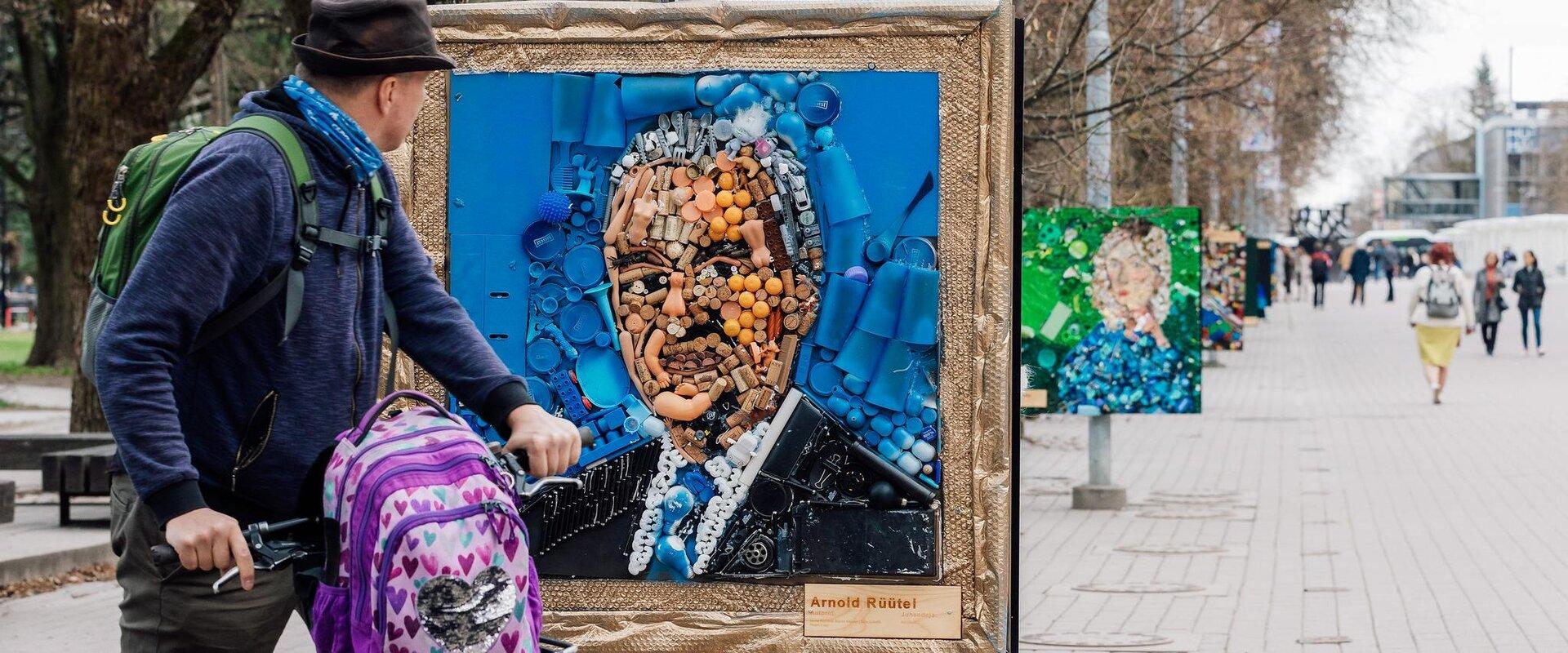
Tartu 2024: European Capital of Culture
Source: Maanus Kullamaa, Tartu 2024
Official travel guide to Estonia
Wild nature, medieval cities and Nordic fusion cuisine are minutes apart in this compact country, leaving more time to explore. Visit Estonia. It’s about time.

The best restaurants in Estonia according to the MICHELIN Guide
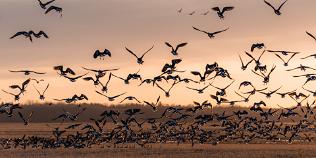
Guide to Birdwatching in Estonia
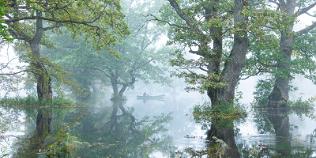
Celebrate springtime in Estonia

SPAtacular Estonia!

TOP interactive museums for family-friendly fun
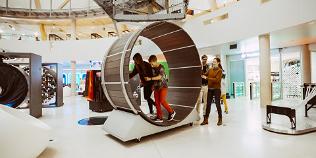
Your quick guide to Estonian culture
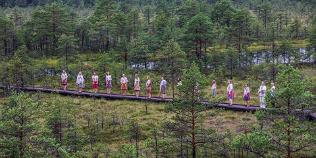
Upcoming events
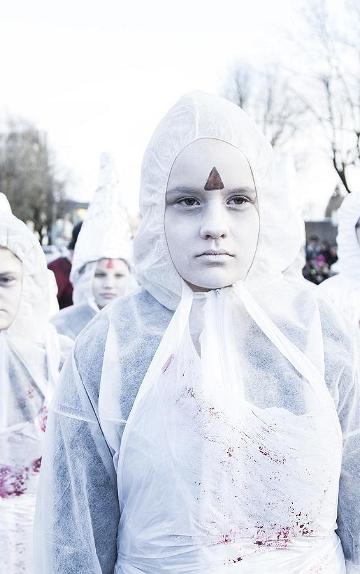
26.04 - 28.04
Haapsalu Horror & Fantasy Film Festival (HÕFF)

10.05 - 12.05
41th Tartu Forest Marathon

LHV May Run

31.05 - 01.06
Narva City Run
View all events
Looking for some inspiration?
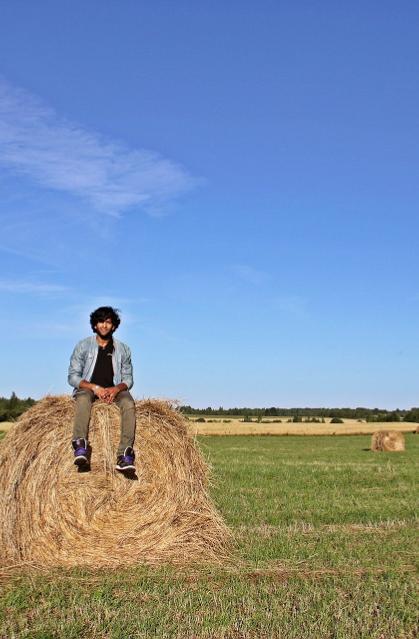
The Guide to Sustainable Travel in Estonia
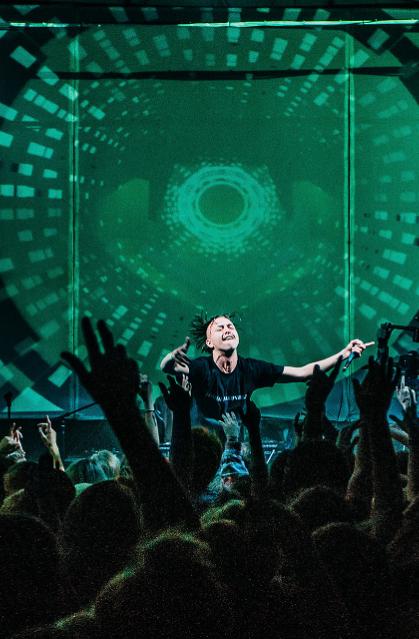
TOP events this season
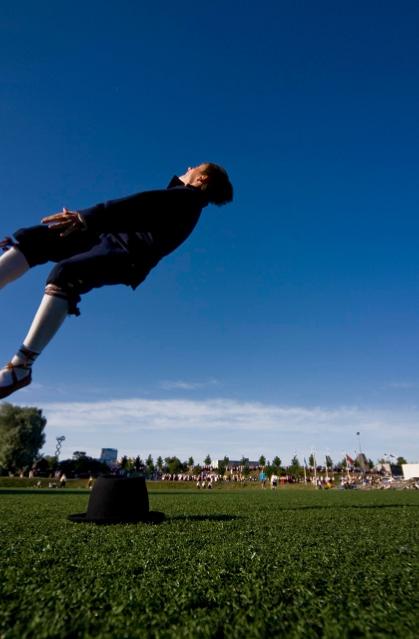
The Stranger Sides of Estonian Culture
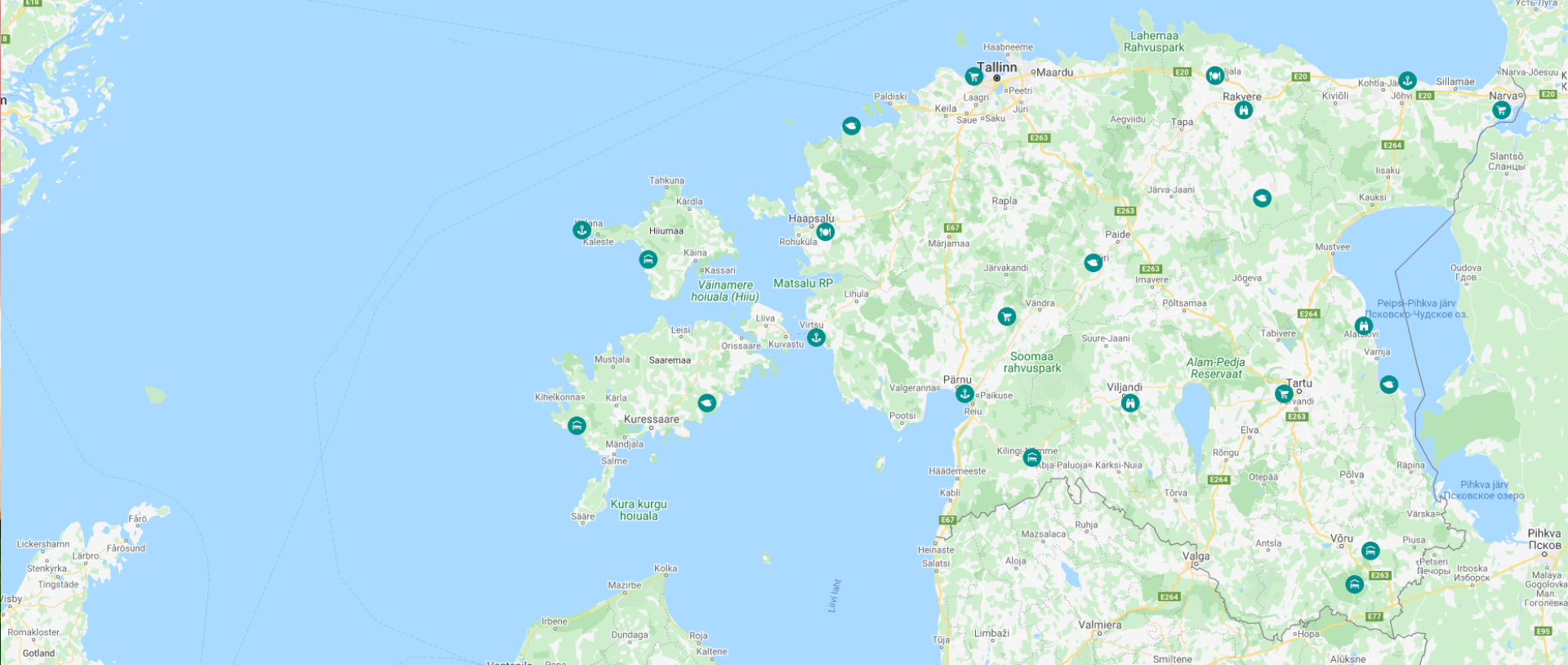
Discover Estonia on the map
Discover our destinations.

Explore Estonia for yourself
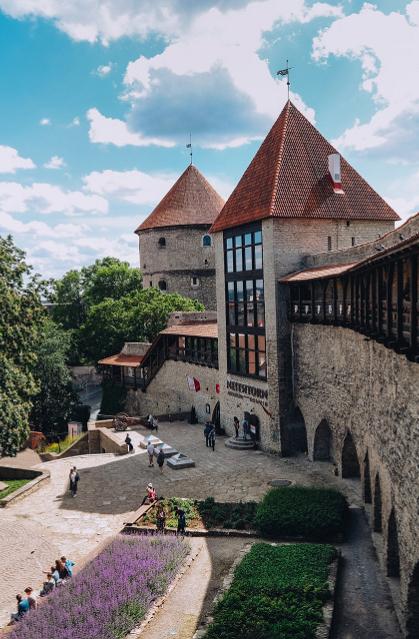
Medieval Merchant's Tour
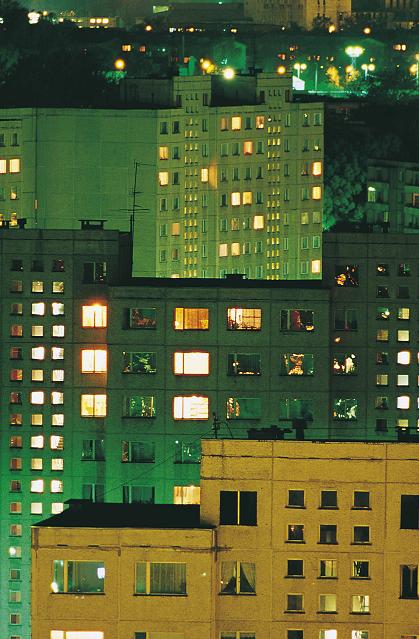
Soviet Era Tour
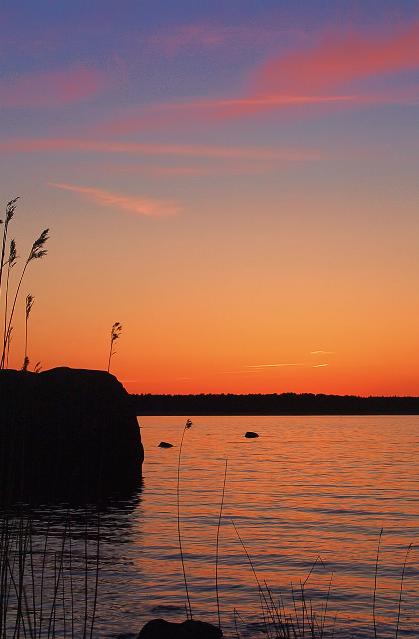
Tour of Estonia for nature lovers
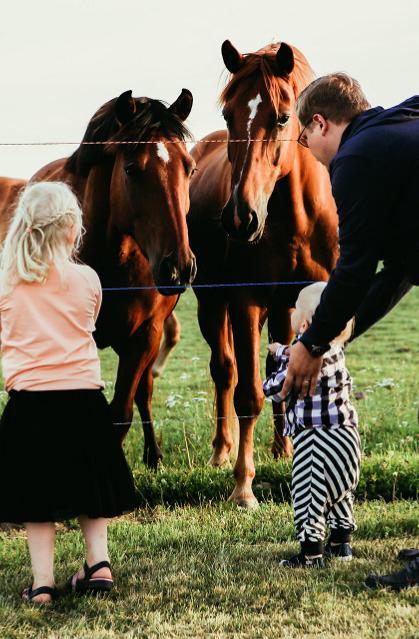
Family holiday in Estonia
Subscribe to the visit estonia newsletter.
Please check your email.
Confirm that you are not a robot!
In order to subscribe to the newsletter you must agree with EAS’s (Enterprise Estonia) Principles of Data Processing
Thanks so much! Youll be getting regular updates about travelling in Estonia and we promise not to send any spam!
Subscribe to the visit estonia newsletter:, holiday type.
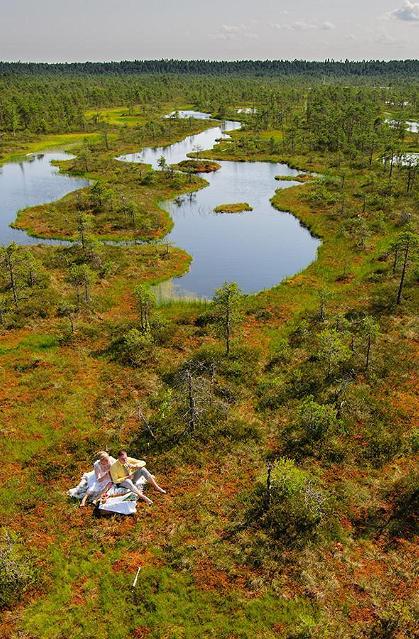
For the green traveler

Family holidays
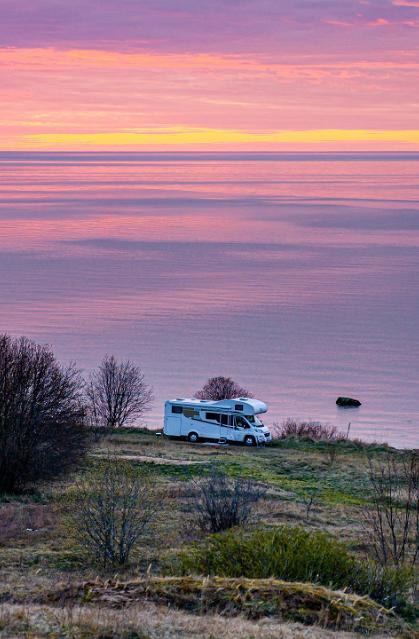

Caravan tourism
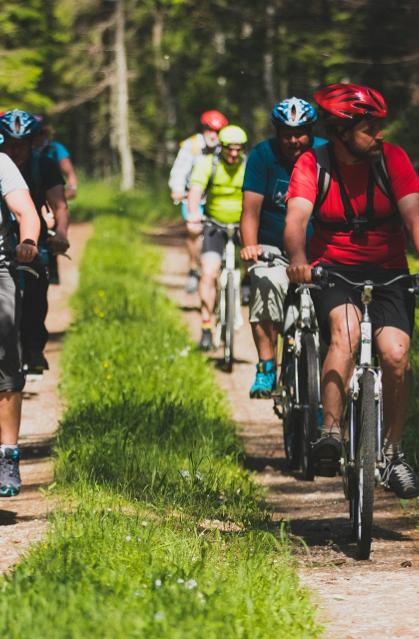
10 best things to do in Estonia
From browsing renowned art museums to hiking cross-country trails, here are the top travel experiences.

Estonia has more unicorns than anywhere else in the world. No, not the mythical creature, but tech start-ups that have reached more than a billion-dollar valuation. Aside from its buzzy businesses, this compact nation of 1.3 million people is a trove of nature, off-grid oases, and UNESCO-recognized cultural sites. Here are the top 10 ways to visit.
Meet ghosts in Tallinn’s Old Town
Tallinn’s well-preserved Old Town is best explored via guided walking tours , where you can learn about the Gothic architecture and Hanseatic legacy of this city dating to the Middle Ages. But be wary of the restless spirits that are said to haunt this UNESCO World Heritage site. A ghost and legends tour tells the tales of those who came before, providing deeper insight into Estonia’s turbulent past.

Discover the distinct flavors of historic Estonia
Want to know what it was like to dine with a wealthy merchant during the Hanseatic era? At Olde Hansa , in Tallinn, dishes made from 700-year-old recipes are served in a medieval-style dining room, complete with roving troubadours playing works by 15th-century composers.

Sip a beer at Estonia’s first microbrewery
Estonia is experiencing a brewery boom. Try a citrusy grapefruit or gently roasted caramel IPA or join a tour at the Põhjala Brewery , the country’s first microbrewery in the historical Noblessner district. After a round, take a brisk walk to Telliskivi Creative City , a former industrial site turned artistic space featuring galleries, indie shops, restaurants, and the famed international photography art center and museum, Fotografiska Tallinn .

Sail like an Olympian
Estonia has never hosted the Olympics. But during the 1980 Moscow Games, the sailing events were held in the Gulf of Finland, off Tallinn. You can channel this chapter of Olympics sailing history at the Tallinn Olympic Sailing Center in Pirita , a 15-minute drive from the capital, or join a boat trip to nearby Tallinn Bay.

Immerse yourself in a world of color and design
With more than 40 art museums, Estonia is a powerhouse in the international art world. Stop into the Tallinn Design House , in the Rotermann Quarter , for a unique Estonian-made souvenir and then walk along Stalkers Path , featured in Andrei Tarkovsky’s sci-fi drama Stalker . The short trail leads to the new PoCo Pop & Contemporary Art Museum , displaying works by artists from Basquiat to Warhol.
Stroll the streets of the European Capital of Culture
In a two-hour drive by bus, train, or car from Tallinn to south Estonia, travelers can explore the blooming university town Tartu , the European Capital of Culture in 2024 . Visitors will be able to join the dozens of events showcasing the historical and cultural heritage of Estonia’s second-largest town, such as Kissing Tartu , and Surrealism 100 . During the summer, ride the wooden barge “Jõmmu,” a unique medieval vessel locally designed for inland waters, or the Viking ship Turm in the Emajõgi River , the only waterway in Estonia that is fully navigable.
Gaze into the cosmos
Take a tour of Tartu Observatory’s Stellarium , the largest astronomical observatory in Estonia, to see why the nation is a promising player in the European space industry. While there, learn about Estonia’s student satellite project ESTCube , the prototype of Estonia’s first satellite ESTCube-1, which launched into space in 2013.
Travel back in time at Estonia’s largest museum
At the Estonian National Museum , or ERM, visitors can dive into Estonia’s fascinating history. Don’t miss the permanent exhibition “Echo of the Urals,” an indispensable primer on the folkloric traditions and customs of the Finno-Ugric people, and consider taking a class on traditional embroidery and needlecraft.
Walk across Estonia on forested trails
Dozens of walking trails extend from one end of the country to the other, making it possible to walk the length of the country. If you’re up for the challenge, try the 500-mile Peraküla-Aegviidu-Ähijärve hiking route , which begins in Peraküla in the north to Ähijärve in the south. Such forested routes are best tackled from early July to late October, when plants and mushrooms are in abundance. Going with a guide is recommended, especially if you want to try foraging.

Spot rare birds in Matsalu National Park
Matsalu National Park , in west Estonia, is one of Europe’s most important waterfowl resting areas between the Arctic and Western Europe. It is one of the few places in the Baltics where birdwatchers can see them migrate and nest every spring and autumn. Climb to the park’s birding tower , near the north shore of Matsalu Bay, to spot the rare capercaillie and more common broad-billed sandpiper.
( For more tips on what to do in Estonia, see our Explorer’s Guide .)
FREE BONUS ISSUE
Related topics.
- TRAVEL AND ADVENTURE
- FOOD CULTURE
- CULTURAL TOURISM
- CULTURAL CONSERVATION
- HISTORIC SITES
You May Also Like

Don’t leave San Diego without trying these 9 experiences

The essential guide to visiting Estonia

Visiting Estonia? Here’s what the locals love

Atlanta isn’t all that Georgia has to offer. Here are 7 other worthy trips.

China just had a museum building spree. Here are 6 of the best.
- Environment
- Perpetual Planet
History & Culture
- History & Culture
- History Magazine
- Mind, Body, Wonder
- Paid Content
- Terms of Use
- Privacy Policy
- Your US State Privacy Rights
- Children's Online Privacy Policy
- Interest-Based Ads
- About Nielsen Measurement
- Do Not Sell or Share My Personal Information
- Nat Geo Home
- Attend a Live Event
- Book a Trip
- Inspire Your Kids
- Shop Nat Geo
- Visit the D.C. Museum
- Learn About Our Impact
- Support Our Mission
- Advertise With Us
- Customer Service
- Renew Subscription
- Manage Your Subscription
- Work at Nat Geo
- Sign Up for Our Newsletters
- Contribute to Protect the Planet
Copyright © 1996-2015 National Geographic Society Copyright © 2015-2024 National Geographic Partners, LLC. All rights reserved
Travel Guide Estonia
Book your individual trip , stress-free with local travel experts
- roughguides.com
- Travel guide
- Local Experts
- Travel Advice
- Accommodation
Plan your tailor-made trip with a local expert
Book securely with money-back guarantee
Travel stress-free with local assistance and 24/7 support
Visitors to Estonia encounter a mix of urbanity and wilderness, of the medieval and the contemporary, with crumbling castles and colourful design permeating urban landscapes. An efficient transport system makes it easy to get around, and the tech-savvy, dynamic residents welcome visitors with open arms. Friction between older generations of Russians and Estonians is a throwback to the Soviet era, while younger people mix freely, and those who get past the Estonians’ natural reserve find them to be gregarious, uninhibited hosts.
Where to go in Estonia
Tailor-made travel itineraries for estonia, created by local experts.

5 days / from 1390 USD
City hopping in Finland and Estonia
Helsinki enchants with its blend of modernity and nature, entertainment and tranquility accessible everywhere and all the time. Turku, in turn, was the first capital of Finland, and has a lot to teach about the Finnish History. Tallinn, the capital of Estonia, is not behind in terms of heritage.

10 days / from 1043 USD
Sustainable Baltic Capitals
Enjoy introductory tours and ample free time to suit your interests. In ten days, relish local accommodations, UNESCO town walks, quirky neighborhoods, and private guide tours, delving into the region's history and customs. Start your Baltic States adventure now for independent exploration.

16 days / from 3959 USD
Ultimate Baltics
Uncover both renowned attractions and hidden gems across the Baltic States and Southern Finland. Explore UNESCO sites, serene villages, and sandy dunes. From the capital cities of Vilnius, Riga, Tallinn and Helsinki to the beaches in Klaipeda in Pärnu.
Estonia’s capital, Tallinn, has a magnificent medieval centre and lively nightlife, rivalled only by that of Tartu, an exuberant university town. Pärnu, a popular seaside resort, is also worth a short visit. For inexpensive spa treatments, a fine castle and unspoilt countryside head for the island of Saaremaa, while Lahemaa National Park, outside Tallinn, offers a taste of pristine wilderness.

Discover more places in Estonia

- Population 1.3 million
- Area 45,227 sq km
- Language Estonian
- Currency Euro (€)
- Capital Tallinn
- International phone code t 372
Top image: Tallinn, Estonia © ESB Professional/Shutterstock
Travel advice for Estonia
From travel safety to visa requirements, discover the best tips for traveling to Estonia
- How to get to Estonia
- Culture and Etiquette in Estonia
- Eating and drinking in Estonia
- Getting around Estonia: Transportation Tips
- Sports and Outdoor activities in Estonia
- Travel Tips Estonia for planning and on the go
- Best time to visit Estonia
The Rough Guides to Estonia and related travel guides
In-depth, easy-to-use travel guides filled with expert advice.

Find even more inspiration here

Planning your own trip? Prepare for your trip
Use Rough Guides' trusted partners for great rates
written by Rough Guides Editors
updated 26.04.2021
Ready to travel and discover Estonia?
Get support from our local experts for stress-free planning & worry-free travels.
- Where to stay
- Travel advice

Best Places to Visit in Estonia
Introduction.
Estonia is a country in the heart of the Baltic region and offers a delightful mix of history, culture, and natural beauty. From picturesque medieval towns to lush forests, Estonia has something for every traveller. In this article, we will explore the best places to visit in Estonia.
Discovering Tallinn – The Capital City
Tallinn, the capital city of Estonia, is a captivating blend of old-world charm and modern vibrancy. Here, you can wander through the well-preserved medieval old town, a UNESCO World Heritage site.
Song Festival Grounds – A Cultural Legacy
Estonians are passionate about music, and the Song Festival Grounds in Tallinn are a testament to this. It’s the site of the famous Estonian Song Festival, a celebration of music and national pride.
Tallinn Old Town – A Glimpse into the Past
The Tallinn Old Town is a treasure trove of historic buildings, cobblestone streets, and quaint squares. Be sure to visit the Alexander Nevsky Cathedral and Toompea Castle for a taste of Estonia’s rich history.

Lahemaa National Park – A Nature Lover’s Paradise
Lahemaa National Park, with its dense forests, bogs, and coastal areas, is a haven for hikers and wildlife enthusiasts. The park offers numerous trails and the chance to spot unique flora and fauna.
Saaremaa Island – Tranquility by the Sea
Saaremaa, the largest Estonian island, is renowned for its beautiful coastline and serene atmosphere. The historic Kuressaare Castle and Panga Cliffs are must-see attractions.

Kadriorg Palace – A Regal Retreat
Kadriorg Palace, a Baroque masterpiece, houses the Kadriorg Art Museum and beautifully landscaped gardens. It’s a place to immerse yourself in art and history.ka
Relax in Pärnu
Pärnu, known as the summer capital of Estonia, offers a serene coastal escape with sandy beaches and spa resorts.
Pärnu Beach – A Slice of Paradise
Pärnu’s sandy beach is perfect for sunbathing and swimming, and the nearby promenade features cafes and restaurants where you can savour delicious Estonian cuisine.

Smoked Fish – A Delicacy from the Baltic
Estonia is known for its smoked fish, which is a culinary delight for seafood lovers. Try the smoked herring or salmon for a taste of authentic Estonian flavours.
Tartu – The University Town
Tartu, with its prestigious university, is a hub of culture and innovation. The town’s youthful energy and historic architecture make it a fascinating destination among de best places to visit in Estonia.

Estonia, with its captivating history, diverse landscapes, and vibrant culture, is a travel destination that should not be missed. From the medieval charm of Tallinn to the pristine nature in Lahemaa National Park, Estonia offers every traveller a unique and enriching experience.
Frequently Asked Questions
Is Estonia a safe country to visit?
Estonia is generally considered safe for tourists. It has a low crime rate and is known for its friendly and welcoming people.
What’s the best time to visit Estonia?
The best time to visit Estonia is during the summer months, from June to August, when the weather is pleasant, and outdoor activities are in full swing.
Do I need a visa to visit Estonia?
Most European Union citizens do not require a visa to visit Estonia for short stays. However, it’s essential to check the specific visa requirements based on your nationality.
Can I find vegetarian or vegan food in Estonia?
Yes, you can find vegetarian and vegan options in Estonia. Many restaurants and cafes offer plant-based dishes.
What is the local currency in Estonia?
The official currency of Estonia is the Euro (EUR). Credit cards are widely accepted, and ATMs are readily available for cash withdrawals.
So, why wait? Get ready to explore the charming and diverse landscapes of Estonia. Plan your trip now and discover the hidden treasures of this Baltic jewel.
Similar Posts

Top Travelling Destinations of Hungary
Hungary is a treasure trove waiting to be explored. In this article, we’ll delve into the top travelling destinations in Hungary that will leave you awe-inspired.

Authentic Experiences: Best places to visit in Slovakia
With its stunning natural landscapes and charming towns, Slovakia offers a unique travel experience that is often overshadowed by its more popular neighbors.

Unforgettable Places to Visit in Slovenia
This small yet diverse country boasts a myriad of destinations that cater to every traveller’s taste. In this article, we will explore the best places to visit in Slovenia.

Best Places to Visit in the Czech Republic
When it comes to hidden gems in Europe, the Czech Republic stands out as an enchanting destination.

Best Travel Spots in Latvia
With its beautiful landscapes, charming towns, and unique cultural heritage, Latvia is a traveler’s dream. Let’s explore the best travel spots to visit in this captivating country.

Must-Experience Locations in Poland
Poland, a country with a rich history, stunning landscapes, and vibrant culture, has become an increasingly popular travel destination.
Leave a Reply Cancel reply
Your email address will not be published. Required fields are marked *
Save my name, email, and website in this browser for the next time I comment.
Notify me of follow-up comments by email.
Notify me of new posts by email.
- Health Care
- Mental Health
- Oral Health
- Home Improvement
- Home Remodeling
- Total Beauty

Exploring Estonia: 8 Best Cities to Visit
In This Article
Tallinn: where history meets hipster culture, tartu: the intellectual and cultural capital, pärnu: estonia’s riviera, haapsalu: a fairytale setting of castles and healing waters, narva: a unique border city, viljandi: the soul of folk music, kuressaare: island serenity, põlva: nature’s playground, conclusion: a tapestry of estonian delights.
Nestled in the Baltic region, Estonia is a country brimming with a rich history, stunning landscapes, and a forward-thinking society. While the Old World charm of its capitals and the modernity of its digital infrastructure have attracted global attention, there’s much more to this compact European gem. From the well-preserved medieval streets of Tallinn to the serene beauty of the Põlva countryside, Estonia is a tapestry of diverse experiences. In this comprehensive guide, we’ll take you through the 8 best cities in Estonia, each offering its own unique charm and reasons to visit.
As the capital and largest city of Estonia, Tallinn needs no introduction. A true meeting point of Eastern and Western Europe, Tallinn’s Old Town—a UNESCO World Heritage site—is a fairy tale come to life. Medieval walls, cobbled streets, and Gothic spires met by modern art galleries and gourmet restaurants give the city an ambience that is simultaneously ancient and avante-garde.
Must-Visit Spots in Tallinn
- Toompea Castle and Pikk Hermann – Seat of the Estonian Parliament, offering panoramic views of the city
- Tallinn Town Hall Square (Raekoja plats) – The heart of the medieval Old Town home to the Town Hall and quaint cafes
- Alexander Nevsky Cathedral – A Russian Orthodox masterpiece with a commanding presence over the city skyline
- Kadriorg Park and Palace – A baroque masterpiece gifted by Peter the Great to his wife, now a museum and art collection
- The Seaplane Harbour – A maritime museum housed in a unique hangar where visitors can explore seafaring history and a submarine
Modern Charms of Tallinn
In addition to its historical wonders, Tallinn is a vibrant hub of digital innovation and contemporary culture. It boasts a rapidly growing startup scene and is home to some of the most cutting-edge technology conferences in the world. The Telliskivi Creative City is a great reflection of this, filled with co-working spaces, tech companies, and a bustling scene of trendy eateries.
Tallinn also hosts a range of events throughout the year, from craft beer festivals to the medieval days in Old Town. Whether you’re sipping locally distilled vodka in a cozy cellar bar or browsing high-tech products, Tallinn offers a diverse array of experiences.
Related: 10 Best Things to Do in Tallinn, Estonia
Home to Estonia’s oldest and most prestigious university, Tartu is a city of students, scholars, and vibrant youthful energy. With a reputation for academic excellence, Tartu is not only an intellectual hub but also a hotbed of cultural innovation and creativity.
Academic Charm and Nightlife
- University of Tartu – Founded in 1632, it’s one of the oldest in Northern Europe and a centerpiece of the city’s academic legacy
- Tartu Art Museum and the Theatre Vanemuine – Showcasing Estonian art and culture from prehistoric times to the modern era
- Toome Hill and the Cathedral Ruins – Offering splendid views of the city and a peaceful, historic park for contemplation
- Tartu Observatory – Engage with the stars and learn about the cosmos at this unique research center
Cultural Attractions in Tartu
Tartu’s main pedestrian street, Ülikooli, is lined with cafes and little shops where you can while away the hours. For a bit of local flavor, visit the every-Saturday Jaanioja market, where local farmers sell their produce and homemade crafts. The AHHAA Science Center is a hit with children and adults alike, with interactive exhibits guaranteed to entertain and educate.
Tartu’s nightlife is lively, thanks to the University’s abundance of the student population. There are several bars, clubs, and cafes to enjoy live music and DJ sets, ranging from cozy pubs to chic nightspots. With its affordable prices and relaxed atmosphere, Tartu is a great place to experience Estonians’ famed hospitality.
Pärnu is the summer capital of Estonia, known for its golden beaches, relaxed vibe, and spa culture. Over the centuries, Pärnu has drawn people to its shores for the reputed therapeutic qualities of its mud, and today, the city is a popular destination for those seeking wellness and sun.
Beaches and Spas
- Pärnu Beach – A vast sandy sweep along the Bay of Pärnu, perfect for a dip or a leisurely stroll
- Estonia’s Mud Baths – Offering a unique spa experience renowned for its health benefits
- The Green Zone Parks and Beach Park – Lush and tranquil oases within the city where you can cycle, skate, or simply relax
Cultural Offerings in Pärnu
In addition to its summer allure, Pärnu has a rich cultural life with several music festivals and art events. The city hosts the annual Weekend Festival, one of the largest electro-centric music events in the Nordic-Baltic region, as well as the Classical Music Festival Pärnu Fest. A must-visit for fans of fine music.
For a glimpse into the heart of the city’s past. Visit Pärnu Museum and the 18th-century Red Tower, which houses an exhibit on Pärnu’s history.
Haapsalu is a town that maintains its epic history and natural beauty with grace and charm. With a seaside location that includes a medieval castle, dramatic ruins. And a famous seaside promenade, Haapsalu has long been a retreat for those seeking history and wellness.
The Haapsalu Castle and Promenade
- Haapsalu Episcopal Castle – A medieval fortress shrouded in legends, with towers that provide lovely views over the town and bay
- The Promenade – Lined with wooden villas and boasting one of the longest mud beaches in Estonia. It’s a quintessential Baltic Sea experience
- The Haapsalu Horror and Fantasy Film Festival – Held in the castle. It’s a showcase of eerie films and an example of the town’s quirky cultural side
Wellness and Relaxation in Haapsalu
The healing powers of Haapsalu’s mud and seawater attracted the Russian Imperial Family. And the ancient sea traditions are deeply embedded in its culture. The town is dotted with spas, some of which have been in operation for centuries, offering salted mud therapy, seawater pools, and a variety of other relaxing treatments.
For a taste of local life, visit the historic Kuursaal, a seaside pavilion that now serves as a café and venue for concerts and social gatherings.
Located at the easternmost point of Estonia, Narva shares a river border with Russia. The city is distinctive for its blend of cultures, with Russian, Estonian, and Western influence creating a unique tapestry. The imposing Hermann Castle guards the river crossing, symbolizing the city’s strategic and historical significance.
Crossroads of Cultures
- Narva Castle at the border of the European Union – A medieval fortress nestled on the banks of the Narva River. Offering a glimpse into the city’s past
- The Kreenholm Manufacturing Complex – One of the largest and oldest textile factories in the world, now a unique industrial heritage site
- The Narva Art Residency – A contemporary art center that invites artists from around the world to create and exhibit
Historical Significance and Nature Exploration
Narva’s significance in the events of World War II and the border that traverses the river underscore its historical resonance. The city’s natural reserve, Vaivara Blue Hills, provides open landscapes for hiking and bird watching. The Narva Waterfall, though modest in size, is the largest in the country and offers a tranquil view of the churning waters.
The small town of Viljandi punches above its weight when it comes to culture, known for its beloved folk music festival and the ruins of its medieval castle that overlook the serene Lake Viljandi. The town’s charm lies in its natural surroundings and the deep connections its people maintain with their traditions.
Folk Music and Ruins
- Viljandi Castle Hills and St. John’s Church – Offering breathtaking views of the valley and Lake Viljandi
- Viljandi Culture Academy – Training ground for the next generation of Estonian artists, musicians, and craftspeople
- Viljandi Folk Music Festival – An annual event that draws musicians and folk enthusiasts from around the globe
Local Life and Natural Beauty
A walk along the town’s cobblestone streets will take you past the colorful wooden homes that reflect Viljandi’s 19th-century heyday. The town and its surrounding countryside invite visitors to enjoy local cafes, crafts, and the tranquility of nature, with opportunities for hiking and biking.
At the heart of this small town’s culture lies its lake. Which is a popular spot for swimming, sunbathing, and fishing, and the Pärimuse Koda (Traditional Music Center) is the place to discover the soul-stirring music of Estonia.
Kuressaare is the urban center of Saaremaa, the largest island in Estonia. The city’s claim to fame is its impressive medieval castle, well-preserved cobblestone streets, and proximity to the Baltic Sea. It’s a great starting point for discovering the natural and historical treasures of Saaremaa.
Castle Life and Maritime History
- Kuressaare Castle – The island’s most famous sight, a beautifully restored fortress that now houses the Saaremaa Museum
- Kuressaare Maritime Museum – Explore the island’s seafaring past and the unique ecosystem of the Baltic Sea
- The Spa and Mud Baths – Enjoy the relaxing and therapeutic properties of the famous local mud
Island Exploration and Wellness
The peaceful streets of Kuressaare are lined with local cafés and artisanal shops selling island-produced goods. The city is a great base for exploring the windmills, manor houses, and rural villages that give Saaremaa its character. The island also offers a variety of experiences for outdoor enthusiasts, from forest trails to seaside promenades.
For those seeking a more laid-back experience, head to one of the many spas in Kuressaare or soak in the local culture at the Saaremaa Opera Days. Which transforms the island into a stage for classical and contemporary performances.
Põlva is a small and quiet town in the southeastern region of Estonia, known for its natural beauty and tranquility. Situated amidst several lakes and close to the border with Russia, Põlva is the perfect destination for those seeking immersion in Estonia’s unspoiled wilderness.
Nature Reserves and Outdoor Adventures
- Ahja River Valley Nature Reserve – A pristine landscape where the river meanders through sandstone cliffs and pine forests
- Piusa Caves and the Singing Sands – A geological marvel and home to the mythical Singing Sands
- Wilderness Huts and Campsites – Spend a night under the stars in one of the many designated camping sites in the area
Tranquility on the Edge of Civilization
The town’s serene lakes offer opportunities for swimming, boating, and fishing, while its forests provide pathways for hikers and cyclists. The nearby Suur Munamägi hill, the highest peak in Estonia, offers panoramic views over the surrounding countryside.
locals recommend taking part in the tradition of “kuulutamine,” or shouting from the mountaintop, which echoes through the traditional landscape. A practice believed to bring good luck. The Põlva Museum offers insight into the area’s history and culture, while the annual Landscape Plein Air brings artists to capture the area’s beauty on canvas.
Estonia is a country of contrasts and surprises, where ancient castles and modern technology coexist harmoniously. The eight cities listed here are just a glimpse of the diversity Estonia offers. Making it a must-visit for travelers with varied interests. Whether you’re a history buff, a nature lover, a music aficionado, or simply in search of undiscovered cultural treasures. Estonia has something to offer.
With each city offering its own unique experiences, a trip to Estonia is a chance to discover a country that, despite its small size, packs a punch. From the cobbled streets of Tallinn to the rugged coastline of Narva, the folk music of Viljandi to the spa culture of Pärnu, each of these cities is a story waiting to be told, an experience waiting to be lived. Start planning your visit to Estonia, and prepare to be enchanted by the magic that awaits in every corner.
The 10 Best Cosmetic Ingredients That Reduce Skin Aging
Related articles, 14 best things to do this summer in montreal, top 10 hottest cities worldwide, 13 best cities in portugal to visit, everything you want to know about tourism in oakland, ca and the most important tourist places, everything you want to know about tourism in vietnam and the most important tourist places, 15 best cities in brazil to visit, 9 best cities in lithuania, 10 best things to do in malmo: your ultimate travel guide, 21 best things to do in tampa, florida, 14 must-do activities in seattle for family and local explorers, exploring the 14 best cities in hungary, top 11 things to do in phoenix, arizona, 12 best things to do in austin, texas, 10 best things to do in liepaja, latvia, exploring the best attractions in nova scotia, canada, 14 best things to do in halifax, canada.

- Write For Us
- Terms of Use
- Privacy Policy
- Cookie Policy
Copyright © LifeBei 2023 -2024

Tallinn or Riga or Vilnius: The Best Baltic City to Visit
Last Updated on November 21, 2023
by Maggie Turansky
Disclaimer: This article contains affiliate links. That means if you click a link and make a purchase, we may make a small commission. As an Amazon Associate we earn from qualifying purchases. For more information, see our privacy policy.

Despite their seemingly diminutive size, the three Baltic capitals have unique offerings and cultures and it can be tricky to decide between visiting Tallinn or Riga or Vilnius.
Tallinn has the medieval charm of the Old Town and fantastic craft beer, Riga boasts incredible Art Nouveau architecture and an elegant and cosmopolitan vibe while Vilnius has one of the largest Old Towns in Europe and an inviting laidback culture.
We have spent a lot of time in each capital and while all three are worth visiting, this guide can help you figure out which is the best Baltic city to visit if you only have time for one!
Table of Contents
Tallinn, Estonia
Becoming famous the world over for its exquisitely preserved, picture-perfect medieval Old Town, Tallinn is the most sought-after destination in this article.
Estonia is quite different culturally and linguistically to its Latvian and Lithuanian neighbours and therefore you will experience an eclectic mix of Baltic and Nordic tendencies. Often considered to be the most technologically advanced country in the world, Tallinn mixes a vibrant and modern capital with quaint, old-world charm almost seamlessly.

Accessibility
Tallinn is the most visited out of all three Baltic capitals. The city is well-connected with other major cities close by, with frequent bus and train links between cities like Riga, Tartu , and Parnu as well as ferry links to cities like Helsinki and Stockholm.
Tallinn is also only about 80 kilometres south of Helsinki and with ferries departing at least every hour, it is a popular day trip from the Finnish capital (or vice versa). Tallinn is also accessible by ferry from cities like Mariehamn, Finland and the Swedish capital of Stockholm . The city also has a large and well-developed cruise ship port with a capacity to dock up to six ships at once.
Aside from its overland connections, Tallinn also has a relatively high-traffic international airport that serves airlines such as SAS, Finnair, airBaltic, Ryanair, British Airways, and Easyjet among others. There are year-round direct flights from a number of major European cities such as London , Copenhagen , Frankfurt , and Amsterdam and more cities are served in the summer months.
The city of Tallinn itself is fairly walkable and, especially if you’re only planning on visiting the Old Town, it is entirely possible to get to a wide array of attractions on foot.
However, if you’re keen to explore some sites a little bit farther afoot, there is an extensive, affordable, and easy-to-use bus and tram network.
All in all, Estonia’s capital is a pretty accessible place both in terms of getting to the city and around it once you’re there.

Things To Do In Tallinn
Although millions of people flock to Tallinn every year, only about half of them spend more than a day in the city. This fact might have people thinking that there aren’t a lot of things to do in Tallinn but that is the wrong assumption.
Sure, all of the main sites in the Old Town including the Alexander Nevsky Cathedral, the Patkuli Viewing Platform, and the Town Hall Square can all be seen in the span of a few hours, there is so much more to the city than this. Tallinn is a modern, high-tech, and thriving city with a number of great things to do both in and out of the Old Town.
The trendy neighbourhood of Kalamaja is well worth exploring, with many nice shops, restaurants, and cafes to pop into. This is also where the popular Seaplane Harbour Museum is located, which is a great way to spend a couple of hours learning about Estonia’s maritime history.
Other points of interest outside of the Old Town include the hip Telliskivi Creative City and Balti Jaama Turg, which has both traditional market stalls and some fantastic street food. If the weather is fine, there is a nice city beach just a short bus ride from the city centre in the suburb called Pirita. The beach also isn’t far from the great Estonian History Museum.
Tallinn has a number of great things to do, so it is easy to spend at least two days in the city — though we would recommend three or four . If you have more time, you can easily go on a day trip to Lahemaa National Park as well.

Traditional Estonian cuisine doesn’t vary much from that found in the other Baltic capitals. Consisting of both Eastern and Nordic influences with a heavy reliance on seafood, the cuisine of Estonia isn’t nearly as heavy as the food found in many other Eastern and Central European countries.
While traditional fare is definitely available in Tallinn, there are also some great restaurants that are doing some very cool things with the local ingredients. The trend of “new Nordic” cuisine that has swept major Scandinavian cities such as Copenhagen and Stockholm has also found itself a comfortable home in Tallinn.
There are a number of affordable eateries and street food options that have given local produce an international flair and, if you dig even just a little, you will find that you will eat very well in Tallinn.
If you are a craft beer fan, you will also be spoilt for choice in Tallinn. The city — and Estonia in general — has a thriving craft beer scene with local brews available on nearly every restaurant menu.
There are also a number of great bars, taprooms, and bottle shops dedicated specifically to Tallinn’s craft beer fetish and one could easily spend an entire weekend purely hopping from place to place sampling the eclectic and inventive breweries throughout the city.
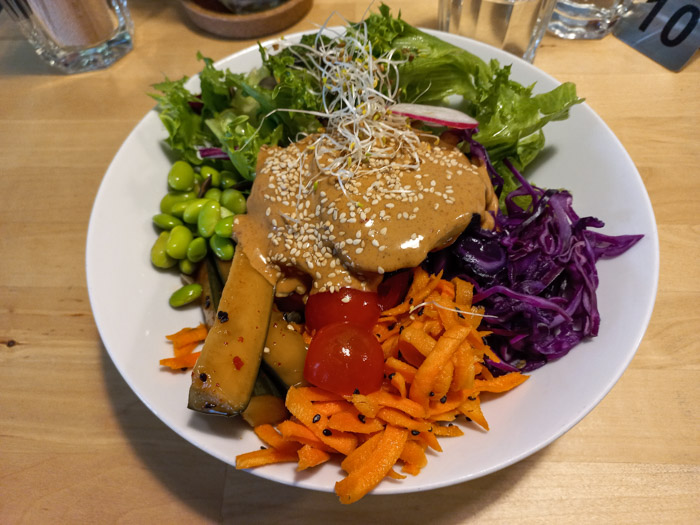
There is no denying it, Tallinn is a hip and happening city and has a nightlife to match it. There are numerous nighttime options to fit any personality — from chic wine bars to convivial local pubs and hopping nightclubs to subterranean speakeasies.
Tallinn has long been a hotspot for Finnish stag parties looking to drink on the cheap and, in recent years with the increase in budget airlines flying to Tallinn, it has become more popular for those from other countries as well.
Regardless of your tastes, if you’re keen to find a party while visiting Tallinn, you won’t have any trouble.

Affordability
If you’re stuck trying to decide which Baltic capital to visit and every city seems to have something going for it that interests you, then it can be helpful to know that Tallinn tends to be the most expensive of the three.
While prices are still considerably lower than those of large Western European cities, it is worth noting that spending a significant amount of time in the Old Town is not going be much of a budget experience.
Accommodation prices in Tallinn vs Riga and Vilnius are roughly 15-20% more expensive, as are food prices. It is, however, noticeably cheaper even a couple hundred metres outside of the Old Town where we noticed that restaurant prices especially were up to 100% cheaper than in the tourist centre.
If you are really looking to eat well and on the cheap, check out the street food at Balti Jaama Turg and Telliskivi Creative City, which both have affordable and diverse dining options.
On the whole, don’t expect Tallinn to be an incredibly cheap destination but it still can be quite affordable if you avoid the tourist traps.

Where To Stay In Tallinn
Due to its growing popularity as a tourist destination, there are numerous accommodation options that will suit any kind of budget.
We would recommend looking to stay slightly outside of the Old Town area — not only will it likely save you a few euros, but it is also quieter and will ensure you will get a good night’s sleep away from the hard partiers that flock to the city on the weekend.
We like the Kalamaja neighbourhood, which is cool and trendy and located no more than 10 minutes walking distance from the Old Town. Here are some of our suggestions for the best places to stay in Tallinn:
Savoy Boutique Hotel – If you’re after a luxury stay in Tallinn, then this boutique hotel is a great choice. Centrally located in the Old Town, they have a number of plush rooms available all within easy reach of the top sites in the Estonian capital.
Bob W Telliskivi – Located near the creative city of Telliskivi, they have a range of fully-furnished apartments that is perfect if you prefer to cook some of your own meals.
Fat Margaret’s Hostel – Located between Kalamaja and the Old Town, this hostel is a great budget option in Tallinn — offering both private and dorm rooms. Like many other homes in Estonia, they also have their own sauna on site!
Not quite what you’re looking for? Click here to browse other hotels in Tallinn!

Riga, Latvia
Where Tallinn mixes medieval charms with Silicon Valley-like innovation almost seamlessly, Latvia’s capital city of Riga is a bustling metropolis filled to the brims with gorgeous Art Nouveau architecture and an inescapable energy. Though only about 300 kilometres south of Tallinn, Riga feels like a different world with a unique culture and population that will surely leave you eager to explore more.
Latvia is located in the centre of the Baltic States and Riga has a strategic position on the mouth of the Daugava River going out onto the Gulf of Riga. This means that the city is easy to reach from a number of surrounding countries.
Riga has frequent bus connections between most major Baltic cities and also cities like Warsaw and St Petersburg. There is also a daily ferry connection with Stockholm, Sweden.
Riga also has an international airport that serves as the hub to airBaltic and also welcomes budget airlines such as WizzAir and Ryanair, along with other carriers such as Norwegian, Lufthansa, and SAS. There are direct connections to Riga from most major European cities.
In the city itself, there is an extensive bus and tram network that will easily and affordably take you anywhere you might want to go. However, the centre and old town are very walkable and it is best to get around on foot.
The main bus and train stations also aren’t located far from the centre of Riga. If you plan to only spend your time here, you will likely only need to use public transport to get to and from the airport.

Things To Do In Riga
Riga is the most populous city in the Baltic states and has a much more cosmopolitan atmosphere than either of the other capitals, which is a good deciding factor if you’re finding it difficult to choose between the three capital cities. Because of its big-city vibe and history dating back a thousand or more years, there are a number of interesting and fun things to do in Riga .
The most popular area of Riga would be its Old Town, where attractions such as the Gunpowder Tower, the House of the Blackheads, and the Riga Castle draw tourists in with their historical significance and stunning architecture.
The Riga Central Market is also a fantastic place to browse through, especially to learn a little bit more about the local produce of Latvia. This is the largest market of its type in the Baltics.
While the Old Town is certainly worth wandering through, the entire central area of Riga has numerous points of interest and has the largest concentration of Art Nouveau architecture in the world.
Due to its proximity to the coast, Riga is also the perfect place to have a taste of the Baltic Sea. The popular resort town of Jurmala is only a 30-minute train ride from the city centre and can be the perfect escape.

Latvian food differs slightly from that of Estonia and is more heavily influenced by its Eastern neighbours rather than those to the north. That being said, it is possible to find traditional Latvian food all over Riga. However, the city also has enough great international food options and innovative new restaurants to contend with other major European cities.
Alongside Latvian food, other cuisines you can find in Riga that aren’t as easy to find in the West are Georgian, Uzbek and Armenian, which are all popular choices amongst locals.
There are also a number of hip and trendy restaurants throughout the city which have “reimagined” traditional Latvian cuisine alongside old favourites such as the cafeteria chain, Lido.
Altogether, there are a lot of great places to eat in Riga, however, if you’re after a foodie destination with an endless choice of ultra-hip and trendy restaurants, then Tallinn might be more your speed.

Where Tallinn might be a popular place among Finnish tourists to drink, Riga has also been firmly cementing itself in the international community as a nightlife hotspot. Because the city is served by a number of budget carriers and is also has some of the most affordable alcohol prices in Europe, Riga has become a hotspot for stag and hen parties across Europe.
While these parties can certainly be a nuisance, they are easily avoided if you stray from the Old Town for a night out. Riga has a hopping nightlife all across the city and there is something to suit any taste.
The Latvian capital also has cheaper booze prices on average than Tallinn, so it is an excellent choice if you’re looking to let your hair down and party until dawn without spending too much money.

If you’re trying to compare Riga to Vilnius and Tallinn, then certainly the affordability of the city needs to be taken into account. And luckily for the budget-minded traveller, Riga is quite an affordable place to travel!
Just like most every other major city in Europe, the Old Town does tend to be a bit more expensive than the other city purely because it is where most tourists tend to spend their money.
However, the prices in Riga’s Old Town are significantly less expensive when compared to Tallinn. That being said, if you’re trying to save some money, we would recommend looking for accommodation and restaurants away from the main tourist centre — it will both be more affordable and likely of better quality.
Entry into museums and historical sites in Riga will rarely cost more than €5 for a full-priced ticket and these are often up to 50% discounted if you happen to be a student, under the age of 26 or over 65. There is also ample accommodation available that will also fit any type of budget.

Where to Stay in Riga
With its increasing popularity amongst city-breakers and long-term travellers alike, there is no shortage of places to stay in Riga. We would recommend staying in the central area of Riga rather than the Old Town, it is quieter at night, prices are often less expensive, and there are great restaurants and nightlife opportunities that aren’t going to be only directed toward tourists. If you’re wondering where to stay in Riga , check out our top picks:
Forums Boutique Hotel – Situated very close to all of Riga’s top attractions, this boutique hotel is a fantastic choice for those visiting the Latvian capital. They have a range of classically designed rooms available and include breakfast each morning.
Greystone Suites & Apartments – If you’re visiting Riga for a romantic getaway, then this hotel is a great option. It is centrally located and within walking distance of all of the main sites in the Old Town and Central Riga, they have a range of rooms and apartments on offer.
Cinnamon Sally Backpacker’s Hostel – Located in the centre of Riga close to the main bus and train stations and the Central Market, this small hostel is one of the best places to stay in Riga if you’re on a budget. They offer both dorms and private rooms and also organise social events, so it’s a great option if you’re travelling solo and want to meet some people as well!
Not quite what you’re looking for? Click here to browse other hotels in Riga!

Vilnius, Lithuania
Lithuania’s baroque capital of Vilnius boasts one of the largest Old Towns in all of Europe, an excellent restaurant scene, fascinating history, and is even home to its own “independent republic!”
Often overlooked for its more high-profile neighbours, Vilnius is just climbing on the scene and getting some international attention for being an interesting place to visit.
Contrary to the other Baltic capitals, Vilnius is located about 300 kilometres inland and therefore cannot be reached by ferry. However, there are frequent direct bus and train connections from just about every major city nearby.
Vilnius also has an international airport that serves a number of major European destinations and airlines, including airBaltic, Ryanair, Norwegian, and Lufthansa among others. Another popular choice for those looking for a city break in Vilnius is to fly into Kaunas airport.
Lithuania’s second-largest city is only a 1.5-hour bus ride from the capital and the airport serves mostly budget airlines from a handful of large European hubs.
In Vilnius, there is an extensive bus and tram network that is affordable and fairly easy to navigate. There are ride-share apps like Bolt that operate here, and fares are generally very affordable. On the whole, however, most of the main sites in Vilnius are easy to reach on foot and the city is incredibly walkable.

Things to do in Vilnius
Compared to Tallinn and Riga, the Old Town of Vilnius will seem positively gargantuan. As mentioned earlier, the Old Town is one of the largest in Europe and it won’t seem nearly as congested as the other Baltic capitals.
Fewer tourists visit Vilnius when compared to the other cities as well, with most foreign visitors making a beeline for Lithuania’s exquisite coast rather than taking the time to head inland and explore the beautiful baroque charms of the capital. So if you want to get further off the beaten tourist path, I would recommend travelling to Vilnius vs Riga or Tallinn.
There are a number of things to do in the city, but certainly one of the best things is to just get lost and wander through the wonderful cobbled streets.
There are a number of lush, green parks, great streetside cafes in the summer, and interesting museums to pop into as well. Vilnius is also famous for its myriad churches, the most notable of which is the gothic St Anne’s Church, which stands in contrast to the rest of the architecture of the city.
The Republic of Uzupis, a neighbourhood on the other side of the river and within easy reach of the Old Town, is another tourist highlight, especially if you’re interested in seeing Vilnius’ alternative side.
Seen as the bohemian part of town, there is a lot of street art in this area along with some cool, independent shops, trendy cafes and craft beer bars, and some of the best restaurants in the city.

Much like the other capitals, it is incredibly easy to visit Vilnius and not once sample Lithuanian cuisine. There is a fantastic restaurant scene in the city and you can eat at some very high-end and innovative restaurants for much less than you would pay in Western European cities.
If it is traditional food you are after, however, you will find that Lithuanian food doesn’t differ all that much from that of its Latvian neighbours to the north. However, there is also a significant Polish influence in Lithuanian cuisine that will certainly make itself known early on.
There is also potential to eat great international food, from fantastic pizza to Georgian cuisine . Vilnius has a lot of choices and has the potential to become something of a “foodie capital” in the next couple of years, so come now before the masses discover it!
Unlike Tallinn and Riga, Vilnius has largely managed to avoid the stag and hen do scene so going out is a lot more of a mellow affair in this city.
Even though Lithuania’s capital hasn’t attracted inebriated bachelors and bachelorettes quite like its neighbours, that doesn’t mean that the nightlife scene is lacking. With some of the cheapest booze prices in the EU and a number of trendy cocktail bars and nightclubs, Vilnius truly comes alive after dark.
It is worth noting, however, that Lithuania has some of the most restrictive liquor laws in the EU. Their drinking age was recently raised to 20 and it is illegal to purchase alcohol after 8 PM Monday-Saturday and 3 PM on Sunday, however, this law does not apply to restaurants and bars. It is also illegal to have an open container of alcohol on the street.
These laws are unlikely to affect a fun weekend away, though, and really only means that there won’t be any drunk 18-year-olds in your nightclub queue.

The final straw in comparing the Baltic capitals will likely come down to affordability and for that, Vilnius will probably take the cake.
In general, prices in Lithuania’s capital are roughly 10% less expensive than Riga and 15-20% less expensive than Tallinn.
Another selling point for visiting Vilnius over the other Baltic capitals is that there isn’t much of a price difference in or outside of the Old Town. Basically, that means that you can eat or stay in there without sacrificing quality or taking a significant hit to your bank account.
Accommodation prices in Vilnius are also affordable with a lot of options for both the ultra-budget or the more high-end traveller.
Where to Stay in Vilnius
Vilnius is gaining popularity as a tourist destination and there are a lot of great places to stay in the city. Contrary to the advice we gave about Tallinn or Riga, we would recommend staying in either the Old Town or Uzupis areas of Vilnius.
Because the historic centre is so large compared to the other capitals, it can be fairly inconvenient to stay outside of it, especially if you are only visiting for a couple of days. Here are our top picks for places to stay in Vilnius :
Hotel Rinno – Centrally located within the Vilnius Old Town, this boutique hotel comes very highly rated. They have a range of rooms on offer and also have breakfast included in the room rate.
Old Town Trio – If you’re looking for a great hotel located at the edge of Vilnius’ Old Town, then this is a great choice for you. They have a number of stylish and modern rooms to choose from and there is even an option to include breakfast!
Jimmy Jumps House/Hostel – Located on a quiet street just off the Town Hall Square, this small hostel is the perfect place to stay if you’re travelling on a budget. They have both dorm and private rooms at affordable prices and also include breakfast in the room rate. They also organise social events in the evening.
Not quite what you’re looking for? Click here to browse other hotels in Vilnius!

Tallinn or Riga or Vilnius? The Verdict
All three Baltic capitals have something unique to offer visitors and it can be really difficult to figure out which to visit, especially if you only have time to travel to one!
All in all, if you’re looking for Nordic charms without making a massive dent in your bank account, then Tallinn is the choice for you.
If you love beautiful architecture and are looking to spend your weekend partying until dawn, then it’s time to book that flight to Riga!
If neither of these options appeals to you and you’re looking for the best value-for-money city break where you won’t get bored, then Vilnius certainly won’t disappoint.
No matter which Baltic capital you choose to visit, one thing is certain: you will have a hard time heading home once your short trip is over.
Choosing between Tallinn, Riga and Vilnius can be a daunting task, with each city having so much to offer travellers. If you can only choose one, take the time to figure out exactly what it is you want from a city break to figure out the best Baltic city to visit!
Are you trying to decide between Baltic capitalsd? Have any questions? Let us know in the comments!

Related Posts:

Things To Do In Klaipeda: Lithuania’s Charming Port City

11 Best Things To Do In Parnu, Estonia

7 Things To Do In Jurmala & Kemeri: A Day Trip from Riga

About Maggie Turansky
Maggie is a co-founder and writer for The World Was Here First. Originally from the US, she has lived in five different countries and has travelled to dozens more, both solo and with her partner, Michael. She particularly loves exploring Spain and spending time in the Caucasus and the Baltics. Read more about Maggie
Great article. were considering one of these capitals for Christmas markets this year, can you add anything around this?. we are a couple with a 4 year old, any idea which would be best for a Christmas getaway? thanks
Hi James – all three capitals have great Christmas markets to explore, but Tallinn’s is arguably the most famous 🙂
I would like to travel to all three capitals around late September or early October. Would you recommend to start with Vilnius then go north or start with Tallinn then go south? Which capital may need more time? Thanks
About cuisine, I find that Latvian and Estonian food taste pretty different although things might look similar. For example, Latvian sauerkraut is marinated with vinegar, but Estonian is just fermented. Latvian and Lithuanian cuisine seem to be far more potato based than Estonian. What I mean is that there’s no such thing as common “Baltic” cuisine, and actually even culture at all. It’s worth mentioning that ethnic Estonians are a Finnic nation with closest ties to Finns culturally, linguistically and even genetically. They don’t really have much in common with the two real Baltic nations of Latvians and Lithuanians, except some cultural similarities with Latvians that come from Lutheranism that has been the most prominent religion in most of Northern Europe. Estonia is considered Baltic because of Soviet geopolitical view which is still widespread internationally. I don’t write this comment as a criticism, but rather as a nugget of new information 🙂
Thanks for your insight, Carl!
Very helpful article, thank you. We are deciding which of these cities to visit in May 2022. Riga sounds like a must-do, and maybe Tallinn after that.
Thanks for your comment, Chris! It’s honestly so hard to choose between these cities as all three have something unique to offer and are worth visiting. Hope you have a great time in the Baltics 🙂
Which is friendliest?
Hi Fiona, all three have lots of friendly people. Take your pick!
tallin 100 per cent
Rented a car in Riga , drove extensively through all 3 Baltic countries for 2 weeks I recommend it for everyone 1st everything affordable 2nd The beauty of all 3 countries. i found myself in complete awe Vilanus was an amazing surprise Very beautiful city Tallinn also beautiful Riga was buy far the best of the 3 I can not wait to go back
So happy to hear that you had a great time in the Baltics, Richard! Thanks for sharing your thoughts and hope you make it back soon 🙂
We are a group of 6 travelling to Vilnius in February, discovering our ancestral home. Can you tell us what museums are open on a weekend & are we likely to find all amenities and attractions open. Thank you, pat everett
Hi Pat, most museums should be open on the weekend in Vilnius. If you want a more detailed guide to the city with all of our recommended places to see then check out our Vilnius itinerary here: https://www.theworldwasherefirst.com/great-things-to-do-in-vilnius/
The old town to Vilnius is unbeatable.
Loved Vilnius. So now I’ve booked for Tallin and Riga too 🙂
Thanks for your comment, Anthony, and I’m glad you enjoyed Vilnius. Hope you have a great time in Tallinn and Riga, too. Both are lovely cities with a lot to offer 🙂
Visited Vilnius in October and Christmas last year…Fantastic city.No problems with language, nice architecture, and good food….Highly recommended! Going to visit Riga in September this year…..Looking forward to seeing this city……
Always a good choice! But Tallinn and Riga definitely have their merits, as well 🙂
Leave a Comment Cancel reply

Best Of The Baltics: 23 Unmissable Things To Do In The Baltics
Compared to other destinations in Europe, the Baltics are relative newcomers to tourism. However, you’ll find an abundance of things to do in the Baltics making them a great destination for anyone interested in culture, historical cities and stunning landscapes.
The 3 Baltic countries Latvia, Lithuania and Estonia were under Soviet rule until 1991, which meant they were pretty much off limits to the outside world. That hasn’t held them back with the Baltic tourism industry seeing a huge influx in visitors wanting to explore this once restricted region.
This article delves into the best of the Baltics and covers a multitude of bucket list worthy things to see in Estonia, Latvia and Lithuania.
With their outstandingly well preserved UNESCO listed mediaeval historical centres, rolling and untouched landscapes dotted with fairy-tale castles and captivating history, you can see why visiting the Baltics is on the up, and for good reason!
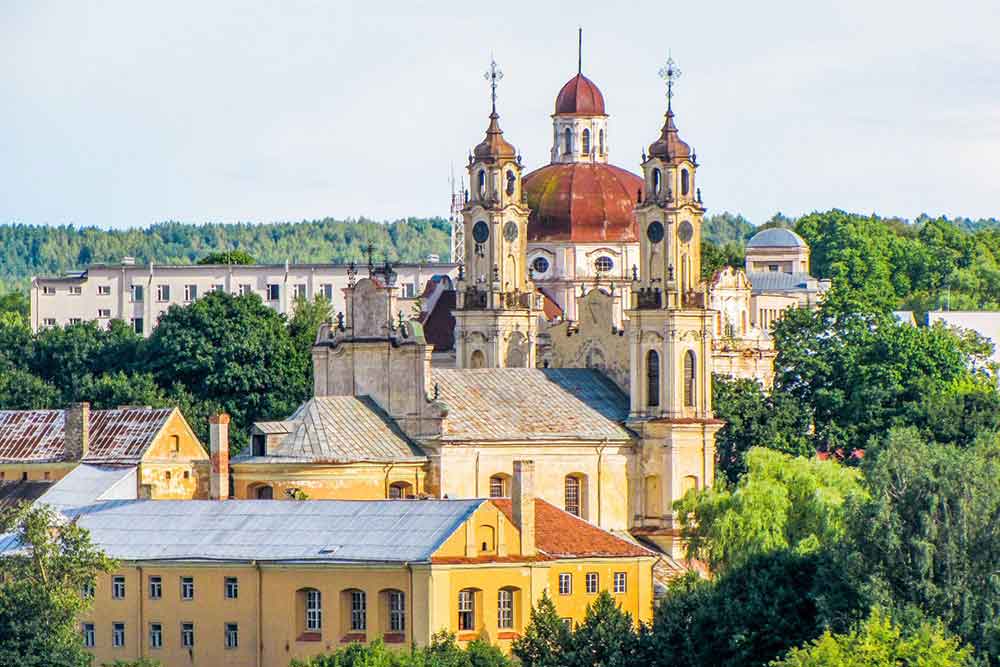
This post may contain affiliate links. To find out what this means and more information visit my disclosure page .
Top 3 Things To See In Lithuania
Organised tours of the baltic states, street art of tartu, druskininkai, what currency does the baltic states use, save it for later, best of the baltics – overview.
This best of Baltics travel guide is divided into sections. The first part gives a list of the 3 top things to see in the Baltic nations as well as gives some useful information to read before you visit.
The second section goes into the best things to see in each of the Baltic with insider information about what to expect, getting there, and the location.
Finally, there’s an FAQ section which answers any other questions you might have about planning your trip to the Baltics. You can also download this free checklist, planner and information sheet straight to your inbox.

Your download is on its way to your inbox 🙂
Top 3 Things To Do In The Baltics – By Country
If you’re planning your Baltic itinerary, and only have a limited amount of time then this section covers what to see in Latvia and Lithuania as well as Estonia. You could easily visit all these highlights within a week, especially if you have access to your own transportation .
Top 3 Things To See In Estonia
- Tallinn UNESCO Historical Centre
- Lahemaa National Park & Viru Bio reserve
- White Sandy Beaches of Pärnu
Top 3 Things To See In Latvia
- Riga UNESCO Historical Centre
- Art Nouveau District, Riga
- Jurmala Beaches & Villas
- Vilnius UNESCO Historical Centre
The Hill of Crosses
Trakai castle, baltic states travel guide – useful info.
So, you’ve got an overview of what to see in the Baltic states. If you’re in the planning stages of your Baltics vacation, this section covers some useful information to know before you get there.
You can easily do the items listed in this article by public transport, especially if you base yourself in one of the nation’s capitals. The Baltic states also make for a great road trip destination . If you want someone else to do the leg work, then you can also join a small group guided tour.
Getting To The Baltic States
It’s easy to get to the Baltic states, you have several options. The obvious is to fly, Tallinn, Riga and Vilnius all have international airports.
You could also opt for entry via land – the Baltic states share borders with Poland, Belarus and Russia with trains and buses going from each. To get the best deals on travel, book in advance using the Omio App .
Getting Around The Baltic States
When you plan your Baltics itinerary take into account how you’re going to get around. I started in Estonia and worked my way down through Latvia and then Lithuania. Each of these cities is connected by an efficient bus service.
You could fly between each country, but honestly, it’s not worth it. By the time you get to the airport, check in, and wait, it’s quicker to go by land.
An alternative is to rent a car and drive. Roads in the Baltic states are well maintained, and outside of the cities, there’s little traffic, so this is a great destination for a road trip.
If you’ve only got a limited time, don’t want to navigate the public transport system or hire a car, then an alternate way of visiting the Baltic States is on a small group guided tour .
Check Availability: Best of the Baltics Highlights 8 Days Tour
What To Do In The Baltics: 23 Things For Your Baltic Bucket List
This section goes into the best places to visit in Baltic States and is categorised by country. Don’t forget you can download this Baltic best-of guide straight to your phone for future reference.
Best Things To See In Estonia
Because of how close it is to Finland, a big chunk of Baltics tourism goes to Estonia as day trips between Helsinki to Tallinn . The city certainly has the most Scandinavian feel compared to the likes of Riga and Vilnius.
Aside from Tallinn, there’s an abundance of things to do in Estonia, and although I really liked all of the Baltic states, this country was my personal favourite. Here’s the lowdown on the best things to see.
Tallinn Historical Centre
Undoubtedly, one of the best things to do in the Baltic States is to spend time exploring the UNESCO listed city of Tallinn .
You might be wondering which is the best Baltic city. Truth is, they are all stunning. However, Tallinn, for me, was the most visually beautiful. The UNESCO listed historical centre ticks every box for being a quintessential mediaeval city, with walls, defence systems connected by a myriad of pretty cobbled courtyards and alleyways to spend hours getting lost in.
The city is also rich in history, which includes a pretty harrowing Soviet past. There is still an abundance of relics left from the Soviet era including the eerie KGB prison and headquarters, which is actually housed in a beautiful Art Nouveau building right in the heart of the old town.
Check Availability: Tallinn City Tour with Local Guide

Inside the historical centre, there are so many things to see. Tallinn is best explored on foot as the city is compact and mostly pedestrian. The city is surrounded by hills, and there are several look-out points dotted about to walk up to and take beautiful panoramic photos of the city going past the fantasy like Alexander Nevsky cathedral.
One of the most popular things to do in the historical centre is to walk around the remaining segments of the city walls. Once, these surrounded the entirety of the city to protect it from invaders. Today, they no longer make a complete circuit, but you can walk along parts of it. Lots of the sections still have watch towers to climb.
If you want to learn more about the history of the city, then it’s worth doing a walking tour of Tallinn with a local guide to give you more insight into the city.
Make sure you visit the gigantic and rotund Kiek in de Kok. Ideally, you’ll want to spend a couple of hours here. This building also houses the entrance to the super eerie Bastion passages which are built under the city and used in several wars. If you’re looking for a great Instagrammable spot, then be sure to visit St Katherine’s passage.

Tours of Tallinn
There’s a lot to do in the Estonian capital, it’s a great city to wander about by yourself. However, to make the most out of your time in Tallinn, I reccomend joining a tour.
Related Article: 33 Things To See In Tallinn
If you want to escape Tallinn and leave the other tourists behind, you should catch a bus to Kuressaare. This town, with its cute historic centre, is located on Saaremaa, Estonia’s biggest island.
Most travellers visit Kuressaare to see the Episcopal Castle, a huge fortification that dates back to the 14th century. From its towers, you have a great view of the town, but the highlight is the museum inside the castle.
Here, you can learn everything you’ve ever wanted to know about the history of Saaremaa. Oh, and did we mention the hidden passageways? The castle is full of them, small, winding staircases that you can take to get from one floor to another.

If you’re tired of climbing stairs, it’s time to relax. Kuressaare is famous for its spas, and here, you’ll have the chance to unwind in a typical Estonian sauna. If you travel to the Baltics in the low season, you could even look into renting a room in a spa hotel. They offer great discounts in winter.
In the evening, we recommend having dinner in a traditional windmill. Here, you can try lots of typical dishes from the region, like wild boar or kama jelly. Give it a try; we’re sure you’ll love it.
Explored by Daniel and Ilona from Top Travel Sights
Mooska Farm Smoke Sauna
Located in Võru County 3 hours from Tallinn, Mooska Farm Smoke Sauna is an Estonian must-see! Mooska Farm Smoke Sauna is a farm and smokehouse, but the traditional Estonian smoke sauna is by far the biggest attraction here.
No Baltics tour would be complete without experiencing a traditional sauna. The smoke sauna experience has been awarded a UNESCO Intangible Cultural Heritage of Humanity certificate and is meant to improve your overall sense of wellbeing – in body, mind, and soul. It gave us important insight into local traditions and was an experience we will remember for years to come.
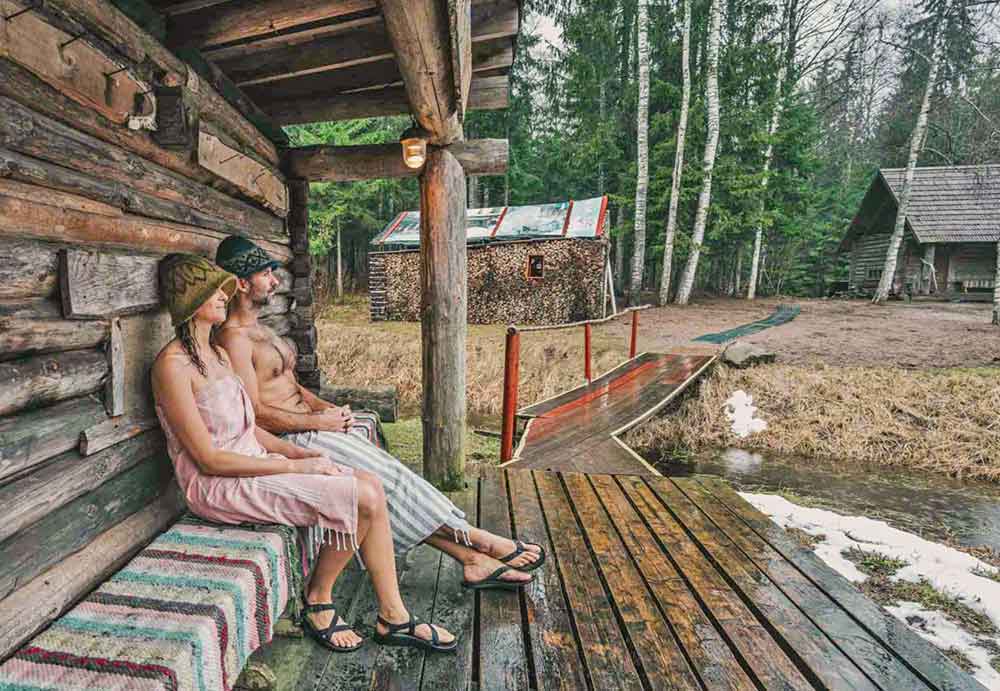
The 3-hour Smoke Sauna experience is guided by the mother of the smoke sauna and wonderful hostess, Eda. She’ll instruct you in and out of the sauna and lead the chanting, meditation, and whisking with leaves, twigs, and honey scrubs. There is also an optional ice-cold skinny dip!
Meats are traditionally cured inside the Estonian smoke sauna and after our sauna experience, we were given the chance to try some alongside other local products from the farm. The meal was homemade and made us feel like the food was reason enough to visit the farm.
Depending on the time of the year, you can also partake in a nature tour with Mooska Farm which typically involves snowshoeing, skiing, or walking through the local forest.
Explored by Oksana & Max from Drink Tea & Travel
Pärnu is home to one of the best Baltic beaches, and one of the most popular beach destinations across the three Baltic States. Czars and Russian officials made the journey here for their retreats and tourists continue the tradition every summer.
During the long summer days, the town roars to life with tourists and the sandy shores of the Baltic Sea become party central. When the temperature drops, though, it becomes quiet once again and a peaceful place to wander.

Did you know that Pärnu was where Estonia’s independence was first proclaimed? It was read in 1918, and not in Tallinn, from the balcony of the old Endla theatre. The Soviets may have demolished it and a new one was rebuilt in the city, but a replica of the balcony has sprung up in the original spot, with the proclamation inscribed on it. You’ll find it close to the bus terminal.
Away from the beaches, there is still plenty to see in Pärnu during the off-season : A leisurely walk (watch out for the black ice in winter!) takes in marshes teeming with birdlife, traditional wooden houses, including the poet, Lydia Koidula’s, childhood home. You’ll also find decorative art nouveau buildings such as the Villa Ammende, along with historic mud baths and ancient fortifications like the red tower and the Tallinn gate.
It’s enough to turn a rest stop on the Riga-Tallinn journey into an overnight stay.
Explored by Nicholas from Rambling Feet
The Struve Geodetic Arc
If you’re into the sciences or even interesting facts, then this is a must-see on your Baltic States itinerary. The Struve Geodetic Arc is a series of triangulations done by Tartu University astronomer and geographer Friedrich Georg Wilhelm Struve between 1816 and 1855.
The measurement of the meridian, which used the observatory at Tartu University in Estonia as its base point, represented the first accurate measurement of a long segment of an earthly meridian.
This work helped determine the exact size and shape of the planet and marked an important step in the development of earth sciences and topographic mapping.
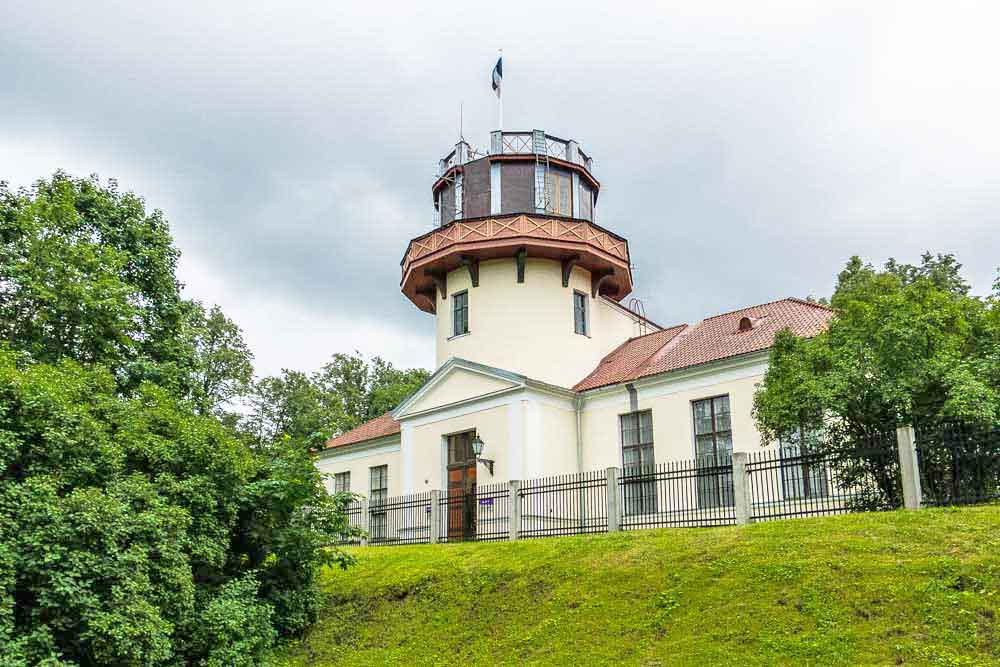
Struve did important early astronomy work on the nature of binary stars. But his actual thesis work was on determining the exact geographic coordinates of the Tartu Observatory. This, indirectly, led to his geodesic project.
The observatory is no longer in use, but now serves as a museum and includes many of the measuring instruments, many handmade by Struve, that he used in his work in mapping and astronomy.
The Tartu University site, along with other points along the meridian in 10 countries stretching from Norway to the Black Sea, are a UNESCO World Heritage site.
Explored by Tom from Travel Past 50
Lahemaa National Park
After touring the cities, it’s sometimes nice to take a break from the concrete and decompress in nature.
Estonia never gets its dues as a significant tourist attraction. When someone mentions Estonia, the first reaction is “Brrrrr. It’s cold.” Yes, the country borders Russia and the capital city of Tallinn is only a 2.5 hour ferry to Scandinavia, but summers in Estonia are a hidden gem.
Lahemaa, the largest national park in Estonia, is a short 1-hour bus ride from Tallinn. If you don’t want to go by bus, then book onto a full day tour of Lehemaa instead.
Summer days this far north of the equator mean EIGHTEEN hours of sunlight. The seemly endless days allow for exploring Estonia’s gorgeous national parks, of these fantastic natural areas, I highly recommend adding Lahemaa to your Baltic travel itinerary.
Check Prices: Tallinn To Lehemaa National Park Full Day Tour

The park is perfect for a picnic in the forest, exploring quaint seaside villages, overnight glamping at the eco-hostel at Projekt Kodu, and hiking the wooden planked path of the Viru bog. Viru bog hike is a uniquely Estonian nature walk.
The 2 to 4-mile hike is over a giant biodiverse peat bog. To keep from disturbing the ecosystem, you hike over wooden planks. The path is well marked, simply follow the planks, with information signs highlighting the plants you will commonly encounter.
The highlight is the view from the lookout tower overlooking the dark pools of bog water. From that viewpoint, I felt transported back into time, as if I was looking over a scene from Jurassic Park.
Explored by Marco from Nomadic Fire
The university city of Tartu is located 186 kilometres (116 miles) southeast of Tallinn and is the hub of Estonian street art . So much so that each year there is a street art festival, Stencitibility.
Although technically street graffiti is an illegal activity in Estonia, the festival has been running for over 10 years. If you’re a fan of street art, then this is one of the best Baltic cities to visit to find it, in abundance.
The styles differ and are created by local and international artists. With pieces ranging from playful and cartoon-like, to full on political satire. No matter where you walk in the city, you’ll pass some form of street art that adorns every possible surface.

Large murals decorate the walls of buildings, but you’ll also find artwork on letter boxes, street lamps, doors and roads. Don’t forget to look up and back over your shoulder. You’ll be surprised by how much artwork you will see.
Urban art is a constantly evolving medium, with new pieces cropping up all the time. I’m sure you’ve heard of the urban artist, Banksy, well Estonia has their own answer who uses a similar signature stencil style with pieces provoking political and social issues. Again, like Banksy, Edward von Lõngus keeps his real identity hidden.
Read Next: Visit Tartu – Estonia’s Street Art Capital
Best Things To See In Latvia
Baltic states tourism is alive and kicking in Latvia. Nestled between Estonia and Lithuania, this is the middle sister that attracts visitors passing through the states, with the capital Riga a solid favourite.
There’s an abundance of things to do in Latvia. Here’s the lowdown on the best things to see.
Riga Historical Centre
The Latvian capital has been dubbed the ‘Paris of the north’. It’s easy to see why; beautiful architecture, located on a river and plenty of café culture. If you’re spending any time in Latvia, make sure that you dedicate a couple of days to explore Riga city .
The Old Town of Riga is a listed UNESCO heritage site and is filled with remarkable buildings and picturesque cobblestone alleyways. The historic centre has been lovingly and painstakingly restored and brought back to their original glory after the city’s turbulent past.
The compact city is ideal to get lost in. When you visit Riga, be sure to see Town Hall Square and make sure to visit the House of the Blackheads . The colourful unmissable facade is one of Riga’s oldest and most beautiful buildings.
Book Here: Riga Guided City Walking Tour

Then climb one of Riga’s most iconic landmarks, featuring the bulbous spire, St Peter’s Church for an amazing view across the river and the city. If you want to learn more about the history of the city, then book onto a guided Riga city walking tour .
If you’re after one of the livelier places in Riga, then head to Livu Square or the areas surrounding the cathedral where you’ll frequently find street entertainers, live music and market stalls as well as plenty of places to drink. Don’t forget to try the local drink; Riga Balsam!
For the architecture aficionados, then Riga is also the Art Nouveau capital of the world . Albert Street is where you’ll find the highest concentration of them. It’s certainly worth half a day exploring the opulence of a bygone era. If you have more than a couple of days in Riga, then it’s also worth doing a day tour out to Rundale Palace.
Tours of Riga
There’s a lot to see in Riga. One of the most efficient ways to see the best of the city is on a tour. You might like these Riga city tours.
Read Next: The Complete Guide To Riga
Kemeri National Park
If you’re wondering what to do in Latvia to get away from the bustle of the city, then head out to explore some of the unique nature tucked away in the region.
Kemeri National Park is located about 45 minutes away from Riga, Latvia, and makes for a perfect day trip from the city . The park is home to stunning bogs, forests, therapeutic mud, and mineral waters.
Popular things to do here include hiking through the park including the Great Kemeri Boardwalk, Lake Sloka, Forest House, and Lake Kanieris. It’s also a great place for birdwatching and cycling.
Check Availability: Full Day Trip From Riga to Kemeri National Park

The most popular and beautiful thing you can do in the park is to walk the Great Kemeri Boardwalk at sunrise. You’ll be shrouded in mist, walking through the bog, enjoying the painted sky, wrapped in silence. Towards the end of the walk, climb to the top of the observation tower for amazing 360-degree views of the entire bog.
To get to the Great Kemeri Bog Boardwalk, you can take a train from Riga train station every 2 hours for just a few euros. Get off at the Kemeri Railway Station. It’s a bit of a walk from the train station to the beginning of the hike, follow the signs for “Leila Kemeru tirela taka”. If you don’t want to go by train book a tour to Kemeri from Riga .
If you’re travelling the Baltics by car, then you’ll be glad to hear there is plenty of free parking at the park.
Explored by Kelly from Snap Travel Magic
Gutmanis Cave
Gutmanis Cave is located in the Sigulda region of Latvia, about 1 1/2 hours by bus from Riga. It’s not very big, but what makes Gutmanis Cave famous is the number of legends that happened here. The most famous one is The Rose of Turaida, a Latvian love story.
This tragic tale is about a girl who was found as a baby during the Swedish – Polish war. She was adopted, baptised and given the name Maia. One day she fell in love with a gardener named Victor Heil and soon after they were engaged.

Legend says they met at Gutmanis Cave in the evenings, but an army deserter named Jakubowsky also fell in love with Maia. One day Jakubowsky sent Maja a love letter pretending to be Victor asking her to meet him at the cave. She arrived, and Jakuboswky appeared out of the shadows and attempted to force himself on her.
She begged for him to stop and said in return, she would give him a scarf that would protect him from all injuries, and if he didn’t believe her, he could try it out on her first. He stabbed her with his sword as blood gushed from her neck. She would have rather died than betray her fiancé.
Today, every Latvian knows this story, and if you visit the Sigulda region during your Baltics travel you will certainly come across it. It’s so famous that there is even an opera based on the legend.
Explored by Marika from Clumsy Girl Travels
A warm sea breeze, colourful art nouveau villas, flower-lined pedestrian streets, and a carefree attitude are just some of the signature hallmarks of Jurmala .
This cheerful little resort town is located right in the middle of the Gulf of Riga, and just 40 minutes from Latvia’s capital, Riga. For added effect, take the retro elektrichka (electric train). If you’re pushed for time, you can also book a half day trip to Jurmala .
If you’re travelling to Latvia, don’t miss visiting Jurmala – especially in the summer!
Although this town was known for its healing sanatoriums back in the USSR, it hasn’t lost its charm. It’s still the go-to place for travellers around Eastern Europe.
Book Here: Jurmala Half Day Tour From Riga

Grab a towel and start your trip at one of Jurmala’s beaches. My personal favourite is Majori beach, which is clean, has plenty of space to spread out, and is close to the centre. If you prefer something more active, then hire a bike and cycle along the coast .
Speaking of the centre: don’t travel to Jurmala without taking a casual stroll along Jomas Street! This is the main high street of Jurmala and is full of beautifully photogenic villas, boutique shops selling local Latvian goodies, and delicious cafes.
If you’re craving nature, the Dzintari Forest Park is the place to be: It’s the perfect spot for families, as there’s an entire children’s area. Whether you’re travelling to Latvia for a day or a week, Jurmala is a must for any Baltic States travel itinerary!
Explored by Luda from Adventures with Luda
Ventspils is a great stop off for a Baltic Road trip. Founded over 700 years ago this beach city is located on the western coast of Latvia. Ventspils is known as the Latvian capital of flowers and fountains.
Ventspils Port is Latvia’s oldest and one of Europe’s busiest ports. In the town centre, there is a beautiful historic carillon bell which plays the melody “Pie dzintara jūras” each hour. Other must-visit places are Livonian Order Castle and Ventspils Town Hall Square.
The entire city is adorned with flowers from spring to autumn. It is famous for its artistic spirit and numerous cow sculptures around the city. During the ‘City Festival’ in August, florists from Baltic states cover the Promenade of Ostas Iela with carpets of flowers. During this time, you will find several extraordinary flower sculptures and unusually shaped greenery, flower beds, and fountains all around the city.

Like many of the beaches in the Baltic States, Ventspils offers a beautiful white sandy beach with special areas for surfers and nudists as well as having plenty of amenities nearby.
If you want to learn more about the history of the area, you can discover Ventspils’s marine history in the Seaside Open Air Museum with its nostalgic collection of fishing boats, nets, and huts. Take a beautiful ride on a narrow-gauge steam train running from here.
If you’re after souvenirs, Ventspils market square is the best place for buying locally made products. The market was established in the 17th century and alongside the handmade gifts, you’ll find locals shopping for vegetables, fruits, clothes, flowers, plants and meat. If you have time, and you’re on a Baltic States road trip, you could spend at least a couple of days in Ventspils.
Explored by Moon Ray from Nomadic Mun
Sigulda is one of the most charming, yet underrated and lesser visited towns of Latvia . If you’re wondering what to see in Latvia that’s a little off the beaten track, then this is a true hidden gem.
Known as the ‘Switzerland of Latvia’, this region has an abundance of appeal for active travellers. I recommend renting an electric bike for half or a full day or joining a hiking tour of Sigulda . This way you can get closer to wonders like the Sigulda castle.
Take the cable car to the opposite slope passing over the Gauja river, the Sigulda’s bobsleigh track, and the hipster Jāņa market; a great option to stop for lunch and coffee.
Book Here: Full Day Tour From Riga to Sigulda with Castle, Ruins and Cave Visit

If you have your own vehicle, you can go a little further to discover places like Gutman’s cave, Krimulda manor, and Turaida museum. Finally, if you enjoy walking, don’t miss the nearby Cecili and Amata hiking trails in the wonderful Gauja National Park, a short distance from Sigulda.
If you don’t have a car, then book on to one a full day tour to Sigulda instead.
Ideally, you would want to visit Latvia between late spring or early autumn to make the most of the outdoor activities, however, if you visited during the winter, then be sure to add a visit to a local sauna into your plans.
Explored by Inma from A World to Travel
Best Things To See In Lithuania
Lithuania is the largest of the 3 Baltic states. Along with another UNESCO listed historical capital, there’s a load of stuff to see here.
Wondering what to see in Lithuania ? Here’s a list of the best things to see.
Vilnius Historical Centre
The Old Centre of the Lithuanian capital is one of the most beautiful Baltic cities, and as with Estonia and Latvia, is listed as a UNESCO world heritage site. The mediaeval city is known for its mixture of architectural styles with a huge emphasis on baroque style buildings.
A guided walking tour of Vilnius will give you loads of insight into this fascinating city. The main hub of the Old Town is Pilies Street and Gediminas Avenue. Both are lined with these exquisite buildings which are now a buzz with stylish cafes. boutique restaurants and often lined with street markets.
You could easily spend a couple of days in Vilnius getting lost and exploring the quaint cobbled paths, courtyards and alleyways. Be sure to visit Cathedral Square, the Vilnius Cathedral and the Town Hall Square as well as one of Vilnius’s most beautiful buildings, the Vilnius University – it’s got 13 courtyards!

Other must-see places are St. Anne’s Church and the Gate of Dawn, a 16th-century gate which once guarded the entrance to the original city.
One of the more interesting areas in Vilnius and certainly worth a few hours is the autonomous district of Užupis. This community within the city is filled with quirky artwork often made from recycled and reclaimed materials and thought-provoking and sometimes political messages.
Just outside of the historic city centre, you’ll find that Vilnius also has an outstanding street art scene.
Tours of Vilnius
Just like the other captials mentioned in this article, there’s a lot to see in Vilnius. This is another UNESCO listed city with an abundance of things to see. To make sure you don’t miss anything, book onto a guided city tour.
If you’re looking to get into a bit of Lithuanian history, Trakai Castle is for you. Completed at the start of the 15th century, this mediaeval castle stands proudly on an island in Lake Galvė in the town of Trakai. While the castle itself became obsolete centuries later, it stands as an important symbol of Lithuanian statehood.
To get to the Castle, you take a long wooden bridge from the shore across the lake. In the summer, the lake provides a beautiful relaxing escape from the city. In the winter, you can walk across the frozen lake to get to the Castle (ice conditions depending).
Inside the castle walls, there are numerous areas like the courtyard, keep, and chapel that you can explore. Spend some time wandering around the gallery rooms reading and exploring the artefacts. Trakai Castle is a great place to learn about the history of Lithuania .
Check Availability: Guided Tour of Trakai Castle

It is really easy to get to Trakai. The town is only about 40 minutes drive from the capital, Vilnius. Take the bus from Vilnius. The bus station in Trakai is south of the castle so you walk through the town – with cafes and shops – before spotting the castle across the water.
Because Trakai Castle is located on an island in the middle of a lake, there are various ways of seeing it; by kayak in the summer and by kick sledge in the winter when the lake is frozen.
Explored by Eric from Penguin and Pia
Located in the north Lithuania, not far from the small unassuming town of Šiauliai, you have perhaps the most fascinating thing to see anywhere in the country and also one of the best places to visit in the Baltics.
Thousands upon thousands of people flock here every year to visit the Hill of Crosses . A small hill in the countryside, dominated by more than 100,000 crosses!
Pilgrims have congregated here ever since the 1800s when there used to be a matter of hundreds of crosses here. In recent decades’ popularity has exploded and now it’s a wonderful sight to behold regardless of whether you are religious or not.
In 1993, the Hill of Crosses was so widely renowned that it was worthy of a visit from the then-reigning Pope John Paul II.
Book Here: Hill of Crosses Guided Tour with Transportation from Vilnius

Even if you aren’t religious, most people still find their visit here to be pretty magical. It’s fascinating walking up and over the hill taking in the incredible array of crosses, and the pictures look pretty cool as well!
After your visit, take some time to walk a bit further out from the hill, enjoying the large church behind as well as taking in views of the never-ending Lithuanian countryside in all directions.
A no-fuss option for visiting Hill of Crosses is to opt for a tour that includes transportation and a guide .
Explored by Bradley from Dream Big, Travel Far
If you’re looking for the perfect small city to visit in the Baltics, then you really can’t go wrong with the charming port city of Klaipeda. Often overlooked as simply a jumping-off point for the Curonian Spit, there are several things to do in Klaipeda that make it worth visiting in its own right.
As a very important ice-free port in the Baltics, Klaipeda has been a strategic city for centuries, giving it a robust and interesting history.
There is plenty of maritime history here that is worth learning about and a few museums that can help you to understand just how influential Lithuania’s third-largest city historically was. One of the most relaxing ways to explore Klaipeda is from the water in a handcrafted canoe .

Along with boasting a charming riverside pathway lined with lovely historic ships, Klaipeda also has a pretty old town worth wandering through and a great restaurant scene that showcases the newfound love for modern Lithuanian cuisine.
The city also has a couple of beautiful, white-sand beaches perfect for taking advantage of the long, sunny days of a Lithuanian summer.
Explored by Maggie from The World Was Here First
Grūtas Park
If you’re interested in either dark tourism, or Soviet history, then Grūtas Park will be one of the top things to do in the Baltics. Grūtas Park is located in southern Lithuania, not far from the border with Belarus. The nearest town is Druskininkai, about eight kilometres away.
When Lithuania declared its independence from the Soviet Union in 1990, the Soviet statues that had been on display in public spaces were pulled down and dumped in various places around the country. Then in 2001, a wealthy local man collected them and turned them into a kind of Soviet theme park, nicknamed “Stalin World”.
Check Availability: Dzukija National Park and Grutas Park Full-Day Tour

This idea was opposed by many at the time and remains controversial today, but the intention was never to glorify the Soviet regime. When you look at the park’s recreation of prison camps, barbed wire fences and guard towers, it’s clear that the purpose is to document the horrors of this difficult time in Lithuania’s history.
For a better insight, it’s worth exploring the parks and statues as part of a guided tour .
Among the 86 statues in the park, you’ll find a dozen or so of Lenin and even two of Stalin, which is pretty unusual. Even today, you’ll often come across Lenin statues while travelling in Russia and some other former Soviet countries. But de-Stalinization has been ongoing since the 1950s, so it’s rare to come across an image of him.
While I understand why some Lithuanians are not in favour of the park, I believe that it can help locals and visitors alike to better understand the country’s recent history.
Explored by Wendy from The Nomadic Vegan
Any trip to Lithuania, particularly in the summer, wouldn’t be complete without at least a day trip to Palanga! The Baltic sea brings large crowds together in the summer months when visitors can get their fill of swimming, sunning, and playing in the sand.
One of the most famous Baltic sea landmarks is the Pier of Palanga. It’s a great spot for photos as you head to the ocean, which you can also walk under depending on the tide. I highly recommend spending time at the Seaside Regional Park, a unique gateway to the sea with large trees that line the sand out to the water in some places.

This park is noted for the Dutchman’s Cap, which is a sand-dune climb to the highest elevation. Seaside Regional Park is also a breath-taking spot for sunsets. Bring a picnic basket and settle in the sand for a gorgeous light show through the trees.
Besides the typical beach activities, tourists can rent bikes to ride through green forest paths. A family favourite is the nearby Lithuanian Fairy Tale park, which features several interactive sculptures that kids like to climb and play on.
Palanga is located in the northwestern-most tip of the country, so it is an easy addition to any road trip through Lithuania and its neighbouring country, Latvia.
Explored by Monica from This Rare Earth
Dvina Missile Base and Žemaitija National Park
In September 1960 the Soviets started a top-secret construction. 10,000 soldiers moved to Žemaitija National Park, in northwest Lithuania to build a nuclear missile base that had the potential to destroy every city in Europe.
Once completed, its strategic importance to the Soviets in the Cold War was second only to Cuba. One of the best ways to enjoy the Žemaitija National Park is by canoe .
It was finally discovered in 1978 by U.S. reconnaissance teams but had been decommissioned 4 years earlier. Thankfully no missiles were ever fired.
Check Availability: Full Day Canoeing at Žemaitija National Park

Now it’s one of the very few nuclear missile silos in the world actually open to the public as a museum. The 100-foot deep missile silo is a highlight, tours also include displays of propaganda and the history of the Cold War.
You can easily visit the Cold War Museum when taking a road trip through the Baltics and enjoy the Žemaitija National Park that surrounds it. The vast parks, forests and lakes are home to rare wildlife such as Lynx and are well worth spending a day or two exploring while travelling in Lithuania.
Explored by Jo from Lost Wanders
Kaunas, the second-largest city in Lithuania, is one of the coolest places to visit in the Baltic States. The city has big historical value, it used to be an important trade centre in the region in the 15th century, in the interwar period Kaunas was the capital of Lithuania.
These are not the only reasons why you should visit the city! With its diverse history, old port and wars, Kaunus is steeped in ghostly stories.
With all the great things to do in Kaunas , you won’t be bored there for sure. Besides the traditional monuments; churches, old houses, and the remnants of the castle from the 14th century, Kaunas offers a great street art scene, exceptional modernist architecture from the interwar period, and some unique museums (like the only Devils Museum in the world).

This is also the only city in Lithuania with funicular trains, there are two of them in Kaunas, both built before World War 2. The coolest spot to visit in the city is the hidden Yard Gallery.
A local artist wanted to bring the community together and created a real wonderland, with numerous art installations, street art and photos of Jewish families that used to live in that complex.
When you get hungry numerous restaurants and cafes along Vilniaus street and Laisves avenue invite you to sit down, relax and enjoy the vibrant atmosphere of Kaunas.
Explored by Kami from My Wanderlust
Curonian Spit
On the western edge of Lithuania, drawing a line across the edge of the Baltic Sea lies the Curonian Spit; a thin strip of land 61 miles long and just over a mile wide that connects Lithuania to a small piece of Russia.
This idyllic gem is a UNESCO World Heritage Site shared by both countries and is the perfect destination for beachgoers, casual hikers, sailors, families and anyone who wishes to relax in nature. If you’re after something more active, then you can do a full day by canoe around the spit .
The Curonian Spit has a folkloric creation legend on the Lithuanian side. It was made by Neringa, a beautiful and good-hearted Lithuanian giantess, who collected sand in her huge skirt and poured it out to form the Spit so that it could protect the people on the coast from raging storms. Because of this, part of the land is named in her honour.
Book Here: Full Day Curonian Spit by Canoe

The town of Nida is also a draw for literary enthusiasts, as the Nobel Prize-winning author Thomas Mann spent summers in a holiday home he had built there in the 1930s.
In addition to this, on the Lithuanian side, the Curonian Spit is also home to the Hill of Witches – a supernatural-themed sculpture park in the village of Juodkrante, featuring wood carvings of people and creatures from mythology and supernatural lore.
The easiest way to get to the Curonian Spit is from the town of Klaipeda, and catch the ferry over to the spit.
Explored by Jeremy of Cultura Obscura
Druskininkai is a special place in Lithuania, this city is well known for spas, relaxation, healing mud, clean air, and mineral water. In the 50km spectrum, there are no factories, and Druskininkai is surrounded by forests that’s why the weather there is extremely fresh.
You can pick your own forest goodness like mushrooms, blueberries, cranberries, etc. Actually, this region of Lithuania has an old saying: “if there were no mushrooms and berries then Dzūkų women would be naked”. In the Lithuanian language, it rhymes.

If you love spa holidays or just want to relax for a weekend then Druskininkai is your destination. Also, there are many trekking roads, bicycle roads, lakes, and beautiful nature.
One of the top spas is UPA Medical Spa it is modern and minimalistic, the staff is super professional and they offer a variety of procedures. For top-notch Spa treatments and luxury accommodation, it’s well worth checking out this hotel.
I love that this city is small that’s why all restaurants and hotels personally take care of you and you make really warm memories of your stay. Also, I highly recommend going to a restaurant called “Sicilia” and trying their mussels, it’s just extremely delicious. It is one of the best restaurants in the city where you should come before dinner time during weekends or you will have to wait in line outside.
Recommended by To Youpiter
Best of Baltics – Frequently Asked Questions
So, are the Baltics worth visiting? Yes! I’ve given you plenty of great reasons to go.
This section has the answers to questions that frequently come up about the practicalities of visiting the Baltic states as well as useful travel tips .
What Are The Baltics Known For?
The Baltics are known for their UNESCO capitals, cultural richness, and unspoilt forests and lakes and white sandy beaches.
Can I do a small group tour of the Baltic States?
There are several companies offering tours of the Baltic States. Opt for a small group tour to get the most out of your visit. Check out this great small group tour of the Baltic States .
How do I get to the Baltic States?
Each country has their own designated international airport located just outside the capital. This makes getting to the Baltic States, from destinations within Europe or from as far away as the United States very easy.
Is it easy to travel around the Baltic States?
If you are travelling to the Baltic States without a car or not going on a tour, you’ll be pleased to hear that it’s easy to travel around the countries.
There are decent train and bus networks across all three countries, and services are very affordable and regular. If you really wanted you could get a flight between each of the capitals, but this isn’t necessary as they are only a few hours apart by bus.
A great travel app to search across bus, train and flight is the Omio App.
Where can I find a list of Baltic countries?
This article covers the three Baltic states, it’s made up of just three countries; Baltic countries list = Latvia, Lithuania and Estonia.
Which is the best Baltic country to visit?
It’s difficult to determine which Baltic country is the best to visit as the three Baltic states share a lot of common features as well as having a similar history.
Each of the Baltic capitals holds UNESCO world heritage status, fascinating history as well as beautiful landscapes. Purely based on the capital Tallinn, I thought Estonia was overall the most beautiful Baltic country, then Lithuania and then Riga but this is so subjective.
What are the best things to do in the Baltics?
Not sure what to do in the Baltic states? Here are some great tour ideas to give you some ideas.
When is the best time to visit Baltic States?
The winters in the Baltic States are cold, so unless you enjoy sub-zero temperatures, this probably isn’t the best time to visit the Baltics. However, that said, the festive season can be incredibly picturesque, with the pop-up Christmas markets, particularly in Tallinn.
Also, these countries are geared up for the cold weather, and things like saunas and ice skating are popular activities.
The best time to visit Baltic countries is from late spring through to early autumn, with July and August being the warmest months. Because the Baltic states are located high up in Europe, in June you can expect over 18 hours of daylight per day.
What should I pack for the Baltic States?
It can rain all year round, even in the summer. It’s best to pack layers of clothing, as well as have a lightweight, wind and rainproof jacket.
In the peak of winter, pack a thick jacket, hat scarf and gloves as well as thermal socks and waterproof shoes. It gets extremely cold.
For all year round, pack a pair of comfortable shoes as most likely, you will be doing a lot of walking. Take a pair of shoes with a good grip on the bottom, especially if you’re visiting historical city centres, as often they are cobbles and can be difficult to walk on.
You’ll be glad to hear that the three Baltic nations all use the Euro, so you won’t need to change currency when you enter a new country. Hotels and tourist places will accept cards and ATMs are frequently available.
Planning On Visiting The Baltic States?
If you had any doubts about are the Baltic states worth visiting, I hope this article has answered that.
How many of these places are you adding to your Baltic bucket list? I hope this Baltic travel guide has given you lots of inspiration.
Whether you’re backpacking the Baltics, on a short weekend break to just one of the countries, or on an extended Baltic States vacation, I’m sure you’ll find plenty of places of interest.
If you enjoyed this best Baltic places article , you might also like…
- Riga 3 Days Itinerary
- What To Do In Tallinn
- Estonia’s Street Art Capital of Tartu
If you found this article useful, or know someone that will, then please like and share. Don’t forget to pin it for future reference.
Have a question about visiting the best Baltic State? then head to the Contact page and drop me a message.

Hey, I'm Becki......and I'm a self-confessed travel addict and experience connoisseur!
In other words, I’m a bucket-list traveller, on a mission to experience the best things our fabulous little planet has to offer with the least environmental impact.
When I'm not climbing mountains, scuba diving, spotting wildlife or exploring ruins, you'll probably find me sipping coffee, or with a glass of wine in hand planning my next adventure.
Similar Posts

Best 2 Days in Granada Itinerary 2024
FacebookTweetPin Are you looking for the best 2 days in Granada itinerary? Having lived in Andalucía for several years,…

A Day Trip to Toledo from Madrid
FacebookTweetPin Few people know that Madrid, Spain´s capital, is one of the few places in the world (or maybe…

6 Cultural Tourism Destinations You Must Visit in 2023
FacebookTweetPin Are you looking for a travel experience that is more than just sightseeing? Do you want to immerse…

Best Seville 3 Days Itinerary (by a local!) + map & Tips
FacebookTweetPin Seville, the capital of Andalucía, is undeniably one of the region’s most captivating cities. Its compact size, radiant…

Visiting an Abandoned Amusement Park in Elektrenai, Lithuania
FacebookTweetPin Throughout my time in the Baltic states, I was keen to dig out some abandoned places in Lithuania….

Barcelona Bucket List: 32 Best Things to Do in Barcelona, Spain
FacebookTweetPin Welcome to the ultimate Barcelona bucket list! If you’re planning a trip to this captivating city, get ready…

15 of the Best Towns and Cities to Visit in Greece
From historic hillside cities to island destinations, these are 15 of the best towns and cities to visit in Greece.
More than 27 million travelers made their way to Greece in 2022 , visiting the country's gorgeous islands and coastlines, rural towns, and historic capital city of Athens. One look at its landscapes and it's easy to see why travelers dream of visiting Greece — but there's so much more to this Mediterranean nation.
"Everyone knows that Greece boasts stunning crystalline waters that make you want to dive right in and historical sites that whisper tales of the past. Its culinary delights are a perfect way to wrap up a day of exploring its unique cultural riches and vibrant art scene, but what truly sets Greece apart is its people," Christos Stergiou , a travel advisor with True Trips, shared with Travel + Leisure . "Greeks have this incredible gift called philoxenia: hospitality taken to a whole new level. Our True Trips guests always describe the feeling of having new local friends who'll go above and beyond to make their journey unforgettable."
Ready to plan your getaway? Here are 15 of the best cities to visit in Greece.
Yes, a visit to Athens feels obvious, because not only is it the capital city, but it’s also home to the international airport you’ll likely fly into on your visit. That said, Athens is well worth a trip in its own right, as it’s home to some of the most important historical sites on Earth, including the must-see Acropolis. Need more? Here’s how to spend one perfect day in Athens .
Related: The Best Times to Visit Greece
Thessaloniki
Thessaloniki, located in the northern part of the country, offers a blend of history and youthful energy that few cities can match. “I would recommend Thessaloniki for its long and epic history,” Peter Sommer, founder of Peter Sommer Travels , shared. “The historic center of Thessaloniki is filled with an extraordinary series of ancient monuments, many of them part of an imperial palace complex built by the Roman Emperor Galerius and vast in scope."
Sommer added that there are several museums to visit here, including the Museum of Byzantine Culture and the Archaeological Museum of Thessaloniki. “But history and archaeology aren’t the only reasons to come to Thessaloniki. It’s justly famed for its gastronomy,” Sommer added. “You can savor a huge selection of glorious local dishes and sample a cornucopia of excellent local wines.”
Drive two hours east of Thessaloniki to find another northern city worth exploring — Kastoria. The scenic city sits perched on Lake Orestiada between the Grammos and Vitsi mountains. Visitors can enjoy peaceful boat rides on the lake with any number of outfitters lining the shores, or just watch the local fisherman go to work each day to reel in the catch. Or, book a tour with Adventures With Wine to bike the lake’s shoreline and see all the hidden nooks worth exploring.
“Ioannina truly shines as a city that's a hidden treasure, especially for nature enthusiasts and adventure seekers,” Stergiou shared of the city that sits on Lake Pamvotida. It’s a spot that has inspired many creative talents thanks to its epic vistas, but more than that, Stergiou explained, it’s a fantastic home base for exploring more of the northwest region of Greece.
“In addition to the beautiful lake that stands proud as the city’s landmark, the Byzantine castle, the scenic historical center, and the lively neighborhoods, Ioannina is a gateway to countless incredible experiences within a drive of an hour or two. From there, you can take daily trips to some of the most beautiful villages in all of Greece, such as Metsovo or captivating Zagorohoria, filled with breathtaking landscapes and charming stone houses.”
Kalamata, a city well-known for its olive production, is a place where travelers can get lost — in the best way possible. Come stroll its winding cobblestone streets, explore the castle, and visit museums like the Modern Greek Art Gallery for a well-rounded city escape in the Peloponnese region.
Kalambaka, a city located in central Greece, is famous for its unparalleled view of the stunning Meteora. The city sits at the base of the towering rock formations topped with historic monasteries that date back as early as the 11th century. The complex of monasteries is a UNESCO World Heritage Site , and you can visit many for a small fee.
There are more than 6,000 Greek islands , and while many come with small populations, the island of Rhodes is positively metropolitan thanks to the city of Rhodes. Home to some 50,000 people, the city is famed for its ancient history and the duality of its New Town and Old Town. While there’s nothing wrong with New Town, Old Town is a walled-off time capsule to the past, and it's one of the largest remaining medieval settlements in Europe.
Nafplio, located in the eastern Peloponnese, is a seaside dream packed with Venetian architecture to explore. As Alys Colayera, lead travel expert for Greece at Black Tomato , shared, it’s a “great place to wander through the old alleyways, grab a strong cup of Greek coffee at a local coffee shop in the square, and take a boat to Bourtzi Castle if you are interested in architecture and history.” As for the name of the town, Visit Greece explained that it comes from its mythological founder, Nafplios, one of Poseidon's sons.
One more island city to explore is Chania on the island of Crete. It too is famed for its Venetian harbor and quaint old town. Explore its cobblestone streets, duck into museums like the Maritime Museum of Crete , and shop for souvenirs in its endless boutiques. Pro tip: Leather goods are famously great here, so go ahead and splurge on a bag or a pair of shoes.
While Larissa has a population of more than 130,000 people, it remains a place well in touch with Mother Nature. This city in central Greece is an agricultural hub, growing vegetables, grains, fruits, and more, so it's a great place to dig into some Thessalian cuisine. While in town, explore the Ancient Theatre of Larissa , dedicated to the god Dionysus, to learn more about the area's ancient history.
History abounds in the southern city of Corinth, thanks to well-preserved ruins including the iconic Temple of Apollo and the Acrocorinth fortress. Just an hour from Athens, Corinth and the surrounding coastal towns make a perfect day trip from the capital city, says Colayera.
If you’re making your way to the islands, odds are you’ll pass through the port city of Piraeus. Dozens of ferries come in and out of the harbor each day, but before you board one, spend a little time exploring the city by visiting places like The Hellenic Maritime Museum , which showcases Greece's rich seafaring heritage.
Head north along the Aegean coast to Kavala, a hillside city with gorgeous beaches, sweeping vistas, and an exciting mix of ancient history and modern city life. You can’t miss its imposing aqueduct, which runs for almost 1,000 feet and dates to the 16th century. Once you’re done viewing that, head straight to The Acropolis of Kavala to learn more about this city’s fascinating history.
Find the party in Patras, a university port city in western Greece. Yes, of course, you’ll find history here, including inside the Archaeological Museum of Patras , which showcases goods from the surrounding region dating back to prehistory. But in Patras, you’ll also find a bustling (and modern) nightlife scene across several neighborhoods, including down Riga Feraiou Pedestrian Street, where you can snag a delicious bite of Greek food, too.
Explore one of the most beautiful places in Greece when you plot a trip to Corfu Town on the eastern coast of the island of Corfu. Here, travelers can explore the historic architecture that earned Old Town of Corfu a spot on the UNESCO World Heritage Site list. Tour the fortresses, stroll through the town’s central market, and visit Spianada Square, the largest square in Greece.
For more Travel & Leisure news, make sure to sign up for our newsletter!
Read the original article on Travel & Leisure .
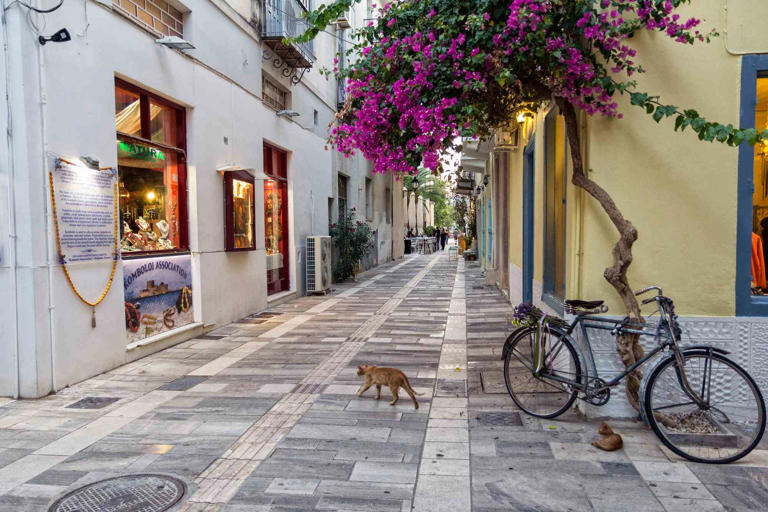

IMAGES
VIDEO
COMMENTS
Lets explore the best places to visit in Estonia: 1. Tallinn. Source: ESB Professional / shutterstock. Tallinn. The mighty rises of Toompea Hill are what define Estonia's magnificent capital; soaring in a curious medley of Orthodox onion domes and medieval bulwarks right in the heart of the town.
Among the best places to visit in Estonia are castles, national parks and cultural hotspots. Tallinn is amazing, but it's not the only Estonian destination worth exploring! 10. Viljandi. In Southern Estonia is the small city of Viljandi. The city has a rich history that is nearly 2,600 years old, and plenty of historic architecture still remains.
12 Best Places To Visit In Estonia In 2024 For Seeking The Ultimate Adventure. Some of the best 12 places to visit in Estonia in 2023 are Tallinn, Lahemaa National Park, Tartu, Rakvere Castle, Soomaa National Park, and many more. Take a look.
Days 4-5: Saaremaa. From Tallinn, it's time to head a bit off the beaten path and visit Estonia's largest island of Saaremaa. The island is very easy to reach via ferry from the town of Virtsu, which is located about 130km south of Tallinn. The ferries leave very frequently and the journey is about thirty minutes.
Estonia Travel Costs. Accommodation - Hostel dorms start at 10 EUR per night for a bed in a 10-20 bed dorm. A smaller dorm with 6-8 beds costs 15 EUR per night. For a private room in a hostel, expect to pay at least 30 EUR per night. Free Wi-Fi is standard and most hostels have self-catering facilities.
13. Haapsalu Old Town. 14. Rummu Prison. Map of Attractions & Things to Do in Estonia. 1. Tallinn's Old Town. Tallinn's Old Town. Whether your visit to Estonia is a full-fledged vacation or just a one-day stop on a Baltic cruise, you should spend as much time as your schedule allows touring Tallinn's Old Town.
The swamps and marshes make much of this park inaccessible, leaving the wilderness mostly untouched. Soomaa is home to a large beaver population as well as elk, deer, wild boar, lynx, wolf and bear in the forests. The pristine and unique nature make Soomaa one of the most beautiful places in Estonia. 8. Rakvere.
Located in the unique and historic seaplane hangar. 3. Toompea Hill. An ancient 10th-century Estonian stronghold stood on this 170-foot-high limestone plateau, which was later divided into the Big and Small Fortress with its distinctive defense towers erected in the early 13th century.
Why you should visit Estonia . Medieval marvels in Tallinn's Old Town.Lively street art in Tartu.Golden-sand beaches in Pärnu.The 160 islands of Vilsandi National Park.. Best time to visit ...
Pärnu, often referred to as the "summer capital" of Estonia, is a charming coastal city in the heart of the country. Known for its beautiful sandy beaches and vibrant atmosphere, it is one of the best places to visit when exploring the cities in Estonia. The main attraction in Pärnu is its stunning beach, stretching along the Baltic coast for about 4 kilometers.
Viljandi quaint town, scenic lake, and Estonian charm at its best. 11. Kihnu Island. Off the coast of Estonia lies Kihnu Island, a realm where traditions are the heartbeat of daily life. This island, one of the most beautiful places in Estonia, is a living museum of the nation's cultural heritage.
Day 4 - Tartu. On day four of this itinerary, it's time to hit the road and visit the country's second-largest city of Tartu. This small city is often overlooked, but it is absolutely charming and well worth exploring. Spend your first day in Tartu wandering around the lovely old town.
Best places to eat with children. ... Estonia's best luxury travel experiences. Is your idea of luxury having unique experiences away from crowds of tourists? Then these are the places for you. 20+ relaxing Estonian songs. After a long day, escape the hustle and bustle with a stress-busting mix of soothing Estonian music.
Wild nature, medieval cities and Nordic fusion cuisine are minutes apart in this compact country, leaving more time to explore. Visit Estonia. It's about time.
Gaze into the cosmos. Take a tour of Tartu Observatory's Stellarium, the largest astronomical observatory in Estonia, to see why the nation is a promising player in the European space industry ...
Museum of Soviet Vehicles. The Museum of Soviet Vehicles is one of the stranger places to visit in Estonia. It's located in the small town of Järva-Jaani in the centre of the country. You will have to rent a car if you want to visit due to its location and the lack of public transport to and from the town.
From the capital cities of Vilnius, Riga, Tallinn and Helsinki to the beaches in Klaipeda in Pärnu. view trip ⤍. See all Estonia trips. Where to go in Estonia. Estonia's capital, Tallinn, has a magnificent medieval centre and lively nightlife, rivalled only by that of Tartu, an exuberant university town.
Estonia is a country in the heart of the Baltic region and offers a delightful mix of history, culture, and natural beauty. From picturesque medieval towns to lush forests, Estonia has something for every traveller. In this article, we will explore the best places to visit in Estonia. Discovering Tallinn - The Capital City
In this comprehensive guide, we'll take you through the 8 best cities in Estonia, each offering its own unique charm and reasons to visit. Tallinn: Where History Meets Hipster Culture. As the capital and largest city of Estonia, Tallinn needs no introduction. A true meeting point of Eastern and Western Europe, Tallinn's Old Town—a UNESCO ...
Top Attractions in Estonia. See all. These rankings are informed by traveler reviews—we consider the quality, quantity, recency, consistency of reviews, and the number of page views over time. 2023. 1. Tallinn Old Town. 14,873. Neighborhoods. This jumble of 14th- and 15th-century architecture with its medieval walls, needling spires and ...
Accessibility. Tallinn is the most visited out of all three Baltic capitals. The city is well-connected with other major cities close by, with frequent bus and train links between cities like Riga, Tartu, and Parnu as well as ferry links to cities like Helsinki and Stockholm. Tallinn is also only about 80 kilometres south of Helsinki and with ferries departing at least every hour, it is a ...
Toompea hill and castle. Towering above the rest of the Old Town, Toompea hill has always been a seat of power. Toompea Castle is the seat of the Estonian Parliament. The castle's tallest tower of the, Pikk Hermann, is a leading symbol of Estonian statehood; the blue-black-white Estonian flag is raised every day at sunrise from the tower to ...
Vilnius Historical Centre. The Old Centre of the Lithuanian capital is one of the most beautiful Baltic cities, and as with Estonia and Latvia, is listed as a UNESCO world heritage site. The mediaeval city is known for its mixture of architectural styles with a huge emphasis on baroque style buildings.
From historic hillside cities to island destinations, these are 15 of the best towns and cities to visit in Greece. More than 27 million travelers made their way to Greece in 2022, visiting the ...
Estonia launched its digital nomad visa in summer 2020. It lets people working remotely for companies abroad - or freelancers with clients mostly abroad - stay in Estonia for up to one year at a time.